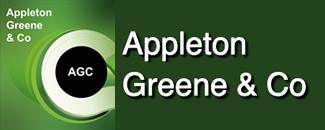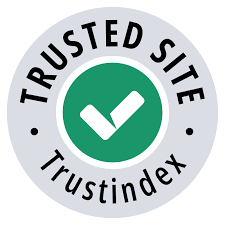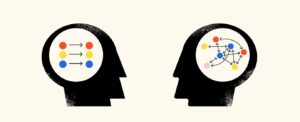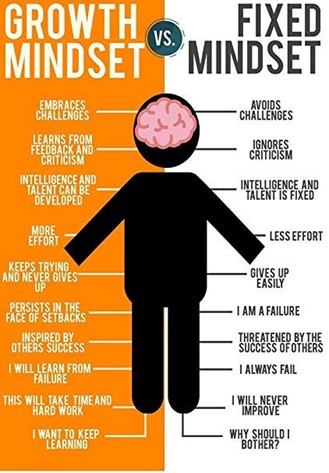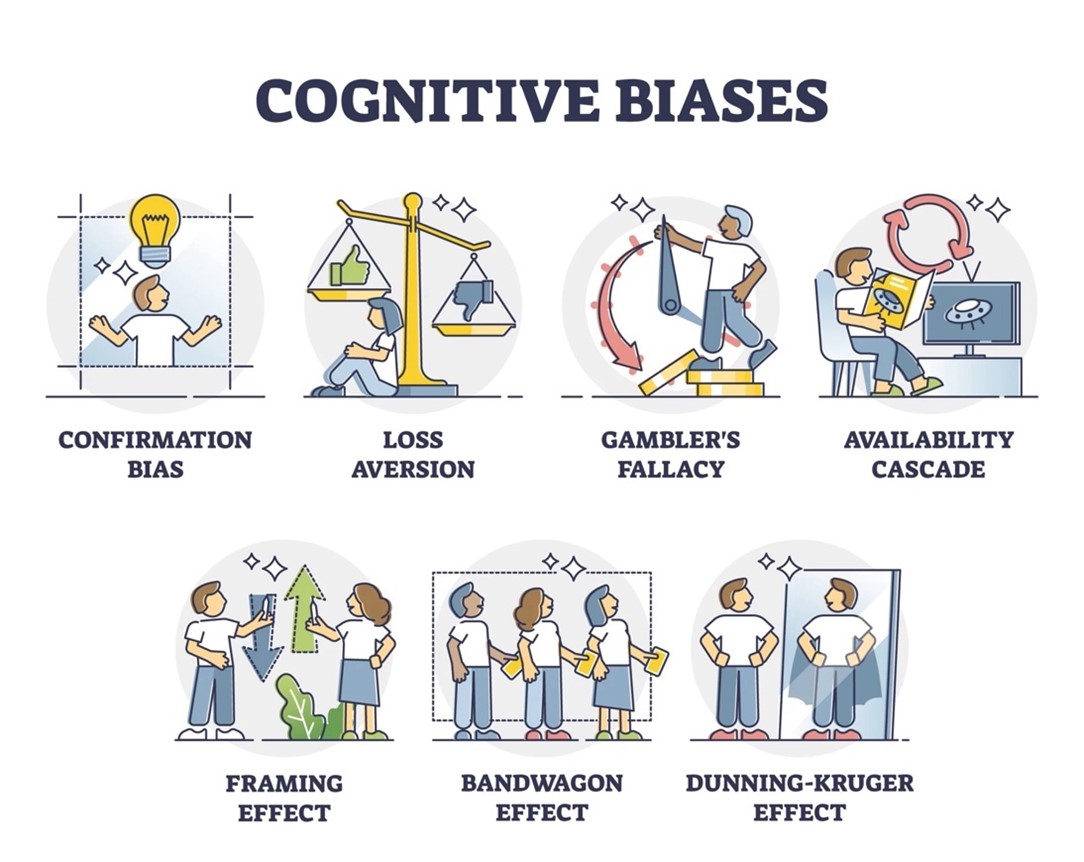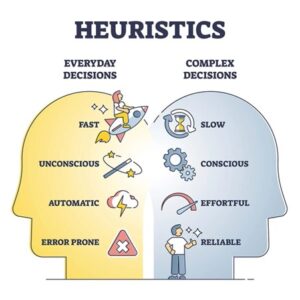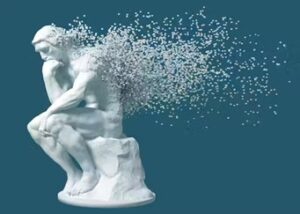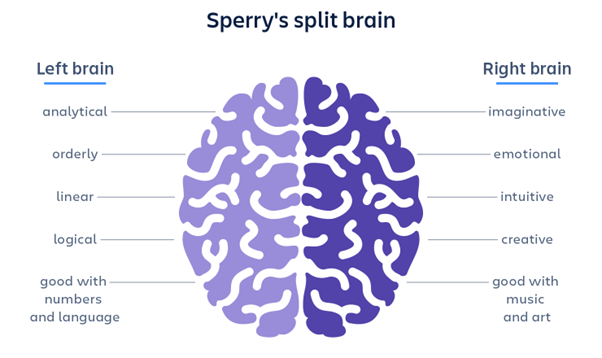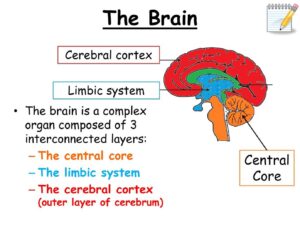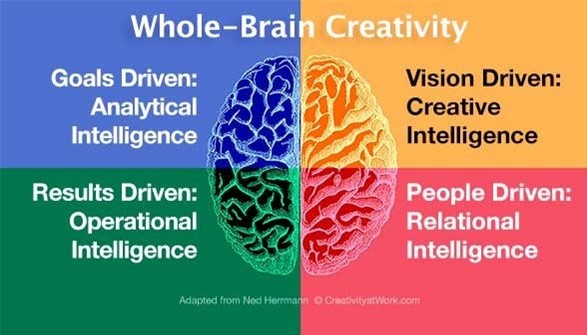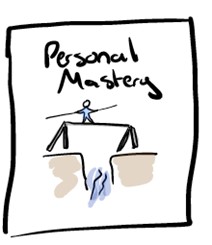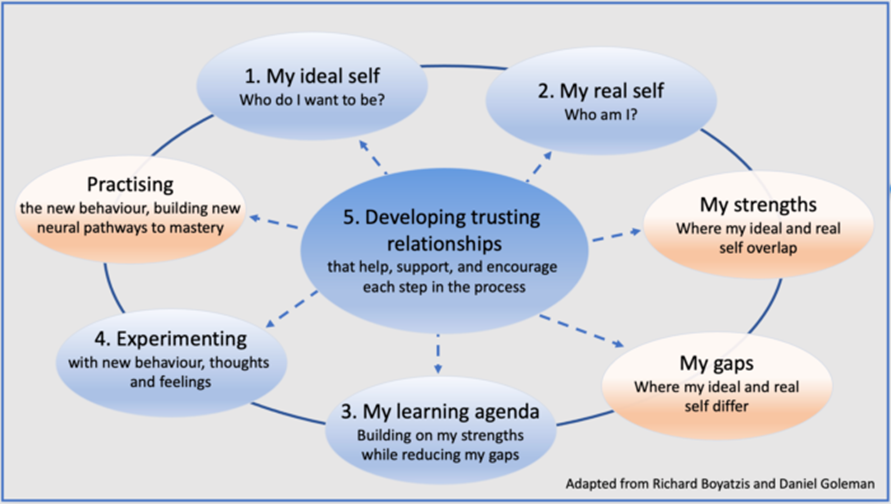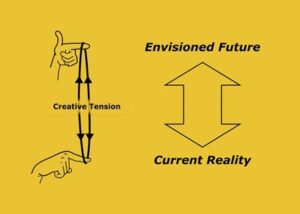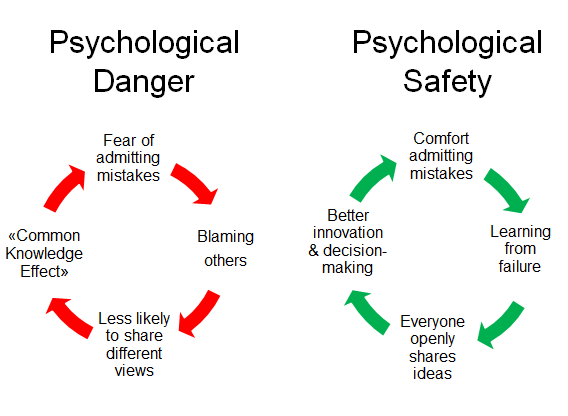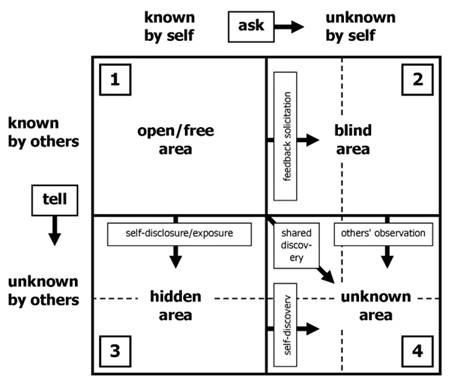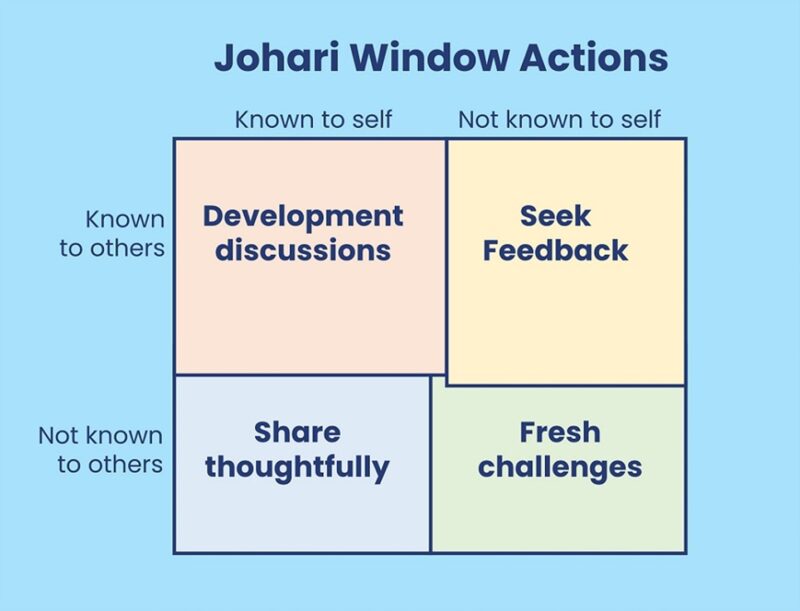Strategic Decision Making – Workshop 1 (Understanding how we think)
The Appleton Greene Corporate Training Program (CTP) for Strategic Decision Making is provided by Mr Albina MBA BA Certified Learning Provider (CLP). Program Specifications: Monthly cost USD$2,500.00; Monthly Workshops 6 hours; Monthly Support 4 hours; Program Duration 12 months; Program orders subject to ongoing availability.
If you would like to view the Client Information Hub (CIH) for this program, please Click Here
Learning Provider Profile

Mr Albina is the Founder & Director of Quintessential Consulting Pty Ltd. He established Quintessential in 2013 to help business leaders make more informed, and effective decisions in the rapidly increasingly complex. He accomplishes this by creating resilient workforces and future-proofing their people to the increasing uncertainties of today’s complex environment, helping them to become more agile, adaptable, and less reliant on certainty.
With more than 30 years of experience in Government, Industry and Small to Medium Business, Mr Albina blends his working knowledge with the latest thinking in contemporary leadership and management methodologies. As an Executive Coach, Consultant and Corporate Educator, Mr Albina utilises Systems Thinking approaches to enable leaders, managers and team members to unlock their potential through a mind-set shift, which makes it possible to operate effectively in the grey space of decision-making. By disrupting conventional patterns of thinking, Mr Albina coaches his clients to see and act in different ways, revealing new possibilities that are otherwise unavailable in the status quo.
Mr Albina believes, “We need different ways to do things as the complexity of today’s workplace is becoming increasingly stressful, with managers struggling to keep up with the rate of change, rapidly evolving technology, the management of multiple stakeholders as well as ambiguous lines of accountability.“
Starting his career as an Aerospace Engineer, Mr Albina has worked internationally for some of the world’s leading Aerospace and Defence Industry organisations, including Airbus, Boeing, Defence Industry and the Royal Australian Air Force (RAAF). His considerable management knowledge, engineering expertise and cross-industry experience is much sought after and has seen him appointed to oversee strategic change, operational integration and reform for Defence, Government, Resources, Utilities, Telecommunications, Sports & Recreation and more recently, the development of First Nations ‘on-country’ initiatives involving environmental resilience, youth justice and business sustainability.
A graduate of the Australian Defence Force Academy, Mr Albina completed his undergraduate degree at the University of Sydney in 1993 where he was awarded a Bachelor Engineering majoring in Aeronautical Engineering. He has since gone on to further studies including a Masters Degree in Aerospace from the University of New South Wales in 1999; a Graduate Diploma in Test & Evaluation from the University of South Australia in 2003; and an Executive MBA in Complexity Leadership & Management from Queensland University of Technology in 2013.
He is a Sessional Academic and an Executive Coach for the Queensland University of Technology’s Graduate School of Business and Chairman of the Board for an NDIS organisation in Brisbane.
MOST Analysis
Mission Statement
The first workshop, ‘Understanding how we think’, is designed to help the participants to identify and unpack the way we understand, make sense, comprehend, and make meaning of the things that we encounter. Understanding how we think involves delving into various facets of cognitive processes, including how we process information, how we make decisions, and how we solve problems. By understanding these aspects, we gain insight into the complexities of human thought, which can lead to better understanding of how we make decisions, how we problem-solve, and how we critique the interactions around us. Ultimately, it also fosters empathy and better communication, as we appreciate the diversity in how people think and perceive the world.
“When we can make sense of things in different ways, new behaviours and practices can be created, which reveals new and novel possibilities and opportunities.”
During this first workshop, we will establish a foundational understanding of what it means to think, so that we can subsequently develop our skills in strategic decision making, knowing when, what, how and why it is necessary. We will define your learning agenda through a structured learning process and, utilise a personal journal to help develop your strategic decision-making skills.
Objectives
01. Complex times – new mindsets. Exploring and understanding how we think by interpreting and making sense of the world around us, leading to the decisions that we make.
02. Understanding our mindset. Understanding our mindset, and how to create healthy spaces, both physically and socially, to foster more effective thinking.
03. Biases & Heuristics. Understanding the factors that may lead us to make flawed judgments and irrational decisions, and that impacts our ability to make sense of things in a balanced and rational manner.
04. Our Thinking Audit. Intentionally stopping to reflect and invest time to better understand our thinking preferences and cognitive styles, and the way we go about sense-making, solving problems, and creating solutions.
05. Personal Mastery. Intentionally defining a self-directed pathway towards our strategic goals.
06. Intentional Change.Defining a powerful iterative learning cycle that we will utilise to develop our strategic thinking.
07. The Ideal Self and Real Self. Defining and describing our ideal self in relation to our current self, so that we can best construct our learning journey.
08. Creative Tension. Understanding and leveraging our desire to grow so that we can most effectively undertake our learning journey.
09. Creating a Learning Agenda. Defining those things that we need to learn and build knowledge on our way to achieving our ideal self.
10. Crafting your Learning Agenda. Enacting your learning agenda to practice those things that we have learnt in a safe environment.
11. Build your Trusted Support Network. Act out your learning agenda and practice those things that we have learnt in a safe manner, supported by your trusted network.
12. Complexity. Exploring the concept of complexity, and how the ever increasingly complex world around us requires new ways of thinking, action and being, so that we can make better and more informed decisions.
Strategies
The strategies that we apply in this course will follow the Intentional Change Model, utilising a mix of four different activities to work towards achieving the workshop objectives:
01. Researching. Reviewing the workshop material presented to you and undertaking your own research on topics that resonate with you, especially those that are applicable and relevant to your workplace.
02. Case Studies. Provided to you to highlight the application of theoretical principles and how they look in real-world situations to help with the connection between theory and practice.
03. Workplace Scenarios. An opportunity to implement the course content and applying the workshop material presented to you by investigating a scenario that is relevant to your workplace.
04. Learn by doing. Identifying new skills and knowledge that you have learned during the workshop, and trying them out with help from your support network.
Tasks
The following types of tasks will be utilised throughout this workshop to successfully achieve the objectives, as provided in the following description:
01. Personal Journal Reflections. As the workshop material is presented, you will be asked to observe and interpret, entering your reflections in your personal journal. Your entries will be your personal understanding of how you make sense of the situation presented, and actions that you might take.
02. Develop Simple Rules – Rules of Thumb. Defining simple rules is an easy and effective way to change behaviours. Suggestions will be made as we present the workshop material to suggest simple rules that serve to remind you about different ways to think, interpret and act in certain situations. These will be invaluable, easy to remember prompts upon completion of the entire program.
03. Engage in Creative Conversations. You will be encouraged to seek feedback on your thoughts by sharing your stories and insights during the workshop. These creative conversations will be designed to challenge your thinking by embracing the different opinions, understanding conflicting perspectives, and exploring the reasons for these.
04. Define and undertake a Workplace Project. The workplace project is designed to return the investment in this workshop back to your team, department and/or organisation. It will involve undertaking an investigation, conducting an analysis based on the workshop content presented, and making recommendations for improvements back to the business.
Personal Journal
Your personal journal is an important part of achieving the objectives. When done correctly, it is a powerful and profound method to document your thought processes, insights, and ideas, helping you to shift your thinking and your behaviours over time. Please take the time to invest in the reflection process and ensure that you embrace the following suggestions described below:
• Be fully present and proactive when going through the various exercises provided in the course manuals during the workshop.
• Be sure to plan sufficient time for the tasks required between each individual Workshop.
• Create your personal journal entries as you reflect.
• Gradually add your thoughts, insights, and ideas throughout the workshop, you don’t have to wait to the end.
• Remember that it is most effective to work continuously in an iterative process, i.e., small, and manageable changes in preference to once-off large step changes.
Reflection
Within the first 24-48 hours after the Workshop, take the time to reflect on the first Workshop to consider the following questions in your personal journal:
a. What was my personal key take-away from the Workshop?
b. Which learning struck me the most?
c. How has your actual self changed, and what is my new ideal self?
d. Do I have any doubts with regards to my ideal self?
e. Is there anything else I’d like to write down…?
Before the next workshop (if not already done so), identify your trusted support network. The purpose of your trusted support network is to help you to challenge your thoughts and provide a learning opportunity in a safe environment. Examples of types of people who you may wish to consider as part of your trusted support network include:
• Coach
• Mentor
• Role Model
• Partner
• Family member
• Your manager/team lead
You may wish to have several different people in your trusted support network, and they may fulfil different roles and offer you different types of support during your learning journey.
Introduction
Introduction
The first workshop in our Strategic Decision Making program focuses on providing participants with a foundational understanding of the concepts that underpin how we think. It involves delving into the subject in a multifaceted way, as it encompasses a variety of cognitive activities that are essential to human behaviour and learning, each offering unique insights into the nature of thought. The workshop will take you through different ways to process information, perceive patterns, and form thoughts and opinions based on your knowledge and experiences.
Thinking can be conscious or unconscious, and it can take various forms such as logical thinking, critical thinking, creative thinking, and abstract thinking. It involves mental activities such as perception, memory, attention, language processing, and problem-solving. Thinking is essential for human intelligence and plays a crucial role in decision-making, learning, and problem-solving. It allows individuals to process information, evaluate options, consider consequences, and make informed choices.
During this workshop, we will progressively strengthen the foundation of your ability to think strategically, increase your confidence to consider what is happening beyond what is presented at face value, and to benefit from the return of investment in yourself, your team, and your organisation.
Each month we will delves deeper into the thinking processes that lead you to develop better strategic decision making. A process that will provide the team in your organisation, with higher consciousness, greater insights, and the ability to plan into the predictable and unpredictable future.
The evolution of Strategic Thinking & Decision Making
Strategic thinking is a concept that has evolved over time and has been influenced by various disciplines and thinkers. Its evolution can be traced through various historical periods, reflecting the changing social, economic, technological, and political landscapes. This evolution has seen strategic thinking move from simple planning and warfare tactics to complex, multidimensional approaches in business, governance, and other areas. The evolution of strategic thinking can be broadly categorised into several general eras, each marked by distinct characteristics and contributions. These eras reflect the application of strategic thinking across various domains such as military, political, economic, and business contexts, as is evidenced in at least four ways.
1. PEOPLE. The great leaders of governments and of armies, and the contributions they made to leadership and to military art.
2. PAST CAMPAIGNS. Choices in military history and in time of socio-political conflict that remain relevant and are subject to subsequent evaluation.
3. PRINCIPLES. The very existence of principles of strategy is much debated, and many have sought to identify and establish enduring philosophies on how it is formulated.
4. PATTERNS. Patterns are more general and more timeless than the analyses of events and individual strategic choices. It represents a continuity in strategic thinking throughout modern history, as described in the following for more recent times:
Industrial Age
• The advent of the Industrial Revolution introduced new strategic dimensions in resource control and economic competition.
• The concept of total war, as seen in the American Civil War, reflected a shift in military strategy due to industrialisation.
• Strategic thinking began to extend into the economic realm with the rise of corporate competition and the need for market positioning.
20th Century Global Conflict and Cold War

• World Wars I and II demanded comprehensive national strategies involving economics, society, technology, and diplomacy.
• The Cold War era was characterized by geopolitical strategy, nuclear deterrence theory, and proxy wars.
• Game theory emerged, providing a mathematical approach to strategic decision-making.
Late 20th Century to Early 21st Century

• The information age brought about strategic considerations in technology and business innovation.
• Globalisation and the rise of multinational corporations led to strategic thinking in competitive advantage, market entry, and supply chain management.
• The concept of sustainable development introduced strategic planning in environmental, social, and economic domains.
Contemporary Era

• Rapid technological changes and digitalization require adaptive and innovative strategies in business and governance.
• Strategic thinking now includes considerations of global challenges, such as climate change, cybersecurity, and international terrorism.
• The rise of artificial intelligence and data analytics has transformed strategic decision-making processes, emphasizing predictive models and real-time adaptation.
Throughout these eras, strategic thinking has continually adapted to the challenges and complexities of the times. In each period, thinkers and leaders have developed and applied strategies that reflected the available technologies, social structures, and prevailing philosophies. Today, strategic thinking encompasses a diverse range of disciplines and is integral to navigating the complexities of a rapidly changing global landscape.
Current Approaches
There is an abundance of literature about strategy and strategic thinking. In general terms, strategic thinking seeks to identify and develop unique opportunities that create value for your organisation. Current approaches on strategic thinking aligns to the following four key characteristics:
1) Seeks to Influence because you cannot control
Strategic thinking recognises that the fundamental task of strategy is to influence the variable that the strategist does not control, and in the direction that the strategist desires. There are many unknowns and numerous factors that cannot be controlled in a manner that you would normally apply through good forms of management.
2) Existing and Predictive Information
Strategic thinking requires facility with a different kind of information than is normally used in business decisions. The object is to influence behaviour of people and related factors in the future. That means that there is no data because all data comes from the past. There is no data about the future. Thus, a strategic thinker needs to be comfortable with something other than statistically significant quantitative data. Strategic thinkers know that if they can’t depend on statistically significant quantitative data, they must make decisions based on something else. They become skilled at thinking and deciding based on a wide variety of information that is not statistically significant, not quantifiable, or may not even exist yet.
3) A balance between art and science
Strategic thinking must balance different forms of reasoning because of the various scenarios that are presented to us that has data, has no data, or comes with limited data. This requires a balance between intuition and analysis, sometime referred to as the balance between art and science. Strategists must employ a balance between these two extremes, and we can consider how to apply this in the following forms:
Deductive Reasoning
Deduction is generally defined as “the deriving of a conclusion by reasoning.” Its specific meaning in logic is “inference in which the conclusion about particulars follows necessarily from general or universal premises.” Simply put, deduction—or the process of deducing—is the formation of a conclusion based on generally accepted statements or facts.
Inductive Reasoning
Whereas in deduction the truth of the conclusion is guaranteed by the truth of the statements or facts considered, induction is a method of reasoning involving an element of probability. In logic, induction refers specifically to “inference of a generalised conclusion from particular instances.” In other words, it means forming a generalisation based on what is known or observed as your reasoning is based on an observation of a small group, as opposed to universal premises.
Abductive Reasoning
The third method of reasoning, abduction, is defined as “a syllogism in which the major premise is evident but the minor premise and therefore the conclusion only probable.” It involves forming a conclusion from the information that is known.
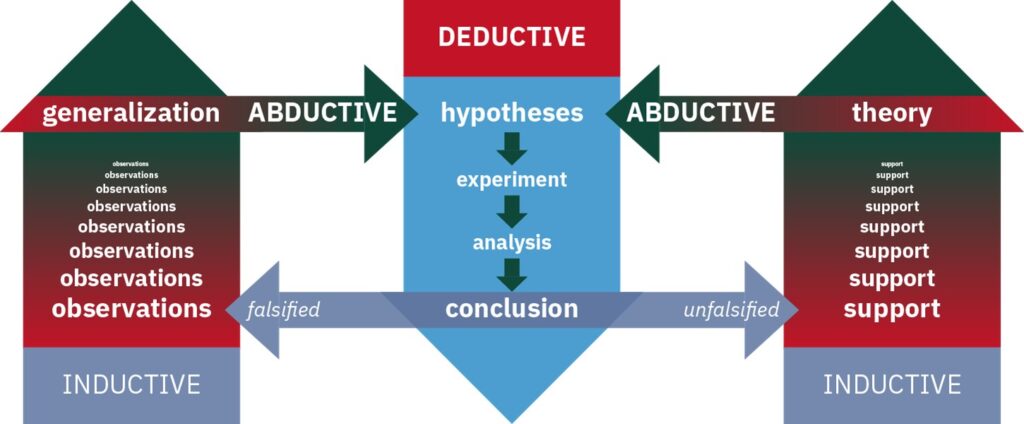
4) Considers Multiple Variables Simultaneously
Strategic thinking must consider many variables simultaneously, not sequentially or linearly. Thinking of them sequentially or linearly, which is too often done, is not strategic. It will cause localised optimisation of narrow solutions and may lead to unintended consequences more broadly. Sequential thinking on narrow variables will not be able to compel people to act in the desired way. Is it the power of an integrated set of choices across the various competitive variables that can compel action, not a sequence of independent choices.
In sum, strategic thinking entails comfort with using abductive reasoning and non-statistically significant data (qualitative, singular, analogous) on multiple variables to create a model about how you can influence, by actions on things you control, the future behaviour of the key thing you don’t control.
Future Outlook
The future of strategic decision making is likely to be shaped by several key trends:
1. Data-driven decision making: With the increasing availability of data and advanced analytics tools, organizations will rely more on data-driven insights to make strategic decisions. This includes leveraging artificial intelligence and machine learning algorithms to analyse large volumes of data and identify patterns, trends, and opportunities.
2. Real-time decision making: As technology continues to advance, decision-making processes will become faster and more agile. Real-time data and analytics will enable organizations to make decisions on the fly, responding quickly to changing market conditions and customer needs.
3. Collaborative decision making: Strategic decisions are often complex and require input from multiple stakeholders. In the future, decision-making processes will become more collaborative, involving cross-functional teams and leveraging tools that facilitate communication, collaboration, and consensus-building.
4. Scenario planning and predictive modelling: To mitigate risks and uncertainties, organizations will increasingly use scenario planning and predictive modelling techniques. These tools allow decision-makers to simulate different scenarios and assess the potential outcomes of their decisions, helping them make more informed choices.
5. Ethical decision making: As technology continues to advance, ethical considerations will play a more significant role in strategic decision making. Organizations will need to consider the ethical implications of their decisions, such as privacy concerns, data security, and the impact on society and the environment.
6. Automation and AI assistance: Automation and AI technologies will play a significant role in supporting strategic decision making. AI assistants can help decision-makers gather relevant information, analyse data, and provide insights, enabling them to make more informed and efficient decisions.
Overall, the future of strategic decision making will be characterised by data-driven insights, real-time decision-making processes, collaboration, scenario planning, ethical considerations, and the integration of automation and AI technologies.
Executive Summary
The world we live and work in has become increasingly complex and uncertain. The pace of change continues to escalate, and we face more disruptive events, behaviours, and trends than ever before. We require different thinking and different approaches, and we need to uplift our ability to deal with emergent and unpredictable challenges ahead. This workshop will seek to build an understanding of the ways in which we think and how we make sense of thinks. It will then introduce participants to the concepts of complexity and how this requires us to shift the way we think. We will explore various methodologies to help us navigate complexity in helping us to think differently and enhance our ability to make sense of the world around us. Embracing these principles will enhance the leader’s and managers ability to navigate the known and unknown challenges ahead, helping them to make more contextually suitable and effective decisions.
How we think is a complex and multifaceted process that involves various cognitive functions and skills. Here are twelve key aspects of thinking that we will cover in this course:
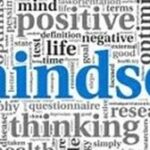
Chapter 1: Complex Times – New Mindset Part 1
Our mindset refers to the interaction of our attitudes, beliefs, and ways of thinking that shape how we interpret and respond to the world around us. It significantly influences our behaviour, our emotions, our interactions, and approach to challenges and opportunities. Importantly, it defines the way that we accumulate knowledge, sense-make, and create the parameters and condition that leads to how we make decisions. Thinking, also known as ‘cognition’, refers to the ability to process information, hold attention, store, and retrieve memories and select appropriate responses and actions. The ability to understand other people and express oneself to others can also be categorised under thinking.
In this course, we will explore ‘how we think’. It will help us to understand how we makes sense of the world around us and, as a result, how we make decisions. The decisions we make in a business environment will likely affect many people, however the way that we make decisions is different for every person. We will utilise the practice of personal reflection via journals to assist with this process, undertaking an iterative approach to learning about your own mindset and how to develop your strategic thinking.

Chapter 2: Understanding our mindset Part 2
The environment in which we live and go about our business has a profound influence on the way we think, shaping our cognitive processes, emotions, behaviours, and overall state of mind.
Our physical surroundings can have a substantial impact: a chaotic, noisy environment may scatter our attention and hinder concentration, while a serene and orderly space can facilitate clear thinking and focus. Natural settings have been shown to improve cognitive functions and promote relaxation, enabling more creative and expansive thought patterns. Social environments also play a critical role; the cultural context in which we are immersed from birth instils specific value systems and ways of reasoning, subtly directing our thought processes along particular paths. Our socio-economic environment can exert stressors that affect cognitive resources, limiting our ability to engage in complex problem-solving or forward planning. Access to education and a wealth of learning resources can enhance our critical thinking skills and open-mindedness.
In sum, the interplay of these factors coupled with our innate sense-making, guides the evolution of our thought processes, moulding the unique cognitive landscapes we each inhabit. Each aspect of our environment can interact with individual factors like genetics, personal experiences, and personality, creating a complex web of influences on our cognitive processes and mental well-being. Understanding these environmental impacts is crucial for creating healthier spaces, both physically and socially, to foster more effective thinking and well-being.
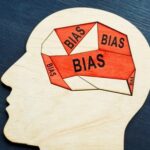
Chapter 3: Biases & Heuristics Part 3
Biases and heuristics are essential concepts in cognitive psychology, describing systematic patterns of deviation from norm or rationality in judgment and decision-making. They are mental shortcuts or “rules of thumb” that often help us make quick decisions but can also lead to errors in thinking. These biases and heuristics are hardwired into our thinking processes, likely because they offer a mental shortcut in decision-making, saving time and energy. To prevent us, or at least forewarning us in making flawed judgments and irrational decisions, we need to identify the conditions in which these biases and heuristics may occur, and how we should individually and collectively treat them, especially in complex or unfamiliar situations. Understanding these can help in developing strategies to mitigate their effects, leading to more rational decision-making.

Chapter 4: Our Thinking Audit. Part 4
Have you ever stopped and reflected about the way that you think? It is not often that we stop to do this, and yet the way that we think forms an integral part of our lives that influences the way that we act, behave, and make decisions. In this course, we will leverage the principles of neuroscience to unpack the way that we think so that we can better understand our own thinking preferences and identify the thinking preferences of others.

A “thinking audit” is not a standard term that you will find in cognitive science or psychology, however, will undertake one in this course as a self-reflective exercise intended to help you reflect and understand your own thought processes. By doing this, it will also help you to better identify these same characteristics in others, especially how the thought processes of yourself and others impact your decision-making preferences. This involves examining the ways you think, the biases that influence you, the quality of your decision-making, and the effectiveness of your problem-solving strategies.
A thinking audit should ideally be an ongoing process, not a one-time event. In this course, we will utilise your learning journal and an iterative approach to facilitate your learning. Progressively taking stock of how you think and making conscious efforts to improve your cognitive processes can lead to better decision-making, enhanced problem-solving abilities, and greater overall mental clarity.

Chapter 5: Personal Mastery Part 5
Personal Mastery is the process of living and working purposefully towards a vision and/or a desired outcome. This is usually in alignment with one’s values and in a state of constant learning about oneself and the reality in which one exists. As a concept, it is often discussed in the context of personal development and leadership. It’s about achieving a high level of proficiency and understanding in the areas that matter most to an individual’s life and career.

Personal mastery goes beyond mere competence or skills; it encompasses a deep commitment to lifelong learning, growth, and self-improvement. In his book “The Fifth Discipline: The Art & Practice of The Learning Organisation,” Peter Senge describes Personal Mastery as one of the five disciplines that form the foundation of a learning organisation. Senge’s concept of personal mastery goes beyond competence and skills, though it encompasses them. It is about creating a discipline of personal growth and learning, where an individual is committed to continually clarifying and deepening their personal vision, focusing their energies, developing patience, and seeing reality objectively.

Chapter 6: Intentional Change Part 6
How do people make changes in their behaviour? What does it take to make lasting change?
These are questions that many people have asked, and embarked upon a change journey that comes in many forms. In this workshop we will utilise Intentional Change Theory. It facilitates change at multiple levels and through numerous iterations in preference to one big step-change. The Intentional Change model encompasses “the five discoveries”, as follows:
1. The ideal self and a personal vision
2. The real self and its comparison to the ideal self, resulting in an assessment of one’s strengths and weaknesses, in a sense our personal balance sheet or our toolkit.
3. A learning agenda and plan
4. Experimentation and practice with the new behaviour, thoughts, feelings, or perceptions
5. Trusting, or resonant, relationships that enable a person to experience and process each discovery in the process.
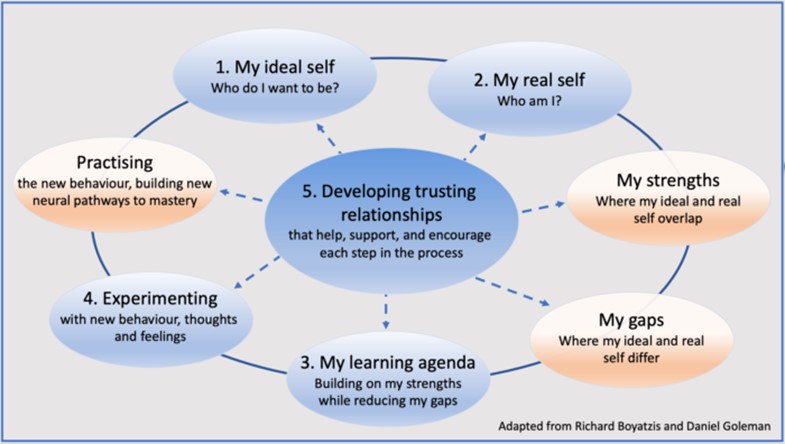
Participants undertaking this workshop will pass through these discoveries in a cycle that repeats as the person changes. Let’s look at each of these discoveries.

Chapter 7: The Ideal and Real Self Part 7
Before making an intentional change, we need to discover and understand, to some degree, who we want to be, whether as an individual, a team, a project and/or an organisation. We will generically refer to these as ‘self’. Once discovered, then we can turn our attention to the gap that exists in between our ideal and real self, specific to the goal of become better strategic thinkers, to understand:
What we call our “ideal self” is an image of the character of the individual, team, project and/or organisation that we want to be.
The “real self” is about understanding and accepting one’s current state, including strengths, weaknesses, and the discrepancies between one’s current reality and their aspirations or ideal self. This acceptance is not about resignation but serves as a starting point for intentional, positive change. In fact, lasting change is more likely when it is self-directed and focuses on developing what is right about a person rather than fixing what is wrong.

Chapter 8: Creative Tension Part 8
Once you have a sense of your ideal self, it’s time to look at how that ideal self compares with your current “real” self. The real self is the person that other people see and with whom they interact. Creative tension represents the gap between our vision for the future (ideal self) and our understanding of our current reality (real self), or between what is and what we desire it to be. This tension is considered “creative” because it can be a powerful driver of change, innovation, and growth, motivating individuals and organisations to move towards their vision or goals.

However, when we back off from our true aspirations, or lie to ourselves about current reality, we undermine the creative tension that is essential if we want to ensure the path of least resistance draws us to our genuinely desired future self. Similarly, when we rush into half-baked, quick fix ‘solutions’, we fail to establish the much more powerful underlying structural tension dynamic that brings into play our deeper resourcefulness. This force is known as emotional tension, a state of mental or emotional strain, often arising from situations that evoke conflicting feelings, stress, or anxiety. This tension can be the result of various factors, including personal conflicts, unmet needs, unresolved issues, or challenging circumstances. It manifests in various ways, including feelings of unease, restlessness, frustration, or distress. Emotional tension can impact an individual’s mood, behaviour, and overall mental health, influencing their interactions with others and their ability to cope with daily activities.

Chapter 9: Creating a Learning Agenda Part 9
Once you have a vision for the future and an accurate sense of your current self, it is time to develop a plan for how to move toward your vision. A learning agenda is an intentional structured plan that outlines the key questions, activities, and resources needed to gain knowledge and develop skills in a specific area. In this case, it specifically serves as a roadmap for those seeking to address knowledge gaps, improve decision-making, and achieve specific learning goals associated with their strategic thinking, which can be accomplished individually and/or as a team. The output is on creating that learning agenda. Such a plan would focus on development and is most effective if it is coupled with a positive belief in one’s capability and hope of improvement. A learning plan would also include standards of performance set by the person who is pursuing change. Once the plan is in place, the next step is to try it out.

Chapter 10: Crafting your Learning Environment Part 10
Once you have defined your learning agenda, i.e., what you wish to learn and how you wish to learn it, it is time to put it into practice. Depending on your goals, this often means experimenting with new behaviour. After such practice, you should reflect on what happened, and experiment further. Sometimes practicing new behaviour can happen in a course or a controlled learning environment, but often it happens in real world settings such as at work or at home. Whatever the situation, experimentation will be most effective in conditions where you feel safe. Such psychological safety means that you can try out your new behaviour with less risk of embarrassment or serious consequences of failure.

Chapter 11: Trusted Support Network Part 11
Our relationships with other people are an important part of our everyday environment. Crucial to our ability to change are the relationships and groups that are particularly important to us, i.e., our Trusted Support Network. They provide the context in which we can see our progress on our desired changes. Often, our relationships and groups can be sources of support for our change as well as for feedback.
Our Trusted Support Network helps us from slipping back into our former ways of behaving, and plays a crucial role in fostering personal and professional growth. It is an integral when undertaking your learning agenda as it offers a foundation for advice, feedback, emotional support, and opportunities. When established, it can help you to navigate challenges, make informed decisions, and achieve your goals. It is invaluable, especially when coupled with an environment where individuals can thrive, facing challenges with resilience and confidence, have no fear of failure, while also contributing to the growth and well-being of others in the network.

Chapter 12: Strategic Thinking for a Complex World part 12
The topic of complexity has become increasingly important concept in our modern and rapidly changing world. It is a crucial lens through which we make sense of, adapt to, and even harness the intricate web of interactions that define our rapidly evolving world. At its core, complexity recognises that many phenomena and situations are far from simple and linear; rather, they emerge from the interdependencies, feedback loops, and non-linear relationships between various elements. Different thinking is required if we are to makes sense of complexity. This is not merely an academic pursuit as it requires us to bring our whole self to the stage, and to bring a strategic mindset to systemically appreciate the whole picture rather than simply treat the numerous smaller problems presented to us.

Complexity and strategic thinking are deeply interconnected concepts. Complexity refers to the degree of interconnectivity and interdependence in systems or problems, where numerous components and variables interact in ways that can be difficult to predict. Strategic thinking, then, is the process of identifying long-term goals and determining the best approach to achieve those goals, especially in complex situations. It involves understanding the intricate dynamics at play, anticipating potential changes, and making decisions that navigate through these complexities effectively.
Curriculum
Strategic Decision Making – Workshop 1 – Understanding how we think
- Complex times – new thinking.
- Understanding our mindset
- Biases & Heuristics
- Our Thinking Audit
- Personal Mastery
- Intentional Change
- The Ideal Self and Real Self
- Creative Tension
- Creating a Learning Agenda
- Crafting your Learning Environment.
- Build your trusted support network
- Strategic Thinking for a Complex World
Distance Learning
Introduction
Welcome to Appleton Greene and thank you for enrolling on the Strategic Decision Making corporate training program. You will be learning through our unique facilitation via distance-learning method, which will enable you to practically implement everything that you learn academically. The methods and materials used in your program have been designed and developed to ensure that you derive the maximum benefits and enjoyment possible. We hope that you find the program challenging and fun to do. However, if you have never been a distance-learner before, you may be experiencing some trepidation at the task before you. So we will get you started by giving you some basic information and guidance on how you can make the best use of the modules, how you should manage the materials and what you should be doing as you work through them. This guide is designed to point you in the right direction and help you to become an effective distance-learner. Take a few hours or so to study this guide and your guide to tutorial support for students, while making notes, before you start to study in earnest.
Study environment
You will need to locate a quiet and private place to study, preferably a room where you can easily be isolated from external disturbances or distractions. Make sure the room is well-lit and incorporates a relaxed, pleasant feel. If you can spoil yourself within your study environment, you will have much more of a chance to ensure that you are always in the right frame of mind when you do devote time to study. For example, a nice fire, the ability to play soft soothing background music, soft but effective lighting, perhaps a nice view if possible and a good size desk with a comfortable chair. Make sure that your family know when you are studying and understand your study rules. Your study environment is very important. The ideal situation, if at all possible, is to have a separate study, which can be devoted to you. If this is not possible then you will need to pay a lot more attention to developing and managing your study schedule, because it will affect other people as well as yourself. The better your study environment, the more productive you will be.
Study tools & rules
Try and make sure that your study tools are sufficient and in good working order. You will need to have access to a computer, scanner and printer, with access to the internet. You will need a very comfortable chair, which supports your lower back, and you will need a good filing system. It can be very frustrating if you are spending valuable study time trying to fix study tools that are unreliable, or unsuitable for the task. Make sure that your study tools are up to date. You will also need to consider some study rules. Some of these rules will apply to you and will be intended to help you to be more disciplined about when and how you study. This distance-learning guide will help you and after you have read it you can put some thought into what your study rules should be. You will also need to negotiate some study rules for your family, friends or anyone who lives with you. They too will need to be disciplined in order to ensure that they can support you while you study. It is important to ensure that your family and friends are an integral part of your study team. Having their support and encouragement can prove to be a crucial contribution to your successful completion of the program. Involve them in as much as you can.
Successful distance-learning
Distance-learners are freed from the necessity of attending regular classes or workshops, since they can study in their own way, at their own pace and for their own purposes. But unlike traditional internal training courses, it is the student’s responsibility, with a distance-learning program, to ensure that they manage their own study contribution. This requires strong self-discipline and self-motivation skills and there must be a clear will to succeed. Those students who are used to managing themselves, are good at managing others and who enjoy working in isolation, are more likely to be good distance-learners. It is also important to be aware of the main reasons why you are studying and of the main objectives that you are hoping to achieve as a result. You will need to remind yourself of these objectives at times when you need to motivate yourself. Never lose sight of your long-term goals and your short-term objectives. There is nobody available here to pamper you, or to look after you, or to spoon-feed you with information, so you will need to find ways to encourage and appreciate yourself while you are studying. Make sure that you chart your study progress, so that you can be sure of your achievements and re-evaluate your goals and objectives regularly.
Self-assessment
Appleton Greene training programs are in all cases post-graduate programs. Consequently, you should already have obtained a business-related degree and be an experienced learner. You should therefore already be aware of your study strengths and weaknesses. For example, which time of the day are you at your most productive? Are you a lark or an owl? What study methods do you respond to the most? Are you a consistent learner? How do you discipline yourself? How do you ensure that you enjoy yourself while studying? It is important to understand yourself as a learner and so some self-assessment early on will be necessary if you are to apply yourself correctly. Perform a SWOT analysis on yourself as a student. List your internal strengths and weaknesses as a student and your external opportunities and threats. This will help you later on when you are creating a study plan. You can then incorporate features within your study plan that can ensure that you are playing to your strengths, while compensating for your weaknesses. You can also ensure that you make the most of your opportunities, while avoiding the potential threats to your success.
Accepting responsibility as a student
Training programs invariably require a significant investment, both in terms of what they cost and in the time that you need to contribute to study and the responsibility for successful completion of training programs rests entirely with the student. This is never more apparent than when a student is learning via distance-learning. Accepting responsibility as a student is an important step towards ensuring that you can successfully complete your training program. It is easy to instantly blame other people or factors when things go wrong. But the fact of the matter is that if a failure is your failure, then you have the power to do something about it, it is entirely in your own hands. If it is always someone else’s failure, then you are powerless to do anything about it. All students study in entirely different ways, this is because we are all individuals and what is right for one student, is not necessarily right for another. In order to succeed, you will have to accept personal responsibility for finding a way to plan, implement and manage a personal study plan that works for you. If you do not succeed, you only have yourself to blame.
Planning
By far the most critical contribution to stress, is the feeling of not being in control. In the absence of planning we tend to be reactive and can stumble from pillar to post in the hope that things will turn out fine in the end. Invariably they don’t! In order to be in control, we need to have firm ideas about how and when we want to do things. We also need to consider as many possible eventualities as we can, so that we are prepared for them when they happen. Prescriptive Change, is far easier to manage and control, than Emergent Change. The same is true with distance-learning. It is much easier and much more enjoyable, if you feel that you are in control and that things are going to plan. Even when things do go wrong, you are prepared for them and can act accordingly without any unnecessary stress. It is important therefore that you do take time to plan your studies properly.
Management
Once you have developed a clear study plan, it is of equal importance to ensure that you manage the implementation of it. Most of us usually enjoy planning, but it is usually during implementation when things go wrong. Targets are not met and we do not understand why. Sometimes we do not even know if targets are being met. It is not enough for us to conclude that the study plan just failed. If it is failing, you will need to understand what you can do about it. Similarly if your study plan is succeeding, it is still important to understand why, so that you can improve upon your success. You therefore need to have guidelines for self-assessment so that you can be consistent with performance improvement throughout the program. If you manage things correctly, then your performance should constantly improve throughout the program.
Study objectives & tasks
The first place to start is developing your program objectives. These should feature your reasons for undertaking the training program in order of priority. Keep them succinct and to the point in order to avoid confusion. Do not just write the first things that come into your head because they are likely to be too similar to each other. Make a list of possible departmental headings, such as: Customer Service; E-business; Finance; Globalization; Human Resources; Technology; Legal; Management; Marketing and Production. Then brainstorm for ideas by listing as many things that you want to achieve under each heading and later re-arrange these things in order of priority. Finally, select the top item from each department heading and choose these as your program objectives. Try and restrict yourself to five because it will enable you to focus clearly. It is likely that the other things that you listed will be achieved if each of the top objectives are achieved. If this does not prove to be the case, then simply work through the process again.
Study forecast
As a guide, the Appleton Greene Strategic Decision Making corporate training program should take 12-18 months to complete, depending upon your availability and current commitments. The reason why there is such a variance in time estimates is because every student is an individual, with differing productivity levels and different commitments. These differentiations are then exaggerated by the fact that this is a distance-learning program, which incorporates the practical integration of academic theory as an as a part of the training program. Consequently all of the project studies are real, which means that important decisions and compromises need to be made. You will want to get things right and will need to be patient with your expectations in order to ensure that they are. We would always recommend that you are prudent with your own task and time forecasts, but you still need to develop them and have a clear indication of what are realistic expectations in your case. With reference to your time planning: consider the time that you can realistically dedicate towards study with the program every week; calculate how long it should take you to complete the program, using the guidelines featured here; then break the program down into logical modules and allocate a suitable proportion of time to each of them, these will be your milestones; you can create a time plan by using a spreadsheet on your computer, or a personal organizer such as MS Outlook, you could also use a financial forecasting software; break your time forecasts down into manageable chunks of time, the more specific you can be, the more productive and accurate your time management will be; finally, use formulas where possible to do your time calculations for you, because this will help later on when your forecasts need to change in line with actual performance. With reference to your task planning: refer to your list of tasks that need to be undertaken in order to achieve your program objectives; with reference to your time plan, calculate when each task should be implemented; remember that you are not estimating when your objectives will be achieved, but when you will need to focus upon implementing the corresponding tasks; you also need to ensure that each task is implemented in conjunction with the associated training modules which are relevant; then break each single task down into a list of specific to do’s, say approximately ten to do’s for each task and enter these into your study plan; once again you could use MS Outlook to incorporate both your time and task planning and this could constitute your study plan; you could also use a project management software like MS Project. You should now have a clear and realistic forecast detailing when you can expect to be able to do something about undertaking the tasks to achieve your program objectives.
Performance management
It is one thing to develop your study forecast, it is quite another to monitor your progress. Ultimately it is less important whether you achieve your original study forecast and more important that you update it so that it constantly remains realistic in line with your performance. As you begin to work through the program, you will begin to have more of an idea about your own personal performance and productivity levels as a distance-learner. Once you have completed your first study module, you should re-evaluate your study forecast for both time and tasks, so that they reflect your actual performance level achieved. In order to achieve this you must first time yourself while training by using an alarm clock. Set the alarm for hourly intervals and make a note of how far you have come within that time. You can then make a note of your actual performance on your study plan and then compare your performance against your forecast. Then consider the reasons that have contributed towards your performance level, whether they are positive or negative and make a considered adjustment to your future forecasts as a result. Given time, you should start achieving your forecasts regularly.
With reference to time management: time yourself while you are studying and make a note of the actual time taken in your study plan; consider your successes with time-efficiency and the reasons for the success in each case and take this into consideration when reviewing future time planning; consider your failures with time-efficiency and the reasons for the failures in each case and take this into consideration when reviewing future time planning; re-evaluate your study forecast in relation to time planning for the remainder of your training program to ensure that you continue to be realistic about your time expectations. You need to be consistent with your time management, otherwise you will never complete your studies. This will either be because you are not contributing enough time to your studies, or you will become less efficient with the time that you do allocate to your studies. Remember, if you are not in control of your studies, they can just become yet another cause of stress for you.
With reference to your task management: time yourself while you are studying and make a note of the actual tasks that you have undertaken in your study plan; consider your successes with task-efficiency and the reasons for the success in each case; take this into consideration when reviewing future task planning; consider your failures with task-efficiency and the reasons for the failures in each case and take this into consideration when reviewing future task planning; re-evaluate your study forecast in relation to task planning for the remainder of your training program to ensure that you continue to be realistic about your task expectations. You need to be consistent with your task management, otherwise you will never know whether you are achieving your program objectives or not.
Keeping in touch
You will have access to qualified and experienced professors and tutors who are responsible for providing tutorial support for your particular training program. So don’t be shy about letting them know how you are getting on. We keep electronic records of all tutorial support emails so that professors and tutors can review previous correspondence before considering an individual response. It also means that there is a record of all communications between you and your professors and tutors and this helps to avoid any unnecessary duplication, misunderstanding, or misinterpretation. If you have a problem relating to the program, share it with them via email. It is likely that they have come across the same problem before and are usually able to make helpful suggestions and steer you in the right direction. To learn more about when and how to use tutorial support, please refer to the Tutorial Support section of this student information guide. This will help you to ensure that you are making the most of tutorial support that is available to you and will ultimately contribute towards your success and enjoyment with your training program.
Work colleagues and family
You should certainly discuss your program study progress with your colleagues, friends and your family. Appleton Greene training programs are very practical. They require you to seek information from other people, to plan, develop and implement processes with other people and to achieve feedback from other people in relation to viability and productivity. You will therefore have plenty of opportunities to test your ideas and enlist the views of others. People tend to be sympathetic towards distance-learners, so don’t bottle it all up in yourself. Get out there and share it! It is also likely that your family and colleagues are going to benefit from your labors with the program, so they are likely to be much more interested in being involved than you might think. Be bold about delegating work to those who might benefit themselves. This is a great way to achieve understanding and commitment from people who you may later rely upon for process implementation. Share your experiences with your friends and family.
Making it relevant
The key to successful learning is to make it relevant to your own individual circumstances. At all times you should be trying to make bridges between the content of the program and your own situation. Whether you achieve this through quiet reflection or through interactive discussion with your colleagues, client partners or your family, remember that it is the most important and rewarding aspect of translating your studies into real self-improvement. You should be clear about how you want the program to benefit you. This involves setting clear study objectives in relation to the content of the course in terms of understanding, concepts, completing research or reviewing activities and relating the content of the modules to your own situation. Your objectives may understandably change as you work through the program, in which case you should enter the revised objectives on your study plan so that you have a permanent reminder of what you are trying to achieve, when and why.
Distance-learning check-list
Prepare your study environment, your study tools and rules.
Undertake detailed self-assessment in terms of your ability as a learner.
Create a format for your study plan.
Consider your study objectives and tasks.
Create a study forecast.
Assess your study performance.
Re-evaluate your study forecast.
Be consistent when managing your study plan.
Use your Appleton Greene Certified Learning Provider (CLP) for tutorial support.
Make sure you keep in touch with those around you.

Tutorial Support
Programs
Appleton Greene uses standard and bespoke corporate training programs as vessels to transfer business process improvement knowledge into the heart of our clients’ organizations. Each individual program focuses upon the implementation of a specific business process, which enables clients to easily quantify their return on investment. There are hundreds of established Appleton Greene corporate training products now available to clients within customer services, e-business, finance, globalization, human resources, information technology, legal, management, marketing and production. It does not matter whether a client’s employees are located within one office, or an unlimited number of international offices, we can still bring them together to learn and implement specific business processes collectively. Our approach to global localization enables us to provide clients with a truly international service with that all important personal touch. Appleton Greene corporate training programs can be provided virtually or locally and they are all unique in that they individually focus upon a specific business function. They are implemented over a sustainable period of time and professional support is consistently provided by qualified learning providers and specialist consultants.
Support available
You will have a designated Certified Learning Provider (CLP) and an Accredited Consultant and we encourage you to communicate with them as much as possible. In all cases tutorial support is provided online because we can then keep a record of all communications to ensure that tutorial support remains consistent. You would also be forwarding your work to the tutorial support unit for evaluation and assessment. You will receive individual feedback on all of the work that you undertake on a one-to-one basis, together with specific recommendations for anything that may need to be changed in order to achieve a pass with merit or a pass with distinction and you then have as many opportunities as you may need to re-submit project studies until they meet with the required standard. Consequently the only reason that you should really fail (CLP) is if you do not do the work. It makes no difference to us whether a student takes 12 months or 18 months to complete the program, what matters is that in all cases the same quality standard will have been achieved.
Support Process
Please forward all of your future emails to the designated (CLP) Tutorial Support Unit email address that has been provided and please do not duplicate or copy your emails to other AGC email accounts as this will just cause unnecessary administration. Please note that emails are always answered as quickly as possible but you will need to allow a period of up to 20 business days for responses to general tutorial support emails during busy periods, because emails are answered strictly within the order in which they are received. You will also need to allow a period of up to 30 business days for the evaluation and assessment of project studies. This does not include weekends or public holidays. Please therefore kindly allow for this within your time planning. All communications are managed online via email because it enables tutorial service support managers to review other communications which have been received before responding and it ensures that there is a copy of all communications retained on file for future reference. All communications will be stored within your personal (CLP) study file here at Appleton Greene throughout your designated study period. If you need any assistance or clarification at any time, please do not hesitate to contact us by forwarding an email and remember that we are here to help. If you have any questions, please list and number your questions succinctly and you can then be sure of receiving specific answers to each and every query.
Time Management
It takes approximately 1 Year to complete the Strategic Decision Making corporate training program, incorporating 12 x 6-hour monthly workshops. Each student will also need to contribute approximately 4 hours per week over 1 Year of their personal time. Students can study from home or work at their own pace and are responsible for managing their own study plan. There are no formal examinations and students are evaluated and assessed based upon their project study submissions, together with the quality of their internal analysis and supporting documents. They can contribute more time towards study when they have the time to do so and can contribute less time when they are busy. All students tend to be in full time employment while studying and the Strategic Decision Making program is purposely designed to accommodate this, so there is plenty of flexibility in terms of time management. It makes no difference to us at Appleton Greene, whether individuals take 12-18 months to complete this program. What matters is that in all cases the same standard of quality will have been achieved with the standard and bespoke programs that have been developed.
Distance Learning Guide
The distance learning guide should be your first port of call when starting your training program. It will help you when you are planning how and when to study, how to create the right environment and how to establish the right frame of mind. If you can lay the foundations properly during the planning stage, then it will contribute to your enjoyment and productivity while training later. The guide helps to change your lifestyle in order to accommodate time for study and to cultivate good study habits. It helps you to chart your progress so that you can measure your performance and achieve your goals. It explains the tools that you will need for study and how to make them work. It also explains how to translate academic theory into practical reality. Spend some time now working through your distance learning guide and make sure that you have firm foundations in place so that you can make the most of your distance learning program. There is no requirement for you to attend training workshops or classes at Appleton Greene offices. The entire program is undertaken online, program course manuals and project studies are administered via the Appleton Greene web site and via email, so you are able to study at your own pace and in the comfort of your own home or office as long as you have a computer and access to the internet.
How To Study
The how to study guide provides students with a clear understanding of the Appleton Greene facilitation via distance learning training methods and enables students to obtain a clear overview of the training program content. It enables students to understand the step-by-step training methods used by Appleton Greene and how course manuals are integrated with project studies. It explains the research and development that is required and the need to provide evidence and references to support your statements. It also enables students to understand precisely what will be required of them in order to achieve a pass with merit and a pass with distinction for individual project studies and provides useful guidance on how to be innovative and creative when developing your Unique Program Proposition (UPP).
Tutorial Support
Tutorial support for the Appleton Greene Strategic Decision Making corporate training program is provided online either through the Appleton Greene Client Support Portal (CSP), or via email. All tutorial support requests are facilitated by a designated Program Administration Manager (PAM). They are responsible for deciding which professor or tutor is the most appropriate option relating to the support required and then the tutorial support request is forwarded onto them. Once the professor or tutor has completed the tutorial support request and answered any questions that have been asked, this communication is then returned to the student via email by the designated Program Administration Manager (PAM). This enables all tutorial support, between students, professors and tutors, to be facilitated by the designated Program Administration Manager (PAM) efficiently and securely through the email account. You will therefore need to allow a period of up to 20 business days for responses to general support queries and up to 30 business days for the evaluation and assessment of project studies, because all tutorial support requests are answered strictly within the order in which they are received. This does not include weekends or public holidays. Consequently you need to put some thought into the management of your tutorial support procedure in order to ensure that your study plan is feasible and to obtain the maximum possible benefit from tutorial support during your period of study. Please retain copies of your tutorial support emails for future reference. Please ensure that ALL of your tutorial support emails are set out using the format as suggested within your guide to tutorial support. Your tutorial support emails need to be referenced clearly to the specific part of the course manual or project study which you are working on at any given time. You also need to list and number any questions that you would like to ask, up to a maximum of five questions within each tutorial support email. Remember the more specific you can be with your questions the more specific your answers will be too and this will help you to avoid any unnecessary misunderstanding, misinterpretation, or duplication. The guide to tutorial support is intended to help you to understand how and when to use support in order to ensure that you get the most out of your training program. Appleton Greene training programs are designed to enable you to do things for yourself. They provide you with a structure or a framework and we use tutorial support to facilitate students while they practically implement what they learn. In other words, we are enabling students to do things for themselves. The benefits of distance learning via facilitation are considerable and are much more sustainable in the long-term than traditional short-term knowledge sharing programs. Consequently you should learn how and when to use tutorial support so that you can maximize the benefits from your learning experience with Appleton Greene. This guide describes the purpose of each training function and how to use them and how to use tutorial support in relation to each aspect of the training program. It also provides useful tips and guidance with regard to best practice.
Tutorial Support Tips
Students are often unsure about how and when to use tutorial support with Appleton Greene. This Tip List will help you to understand more about how to achieve the most from using tutorial support. Refer to it regularly to ensure that you are continuing to use the service properly. Tutorial support is critical to the success of your training experience, but it is important to understand when and how to use it in order to maximize the benefit that you receive. It is no coincidence that those students who succeed are those that learn how to be positive, proactive and productive when using tutorial support.
Be positive and friendly with your tutorial support emails
Remember that if you forward an email to the tutorial support unit, you are dealing with real people. “Do unto others as you would expect others to do unto you”. If you are positive, complimentary and generally friendly in your emails, you will generate a similar response in return. This will be more enjoyable, productive and rewarding for you in the long-term.
Think about the impression that you want to create
Every time that you communicate, you create an impression, which can be either positive or negative, so put some thought into the impression that you want to create. Remember that copies of all tutorial support emails are stored electronically and tutors will always refer to prior correspondence before responding to any current emails. Over a period of time, a general opinion will be arrived at in relation to your character, attitude and ability. Try to manage your own frustrations, mood swings and temperament professionally, without involving the tutorial support team. Demonstrating frustration or a lack of patience is a weakness and will be interpreted as such. The good thing about communicating in writing, is that you will have the time to consider your content carefully, you can review it and proof-read it before sending your email to Appleton Greene and this should help you to communicate more professionally, consistently and to avoid any unnecessary knee-jerk reactions to individual situations as and when they may arise. Please also remember that the CLP Tutorial Support Unit will not just be responsible for evaluating and assessing the quality of your work, they will also be responsible for providing recommendations to other learning providers and to client contacts within the Appleton Greene global client network, so do be in control of your own emotions and try to create a good impression.
Remember that quality is preferred to quantity
Please remember that when you send an email to the tutorial support team, you are not using Twitter or Text Messaging. Try not to forward an email every time that you have a thought. This will not prove to be productive either for you or for the tutorial support team. Take time to prepare your communications properly, as if you were writing a professional letter to a business colleague and make a list of queries that you are likely to have and then incorporate them within one email, say once every month, so that the tutorial support team can understand more about context, application and your methodology for study. Get yourself into a consistent routine with your tutorial support requests and use the tutorial support template provided with ALL of your emails. The (CLP) Tutorial Support Unit will not spoon-feed you with information. They need to be able to evaluate and assess your tutorial support requests carefully and professionally.
Be specific about your questions in order to receive specific answers
Try not to write essays by thinking as you are writing tutorial support emails. The tutorial support unit can be unclear about what in fact you are asking, or what you are looking to achieve. Be specific about asking questions that you want answers to. Number your questions. You will then receive specific answers to each and every question. This is the main purpose of tutorial support via email.
Keep a record of your tutorial support emails
It is important that you keep a record of all tutorial support emails that are forwarded to you. You can then refer to them when necessary and it avoids any unnecessary duplication, misunderstanding, or misinterpretation.
Individual training workshops or telephone support
Tutorial Support Email Format
You should use this tutorial support format if you need to request clarification or assistance while studying with your training program. Please note that ALL of your tutorial support request emails should use the same format. You should therefore set up a standard email template, which you can then use as and when you need to. Emails that are forwarded to Appleton Greene, which do not use the following format, may be rejected and returned to you by the (CLP) Program Administration Manager. A detailed response will then be forwarded to you via email usually within 20 business days of receipt for general support queries and 30 business days for the evaluation and assessment of project studies. This does not include weekends or public holidays. Your tutorial support request, together with the corresponding TSU reply, will then be saved and stored within your electronic TSU file at Appleton Greene for future reference.
Subject line of your email
Please insert: Appleton Greene (CLP) Tutorial Support Request: (Your Full Name) (Date), within the subject line of your email.
Main body of your email
Please insert:
1. Appleton Greene Certified Learning Provider (CLP) Tutorial Support Request
2. Your Full Name
3. Date of TS request
4. Preferred email address
5. Backup email address
6. Course manual page name or number (reference)
7. Project study page name or number (reference)
Subject of enquiry
Please insert a maximum of 50 words (please be succinct)
Briefly outline the subject matter of your inquiry, or what your questions relate to.
Question 1
Maximum of 50 words (please be succinct)
Maximum of 50 words (please be succinct)
Question 3
Maximum of 50 words (please be succinct)
Question 4
Maximum of 50 words (please be succinct)
Question 5
Maximum of 50 words (please be succinct)
Please note that a maximum of 5 questions is permitted with each individual tutorial support request email.
Procedure
* List the questions that you want to ask first, then re-arrange them in order of priority. Make sure that you reference them, where necessary, to the course manuals or project studies.
* Make sure that you are specific about your questions and number them. Try to plan the content within your emails to make sure that it is relevant.
* Make sure that your tutorial support emails are set out correctly, using the Tutorial Support Email Format provided here.
* Save a copy of your email and incorporate the date sent after the subject title. Keep your tutorial support emails within the same file and in date order for easy reference.
* Allow up to 20 business days for a response to general tutorial support emails and up to 30 business days for the evaluation and assessment of project studies, because detailed individual responses will be made in all cases and tutorial support emails are answered strictly within the order in which they are received.
* Emails can and do get lost. So if you have not received a reply within the appropriate time, forward another copy or a reminder to the tutorial support unit to be sure that it has been received but do not forward reminders unless the appropriate time has elapsed.
* When you receive a reply, save it immediately featuring the date of receipt after the subject heading for easy reference. In most cases the tutorial support unit replies to your questions individually, so you will have a record of the questions that you asked as well as the answers offered. With project studies however, separate emails are usually forwarded by the tutorial support unit, so do keep a record of your own original emails as well.
* Remember to be positive and friendly in your emails. You are dealing with real people who will respond to the same things that you respond to.
* Try not to repeat questions that have already been asked in previous emails. If this happens the tutorial support unit will probably just refer you to the appropriate answers that have already been provided within previous emails.
* If you lose your tutorial support email records you can write to Appleton Greene to receive a copy of your tutorial support file, but a separate administration charge may be levied for this service.

How To Study
Your Certified Learning Provider (CLP) and Accredited Consultant can help you to plan a task list for getting started so that you can be clear about your direction and your priorities in relation to your training program. It is also a good way to introduce yourself to the tutorial support team.
Planning your study environment
Your study conditions are of great importance and will have a direct effect on how much you enjoy your training program. Consider how much space you will have, whether it is comfortable and private and whether you are likely to be disturbed. The study tools and facilities at your disposal are also important to the success of your distance-learning experience. Your tutorial support unit can help with useful tips and guidance, regardless of your starting position. It is important to get this right before you start working on your training program.
Planning your program objectives
It is important that you have a clear list of study objectives, in order of priority, before you start working on your training program. Your tutorial support unit can offer assistance here to ensure that your study objectives have been afforded due consideration and priority.
Planning how and when to study
Distance-learners are freed from the necessity of attending regular classes, since they can study in their own way, at their own pace and for their own purposes. This approach is designed to let you study efficiently away from the traditional classroom environment. It is important however, that you plan how and when to study, so that you are making the most of your natural attributes, strengths and opportunities. Your tutorial support unit can offer assistance and useful tips to ensure that you are playing to your strengths.
Planning your study tasks
You should have a clear understanding of the study tasks that you should be undertaking and the priority associated with each task. These tasks should also be integrated with your program objectives. The distance learning guide and the guide to tutorial support for students should help you here, but if you need any clarification or assistance, please contact your tutorial support unit.
Planning your time
You will need to allocate specific times during your calendar when you intend to study if you are to have a realistic chance of completing your program on time. You are responsible for planning and managing your own study time, so it is important that you are successful with this. Your tutorial support unit can help you with this if your time plan is not working.
Keeping in touch
Consistency is the key here. If you communicate too frequently in short bursts, or too infrequently with no pattern, then your management ability with your studies will be questioned, both by you and by your tutorial support unit. It is obvious when a student is in control and when one is not and this will depend how able you are at sticking with your study plan. Inconsistency invariably leads to in-completion.
Charting your progress
Your tutorial support team can help you to chart your own study progress. Refer to your distance learning guide for further details.
Making it work
To succeed, all that you will need to do is apply yourself to undertaking your training program and interpreting it correctly. Success or failure lies in your hands and your hands alone, so be sure that you have a strategy for making it work. Your Certified Learning Provider (CLP) and Accredited Consultant can guide you through the process of program planning, development and implementation.
Reading methods
Interpretation is often unique to the individual but it can be improved and even quantified by implementing consistent interpretation methods. Interpretation can be affected by outside interference such as family members, TV, or the Internet, or simply by other thoughts which are demanding priority in our minds. One thing that can improve our productivity is using recognized reading methods. This helps us to focus and to be more structured when reading information for reasons of importance, rather than relaxation.
Speed reading
When reading through course manuals for the first time, subconsciously set your reading speed to be just fast enough that you cannot dwell on individual words or tables. With practice, you should be able to read an A4 sheet of paper in one minute. You will not achieve much in the way of a detailed understanding, but your brain will retain a useful overview. This overview will be important later on and will enable you to keep individual issues in perspective with a more generic picture because speed reading appeals to the memory part of the brain. Do not worry about what you do or do not remember at this stage.
Content reading
Once you have speed read everything, you can then start work in earnest. You now need to read a particular section of your course manual thoroughly, by making detailed notes while you read. This process is called Content Reading and it will help to consolidate your understanding and interpretation of the information that has been provided.
Making structured notes on the course manuals
When you are content reading, you should be making detailed notes, which are both structured and informative. Make these notes in a MS Word document on your computer, because you can then amend and update these as and when you deem it to be necessary. List your notes under three headings: 1. Interpretation – 2. Questions – 3. Tasks. The purpose of the 1st section is to clarify your interpretation by writing it down. The purpose of the 2nd section is to list any questions that the issue raises for you. The purpose of the 3rd section is to list any tasks that you should undertake as a result. Anyone who has graduated with a business-related degree should already be familiar with this process.
Organizing structured notes separately
You should then transfer your notes to a separate study notebook, preferably one that enables easy referencing, such as a MS Word Document, a MS Excel Spreadsheet, a MS Access Database, or a personal organizer on your cell phone. Transferring your notes allows you to have the opportunity of cross-checking and verifying them, which assists considerably with understanding and interpretation. You will also find that the better you are at doing this, the more chance you will have of ensuring that you achieve your study objectives.
Question your understanding
Do challenge your understanding. Explain things to yourself in your own words by writing things down.
Clarifying your understanding
If you are at all unsure, forward an email to your tutorial support unit and they will help to clarify your understanding.
Question your interpretation
Do challenge your interpretation. Qualify your interpretation by writing it down.
Clarifying your interpretation
If you are at all unsure, forward an email to your tutorial support unit and they will help to clarify your interpretation.
Qualification Requirements
The student will need to successfully complete the project study and all of the exercises relating to the Strategic Decision Making corporate training program, achieving a pass with merit or distinction in each case, in order to qualify as an Accredited Strategic Decision Making Specialist (APTS). All monthly workshops need to be tried and tested within your company. These project studies can be completed in your own time and at your own pace and in the comfort of your own home or office. There are no formal examinations, assessment is based upon the successful completion of the project studies. They are called project studies because, unlike case studies, these projects are not theoretical, they incorporate real program processes that need to be properly researched and developed. The project studies assist us in measuring your understanding and interpretation of the training program and enable us to assess qualification merits. All of the project studies are based entirely upon the content within the training program and they enable you to integrate what you have learnt into your corporate training practice.
Strategic Decision Making – Grading Contribution
Project Study – Grading Contribution
Customer Service – 10%
E-business – 05%
Finance – 10%
Globalization – 10%
Human Resources – 10%
Information Technology – 10%
Legal – 05%
Management – 10%
Marketing – 10%
Production – 10%
Education – 05%
Logistics – 05%
TOTAL GRADING – 100%
Qualification grades
A mark of 90% = Pass with Distinction.
A mark of 75% = Pass with Merit.
A mark of less than 75% = Fail.
If you fail to achieve a mark of 75% with a project study, you will receive detailed feedback from the Certified Learning Provider (CLP) and/or Accredited Consultant, together with a list of tasks which you will need to complete, in order to ensure that your project study meets with the minimum quality standard that is required by Appleton Greene. You can then re-submit your project study for further evaluation and assessment. Indeed you can re-submit as many drafts of your project studies as you need to, until such a time as they eventually meet with the required standard by Appleton Greene, so you need not worry about this, it is all part of the learning process.
When marking project studies, Appleton Greene is looking for sufficient evidence of the following:
Pass with merit
A satisfactory level of program understanding
A satisfactory level of program interpretation
A satisfactory level of project study content presentation
A satisfactory level of Unique Program Proposition (UPP) quality
A satisfactory level of the practical integration of academic theory
Pass with distinction
An exceptional level of program understanding
An exceptional level of program interpretation
An exceptional level of project study content presentation
An exceptional level of Unique Program Proposition (UPP) quality
An exceptional level of the practical integration of academic theory
Preliminary Analysis
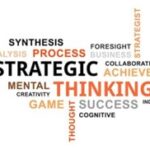
As a student enrolled in the Strategic Decision Making program you are encouraged to spend some time reflecting on how it is we think, and what has led us to think the way that we do. The course is designed to help the participants to identify and unpack the way we understand, make sense, comprehend, and make meaning of the things that we encounter. Understanding how we think involves delving into various facets of cognitive processes, including how we process information, how we make decisions, and how we solve problems. By understanding these aspects, we gain insight into the complexities of human thought, which can lead to better understanding of how we make decisions, how we problem-solve, and how we critique the interactions around us. Ultimately, it also fosters empathy and better communication, as we appreciate the diversity in how people think and perceive the world.
The past decade has seen a wealth of research on strategic decision making. It has highlighted that business executives are largely impervious to the lessons of the past and seem unable to apply those lessons, or perhaps are uninterested in doing so. Advances in our understanding of decision making have not been matched by improvements in practice. This is not a new phenomenon.
Let’s take the well known example of Cobb’s Paradox…
In 1995, Martin Cobb, then CIO for the Treasury Board of Canada Secretariat, asked a question which has since become known as Cobb’s Paradox. He said: ‘We know why projects fail; we know how to prevent their failure – so why do they still fail?’
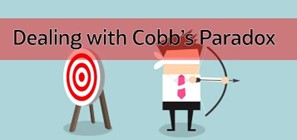
‘We know why projects fail’
When projects go wrong, we do some kind of post-mortem on them. If a project is big and high profile and ugly enough, there is a stink in the media about it. We might identify things like lack of stakeholder engagement or unclear objectives, requirements, political interference, or bad estimation or inadequate budget or lack of resources and so on. If you want it in a nutshell though, projects fail because they require us to do something we can’t actually do. They require us to predict the future (and make it come true). If we think about it from this point of view, maybe the question we should really be asking should not be, ‘why do some projects fail’ but rather, ‘how is it that any projects actually succeed?’
If we think about it from this point of view, there is not a great deal of difference between a project plan and a lottery ticket other than the odds. We’d like to feel that the odds on our project plan are better than those for a lottery ticket, but certainly I’ve seen projects where the smart money would have to be on the lottery ticket!
There is, however, also a fundamental difference between the plan and the lottery ticket. In the lottery we can’t influence the odds – they’re fixed. But in a plan, we can. In a plan, we can stack the odds in our favour.
And the way we do that is…by making better strategic decisions.
‘We know how to prevent their failure’
When we start by asking ourselves the question, why do some projects succeed and others fail, you very quickly start to see a pattern. There are certain things that are common to all successful projects and there are certain things that are common to failed projects.
‘So why do they still fail?’
Quite simply, they fail because we’re either not aware of this pattern, or – for whatever reason – we choose to ignore it.
In reflecting upon this paradox, it appears that there is a good explanation as we don’t generally lack the desire to make better decisions. The problem lies elsewhere. It’s that the bulk of the decision-making research published to date applies to one type of decision, and it’s not the type that’s most challenging for managers. Their most important and most difficult decisions, i.e., strategic decisions, calls for a very different approach.
The fact is that people need to make up their minds in a great variety of circumstances, and it’s a source of confusion that the same word, “decision,” is used for all of them. When a grocery store customer encounters an entire aisle of breakfast cereals, we say he has a decision to make. When a high school senior considers which college to attend, we say she is facing a decision. When a poker player weighs whether to raise or fold, that’s a decision, too. And when a company faces an opportunity—to enter a new market, acquire another company, or launch a new product—what is required of its management? A decision. The same term is applied to routine as well as complex deliberations, to both small-stakes bets and high-stakes commitments, and to exploratory steps as well as irreversible moves. It stands to reason that insights about decisions in one kind of circumstance might not shed much light on decisions in another. Even worse, they may lead a decision maker astray.
In this course, we explore our own thinking on how to make better strategic decisions. We seek to equip ourselves with an inherent understanding on how to make different decisions by understanding the way we think and being able to adapt the way we think to make the most appropriate decisions for the context.
Metacognition
Thinking about the way we think, often referred to as metacognition. It involves self-reflection on our own cognitive processes. This includes understanding how we learn, solve problems, make decisions, and process information. Metacognition plays a crucial role in enhancing our learning and decision-making abilities by allowing us to monitor and regulate our cognitive strategies. While metacognition offers many benefits, it can be challenging to develop these skills. It requires effort and persistence to become more aware of and effectively regulate our own cognitive processes. Additionally, as individuals, we may overestimate our metacognitive abilities, believing we understand or have learned material better than we actually have.
This course helps us to explore our metacognition and leverage it as a powerful tool for enhancing performance across various domains, from learning and memory to decision-making and problem-solving.
Part 1 – New thinking for new times
Part 1, covering Objectives 1 to 4, introduces the complexities of modern times by challenging us to stop and reflect about the way we think. It accomplishes this by introducing the various factors that affecting our thinking, and by offering us a framework to explore and understand our thinking preferences.
Part 2 – Iterative change to build our strategic thinking
Part 2, covering Objectives 5 to 11, provides a powerful model with which to define those skills that we seek to develop, and to build our strategic thinking abilities in an iterative and sustainable manner. We identify the tension between who we are and what we seek to become, and in the process, we leverage the help from those who are within our trusted support network.

Part 3 – Complexity
Part 3 covers Objective 12. It is an introduction to the concept of complexity, and how the ever increasingly complex world around us requires new ways of thinking, action and being, so that we can make better and more informed strategic decisions. It also provides a taster for subsequent workshops.
By cultivating our metacognitive skills, we can become more adept at navigating the complexities of the environment, leading to more effective and adaptive behaviours, and ultimately better strategic decisions.
Course Manuals 1-12
Your Personal Journal
One of the most critical elements of being a successful on-line learner is recording your thoughts, observations, and reflections about your learning. Journal writing has become a very popular tool as a key component of learning and especially in learning from our experiences.
We encourage you to create your own reflective learning journal. You will use this to record answers to questions in activities, make notes to help cement your thinking, record your insights into a topic or note questions which arise through the unit. You can return to explore these questions later or discuss them with a peer or supervisor. As you engage with this practice of using personal journal, you will develop into a reflective, reasoned, and resilient thinker. It is also a great way to record your learning journey and reflect on how you progress.
You can write your reflections in a physical journal (any kind of notebook will work), in a digital “notebook” such as Microsoft OneNote, or make use of several free available dedicated online tools such as 750 words, Penzu or JRNL. Take a moment now to explore some of these options and decide which will be the best for you before you move on to begin this Unit.

Course Manual 1: Complex times – new thinking
Objective. Exploring and understanding how we think by interpreting and making sense of the world around us, leading to the decisions that we make.
In these rapidly changing and highly complex times, our ability to adapt and think in new ways beyond what we currently know, is crucial and in fact be the key to your competitive advantage. This applies to various fields like technology, business, education, and social issues. The types of challenges that we face, especially those that are unknown and/or unpredictable, require us to gain fresh and diverse perspectives if we are to identify innovative solutions. For instance, in technology, advancements like artificial intelligence, renewable energy sources, and its environmental, social, and ethical application creates new expectations and requires a different approach compared to traditional methods. In social issues, the evolving nature of global interactions and cultural dynamics demands a more inclusive and diverse way of thinking, requiring us to constantly see things from different points of view.
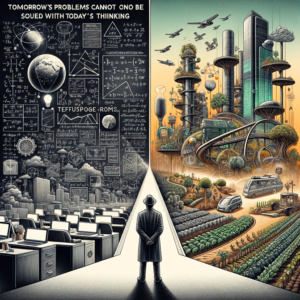
“Tomorrow’s problems cannot be solved with today’s thinking.”
Over the 15-20 years, the world has experienced profound shifts across various domains, and the rate of change associated with these shifts is only increasing. Here are some of the key shifts that are occurring that challenge us into new ways of thinking about how we work, live, interact with others, and importantly, how we make decisions:
1. Technology and Digitisation: The rise of the internet, smartphones, and social media has transformed how we communicate, access information, and do business. Artificial Intelligence (AI) and machine learning have become significant in industries ranging from healthcare to finance.
2. Globalisation: While globalisation has been a trend for many years, the past 20 years have seen an acceleration in the interconnectivity of economies and cultures, though recent events have, in fact, sparked a movement towards localisation.
3. Climate Change and Environmental Awareness: The impacts of climate change have become more apparent, leading to a greater emphasis on sustainability, renewable energy, and environmental conservation in policy and practice. This is especially impactful on the younger generations as they have to contemplate the world that they will inherent.
4. Economic Shifts: The 2008 financial crisis had a lasting impact on the global economy, leading to changes in regulation, a focus on economic resilience, and discussions about income inequality.
5. Healthcare Evolution: Advances in medicine, such as the Human Genome Project, have revolutionised healthcare. The COVID-19 pandemic has further shifted the landscape, emphasising public health and accelerating telemedicine.
6. Political Changes: The global political landscape has seen a rise in populism, shifts in superpower dynamics, and increasing polarisation. Social movements have also become more prominent, exploring how to manage and advocate for issues such as diversity, racial equality, and gender rights.
7. Demographic Changes: Ageing populations in developed countries and youth bulges in developing regions have significant implications for economies, healthcare, and immigration patterns. The need to care for the ageing population is placing great levels of stress on the global economy, especially when it has to treat other related issues such as healthcare, homelessness, defence, etc.
8. Work and Lifestyle: There’s been a trend towards more flexible work arrangements, including remote work, which has been dramatically accelerated by the pandemic. The gig economy has emerged as a significant sector. How the world adjusts following the pandemic remains to be seen.
9. Education: Digital technology has transformed education, with online learning platforms becoming more prevalent. There’s also a growing emphasis on lifelong learning, micro-credentialling and alternative education pathways.
10. Media and Entertainment: Streaming services have disrupted traditional media, leading to the rise of on-demand content. The way people consume news and entertainment has become more personalized and mobile.
11. Cybersecurity: As much of life and business has moved online, cybersecurity has become a critical concern for individuals, corporations, and governments.
12. Space Exploration: The last two decades have seen a renewed interest in space exploration, with private companies joining national agencies in the race to explore and utilize space.
13. Cultural Shifts: Cultural shifts have seen increased advocacy for LGBTQ+ rights, and the #MeToo movement has brought attention to issues of sexual harassment and gender inequality.
14. Retail and E-Commerce: The retail landscape has shifted dramatically with the rise of e-commerce, leading to the decline of brick-and-mortar stores in many areas and the rise of global online marketplaces.
These shifts have been driven by a combination of technological innovation, societal changes, economic fluctuations, and evolving cultural norms. They demonstrate the dynamic nature of global development and underscore the importance of adaptability and foresight in all areas of life and policy.
With these shifts occurring, the phrase “Today’s thinking will not solve tomorrow’s problems” is a call to innovate and adapt by thinking about things differently. It suggests that the solutions that worked in the past may not be effective for the challenges of the future. This idea is often cited in contexts like business strategy, environmental policy, education, and technology, suggesting that continuous learning and innovation are crucial for progress, and a powerful reminder to:
• Embrace change and be open to new ideas.
• Encourage creative problem-solving and innovation.
• Recognize the limitations of current methods and strategies.
• Prepare for future challenges by investing in research and development.
• Foster a culture that values critical thinking and adaptability.
Addressing these complex challenges in today’s rapidly evolving world requires new ways of thinking that are as dynamic and multifaceted as the problems themselves. Thinking about the way we think is often referred to as metacognition, and involves examining the processes we use to reflect, reason, and draw conclusions. It requires the development of a self-aware approach to our own cognition that allows us to understand and improve our learning and problem-solving abilities.
The following describes ‘thinking themes’ that represent on meta-cognition perspectives that we can apply when attempting to form our thinking to solve emerging challenges:
1. Systems: Recognising that complex problems are often part of larger systems. Understanding the interconnections within these systems can reveal leverage points for change and potential unintended consequences of actions.
2. Design: Utilising a human-centered approach to innovation that integrates the needs of people, the possibilities of technology, and the requirements for business success. It involves stages of empathising, defining, ideating, prototyping, and testing.
3. Integrative: Developing the ability to hold two opposing ideas in mind at the same time and then reach a synthesis that contains elements of both, improving on each. This kind of thinking can lead to more innovative solutions.
4. Futures: Engaging in strategic foresight through scenario planning and envisioning different future possibilities to better prepare for them. It helps organisations and individuals anticipate change and act proactively.
5. Adaptive: Be willing to change course as new information and circumstances arise. This type of thinking is flexible and responsive, recognising that what works today might not work tomorrow.
6. Critical: Applying reasoned, logical analysis to evaluate situations and information. It involves questioning assumptions, recognising biases, and examining the evidence before making decisions.
7. Creative: Encouraging divergent thinking to generate novel ideas. Creativity can be stimulated by embracing curiosity, experimentation, and a willingness to challenge conventional wisdom, often involving managed risk.
8. Collaborative: Leveraging the collective intelligence of diverse groups. By bringing together people with different expertise and perspectives, you can generate more comprehensive and robust solutions.
9. Ethical: Incorporating values and moral considerations into decision-making. As solutions to complex problems can have widespread implications, it’s important to consider the ethical dimensions of actions.
10. Reflective: Intentionally considering experiences, policies, and strategies, leading to insights about what works well and what needs to be improved.

“New thinking required to address for tomorrow’s problems..”
New thinking and new mindsets are required due to the complexity and the highly interconnected nature of the world that we live and work in. This has great impact especially when there are key strategic disruptive factors affecting the way we understand and interact with the world, for example:
• Digital Transformation: With the increasing dominance of digital technologies, strategies must incorporate digital tools and platforms. This might include leveraging data analytics, artificial intelligence, and digital marketing. It’s not just about using new tools, but also about rethinking processes and customer interactions in a digital-first manner.
• Globalisation and Localisation: In an interconnected world, strategies must balance global reach with local relevance. This requires understanding diverse markets, cultures, and regulations, and adapting your approach accordingly.
• Sustainability and Social Responsibility: Our thinking needs to address the growing emphasis on sustainable practices and social responsibility. Strategies must consider environmental impact, ethical sourcing, and community engagement, reflecting the values of a more socially conscious customer base and workforce.
• Agility and Resilience: Today’s fast-paced and uncertain environment demands adopting mindsets that are both agile and resilient to quickly adapt to change, while also being robust enough to withstand disruptions.
• Innovation-Centric Approach: Embracing innovation is crucial to relevance and viability. This involves not just creating new products or services, but also innovating in the way that we think about business models, operational processes, and customer experiences.
• Employee Empowerment and expectations in the workplace: The traditional top-down ‘directive’ approaches in the workplace is giving way to more collaborative and flexible work cultures. Empowering employees, especially the newer generations, is more important than ever before if they are to contribute ideas and take the initiative to lead more effective and contemporary strategies.
• Data-Driven Decision Making: The availability of big data and advanced analytics tools allows for more informed and precise strategic decisions. However, it also requires a new way of thinking about data, including how to ethically collect, analyse, and apply it.
• Adapting to Changing Consumer Behaviours: Our strategic thinking must evolve in response to changing consumer preferences, expectations, and behaviours, which are increasingly influenced by technology, social media, generational, and cultural shifts.
• Geopolitical Awareness: In an era of shifting geopolitical power dynamics, our thinking needs to account for international relations, trade policies, and political risks.
• Long-Term Vision with Short-Term Flexibility: Balancing short-term pressures with long-term goals is crucial. This requires a vision that guides overall direction, while maintaining flexibility to make tactical adjustments.
Our creation, adoption and implementation of strategy involves a blend of technological savvy, ethical considerations, resilience, innovation, and adaptability to changing global and local dynamics. By combining these different modes of thinking, individuals and organisations can develop more sophisticated and well-rounded approaches to the future, and better prepare themselves for the challenges ahead. It is through such multidimensional thinking that we can hope to find solutions that are sustainable, equitable, and effective.
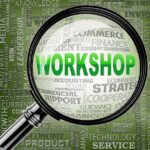
Exercise 1.1 – Personal Journal
• In a short paragraph, describe those things that you wish to change about yourself, especially those things relating to your ability to think more strategically and/or the way that you seek to solve problems.
• As a follow-up to this, create a list of 3-5 strategic thinking and/or problem solving skills that you wish to develop

Exercise 1.2 – Personal Journal
• list your top 3 ‘disruptive factors’ that affect you, personally and/or professionally
• describe how it affects you
• describe what would happen if no action was taken
Course Manual 2: Understanding our mindset
Objective. Understanding our mindset, and how to create healthy spaces, both physically and socially, to foster more effective thinking.
Introduction
Our mindset refers to the interaction of our attitudes, beliefs, and ways of thinking that shape how we interpret and respond to the world around us. It significantly influences our behaviour, our emotions, our interactions, and approach to challenges and opportunities. Importantly, it defines the way that we accumulate knowledge, sense-make, and create the parameters and condition that leads to how we make decisions. Our mindset shapes our thinking. Also known as ‘cognition’, thinking refers to the ability to process information, hold attention, store, and retrieve memories and select appropriate responses and actions. The ability to understand other people and express oneself to others can also be categorised under thinking. It will help us to understand how we makes sense of the world around us and, as a result, how we make decisions.
Strategic thinking requires a mindset that is healthy, alert, and engaged, enhancing the cognitive functions to support the analysis, complex problem-solving. It is also required to enable emotional regulation and stress management, which is crucial for gaining clarity to enable effective decision-making.
Navigating complex environments presents particularly difficult challenges that can hinder an individual’s ability to think strategically and make effective decisions. These challenges often arise from the inherent uncertainty, ambiguity, and rapid change associated with complex situations, and a recognition of these challenges is crucial for success in such environments. Developing an understanding of the differences between normal and complex situations will aid in better equipping ourselves with the most effective approach. Coupled with this, resilience, emotional intelligence, and a growth mindset will enable us to operate sustainably in complex environments through continual learning and adaption. Regular self-reflection and seeking feedback can also provide insights into how one’s mindset might be influencing their effectiveness in complex situations, all leading to a concept called cognitive fitness.
Linear and Non-linear Thinking
Due to the increasing complexity in the world that we work and live in, a shift in mindset is required to enable our thinking. We can consider this shift as a move from linear thinking to non-linear thinking. The concepts of linear and non-linear mindsets refer to fundamentally different approaches to thinking, problem-solving, and understanding the world. These mindsets can influence how individuals or organisations approach tasks, challenges, and planning.
The differences in characteristics between linear and non-linear mindsets and how it affects our thinking is described in the following:
1. Linear Mindset:
• Sequential Thinking: Linear thinking is characterised by a sequential, step-by-step approach to problem-solving and decision-making. It follows a logical progression, where one step leads directly to the next.
• Cause and Effect: People with a linear mindset often focus on direct cause-and-effect relationships. They look for simple connections and clear paths from problem to solution.
• Predictability: This mindset assumes a high degree of predictability and stability in the environment. Linear thinkers expect that similar actions will consistently lead to similar outcomes.
• Focus on Details: Linear thinking tends to be detail-oriented, breaking down larger problems into smaller, manageable parts, where the sum of the parts equals the whole.
• Conventional Approaches: Linear thinkers often rely on established methods and traditional strategies. They may prefer tried-and-true processes over novel solutions.
2. Non-Linear Mindset:
• Holistic Thinking: Non-linear thinking involves seeing the big picture and understanding how different parts interconnect through the richness of their relationships. It is more about exploring patterns and relationships rather than focusing on sequential steps.
• Focus on Details: Non-linear thinking focuses on the whole, where the whole is greater than the sum of the parts.
• Complexity and Emergence: This mindset is comfortable with complexity and ambiguity. Non-linear thinkers recognise that in complex systems, small changes can have large, unpredictable effects called emergent behaviour.
• Adaptability: Non-linear thinkers are often more adaptable and flexible. They are open to change and can adjust their approach as situations evolve.
• Innovative and Creative Solutions: A non-linear mindset encourages creative problem-solving and innovation. It thrives on brainstorming and out-of-the-box thinking.
• Acceptance of Uncertainty: Non-linear thinking involves accepting uncertainty and unpredictability as natural aspects of many situations, especially in rapidly changing environments.
In practice, both linear and non-linear mindsets have their place, and the most effective approach often involves a combination of the two. Linear thinking can be highly effective in stable, well-understood environments, or for problems where cause-and-effect relationships are clear. Non-linear thinking, on the other hand, is particularly valuable in complex, dynamic environments, or when dealing with new and novel challenges where innovative solutions are needed.
In the context of business and strategy, a balance between these mindsets allows for both efficient execution of well-understood processes (linear) and the agility to innovate and adapt in the face of uncertainty (non-linear).
Fixed & Growth Mindset
Renowned psychologist, Carol Dweck, is renowned for her work in the field of personality, social, and developmental psychology. She is best known for her research on the mindset psychological trait, where she distinguishes between the state of mind called “fixed mindset” and “growth mindset”, described as follows:
1. Fixed Mindset: Individuals who adopt a fixed mindset believe that their basic abilities, intelligence, and talents are fixed traits. They think that they have a certain amount of talent or intelligence, and that’s that; nothing can be done to change it. These individuals often avoid challenges, give up easily, see effort as fruitless, ignore useful negative feedback, and feel threatened by the success of others.
2. Growth Mindset: In contrast, individuals who adopt a growth mindset believe that their abilities and intelligence can be developed with time, effort, and dedication. They tend to embrace challenges, persist in the face of setbacks, see effort as the path to mastery, learn from criticism, and find lessons and inspiration in the success of others. As a result, they are more likely to reach higher levels of achievement.
Dweck’s work emphasises that the mindset we adopt profoundly affects our actions, behaviours, and the way that we approach our lives at work and at home. Her research has wide implications for education, sports, business, and relationships, and has been influential in encouraging practices that foster a growth mindset, such as praising effort rather than innate ability.
Complex or challenging situations requires the adoption of a growth mindset. It support the need for continual, and adaptive approaches, as well as the iterative learning required to treat uncertainty and ambiguity. It recognises that complexity is not a barrier to success, but an opportunity for development, learning and the identification of new and novel ideas.
Cognitive Fitness
Cognitive fitness is a concept developed by Dr. Roderick Gilkey and Dr. Clint Kilts. Being cognitively fit is like physical fitness, where there is a level of preparedness and focus that enables sustained performance. When applied to cognition, this sustained performance is attained through a state of optimised ability to reason, remember, learn, plan, and adapt. Their framework emphasises the importance of maintaining mental agility throughout one’s life, especially as one ages.
Cognitive fitness principles are critical in strategic thinking and effective decision-making. It recognises that the effectiveness of strategic thinking is closely tied to the cognitive health and abilities of the individuals and is particularly crucial when dealing with complex environments. In complex environments, where challenges are often unpredictable and multifaceted, having a high level of cognitive fitness can significantly enhance an individual’s ability to navigate and manage these challenges effectively.
The following provides a description of the key components of cognitive fitness according to Gilkey and Kilts:
1. Cognitive Reserve: This refers to the brain’s resilience to neuropathological damage. Gilkey and Kilts suggest that building cognitive reserve through lifelong learning and mental stimulation can delay the onset of cognitive decline.
2. Stress Management: They recognise that chronic stress can impair brain function, particularly memory and learning. Therefore, managing stress through techniques like mindfulness, meditation, and relaxation is crucial for maintaining cognitive fitness.
3. Physical Fitness: Physical exercise is seen as vital for cognitive health. Regular exercise, particularly cardiovascular exercise, increases blood flow to the brain and can lead to the creation of new neurons (neurogenesis).
4. Diet and Nutrition: A healthy diet rich in antioxidants, omega-3 fatty acids, and low in saturated fats is recommended for brain health.
5. Social Connectedness: Gilkey and Kilts emphasize the importance of social interactions and relationships in maintaining cognitive health. Engaging in social activities can provide emotional support and mental stimulation.
6. Novelty and Complexity: They advocate for the engagement in new and complex tasks to stimulate the brain. This includes learning new skills, taking on challenging projects, and breaking routine.
7. Mindfulness and Reflection: Practices that encourage mindfulness and reflection, such as meditation or journaling, are seen as beneficial for cognitive fitness. These practices can enhance self-awareness and emotional regulation.
8. Positive Outlook: Maintaining a positive outlook and attitude is considered important for cognitive well-being. Optimism and a sense of purpose can impact one’s mental state and cognitive abilities.
Dr. Gilkey and Dr. Kilts’ holistic approach to cognitive fitness emphasises the above as balance of physical, mental, and emotional health practices. Their perspective aligns with the broader understanding that cognitive health is not isolated but is deeply interconnected with overall well-being.
In practical terms, cognitive fitness is really all about implementing strategies, i.e., what kinds of things do we need to do if we want to think more effectively and make better decisions. Like to parallel to physical fitness, cognitive fitness requires the mind-muscle to be flexible, Agile and Strong
Flexibility involves using a variety of different strategies and kinds of thinking to achieve your outcomes; whatever they might be. One of the best exercises in flexibility is to take a multiple perspectives approach and look at a situation through the eyes of its various stakeholders. This is highly valuable when you’re working with a team or a client and critical in any conflict situation. You need to become flexible enough to get to the stage where you’re able to hold different people’s perspectives in your head easily. This isn’t easy. It means not being wedded to a particular approach or outcome and being able to incorporate new ideas into your thinking.
Agility is about your responsiveness. It involves self-awareness and understanding how other people think as well as being good at alternative scenario planning and thinking through contingencies and different options. Agility asks how quickly you can switch your approach and use these different strategies effectively? For example, being able to change your mental state so that your head is always in the best place emotionally and cognitively. Again, it’s not always easy!
Strength is about having the courage to be generous towards yourself and others whilst also being decisive and mentally tough, sometimes vulnerable yet always open and forgiving will make you become stronger and more resilient over time. It will make you a more valuable colleague and team member and a role model to others.

Exercise 2.1 – Activity
1 – not at all well
2 – somewhat well
3 – mostly well
4 – very well
1. Embracing situations as a learning opportunity: View complex challenges as chances to expand your knowledge and skills. Recognise that dealing with complexity can make you more adaptable and versatile.
2. Breaking Down Complex Problems: Large, complex problems can be overwhelming. Break them down into smaller, more manageable parts. This approach makes it easier to identify potential solutions and reduces the intimidation factor.
3. Seeking Diverse Perspectives and Collaborate: Complexity often requires considering multiple viewpoints. Collaborating with others who have different skills or perspectives can lead to more innovative solutions.
4. Focusing on Continuous Improvement: In complex situations, the first solution may not always be the best or most effective. Adopt a mindset focused on iterative improvements. Be open to refining and evolving your approach based on what you learn.
5. Cultivating Resilience and Adaptability: Complex problems often require multiple attempts and approaches before a solution is found. Be resilient in the face of setbacks and adaptable when circumstances change.
6. Remaining Curious and Open-Minded: In complex environments, assumptions and conventional wisdom may not always hold. Maintain a sense of curiosity and be willing to question and re-evaluate your understanding.
7. Emphasizing Process Over Outcome: In complex situations, the outcome may not always be within your control. Focus on the process and the learning it entails. This approach can lead to more innovative and flexible thinking.
8. Learning from Failures and Mistakes: When dealing with complex issues, mistakes are inevitable. View them as valuable learning experiences, not as failures. Analyse what went wrong and what can be done differently next time.
9. Practicing Patience and Persistence: Complex problems often can’t be solved quickly. Patience and persistence are key. Understand that progress might be slower than expected, and that’s okay.
10. Celebrating Small Wins: In a complex scenario, progress can be incremental. Recognize and celebrate small victories and milestones along the way. This helps maintain motivation and positive morale.
11. Seeking Knowledge through Continuous Learning: Complex situations often require new knowledge or skills. Be proactive in educating yourself and staying updated in your field or the specific area of complexity.

Case Study – Growth Mindset
Implementing a Growth Mindset to Drive Organisational Change at TechSW
Background
Tech Innovate Inc., a mid-sized software development company, faced stagnation in innovation and employee performance. The leadership team recognised the need for a cultural shift towards a more dynamic and resilient organisational behaviour. They identified the implementation of a growth mindset culture as a strategic approach to invigorate their workforce and foster innovation, adaptability, and continuous learning.
Problem Statement
Despite having a talented workforce and a strong market presence, TechSW struggled with:
• Low employee engagement and motivation.
• Fear of failure, leading to risk-averse behaviour.
• A silo mentality, with departments working in isolation.
• Limited personal and professional development opportunities for employees.
Objective
The primary objective was to transform the organisational culture to embrace a growth mindset, characterised by:
• An emphasis on learning from challenges and failures.
• Encouraging risk-taking and innovation.
• Promoting open communication and collaboration across departments.
• Facilitating continuous personal and professional development.
Implementation
Phase 1: Awareness and Education
• Leadership Workshops: Senior management participated in workshops to understand the principles of a growth mindset and how to model these behaviours.
• Employee Training Sessions: Introduced all employees to the concept of a growth mindset, illustrating its benefits through case studies and interactive sessions.
Phase 2: Integration into Practices
• Feedback and Recognition Systems: Revised performance metrics to reward effort, learning, and progress, not just end results. Implemented a peer recognition program to celebrate growth-oriented achievements.
• Development Programs: Launched mentorship and coaching programs, encouraging employees to pursue challenging projects and learn new skills.
• Communication Channels: Established open forums for sharing successes and failures, fostering a culture of transparency and continuous learning.
Phase 3: Institutionalization
• Hiring and Onboarding: Integrated growth mindset principles into recruitment, emphasising adaptability and learning potential over specific skill sets. New employee orientations included growth mindset training.
• Leadership Accountability: Leaders regularly shared their own learning experiences and failures, reinforcing the growth mindset culture. Performance reviews for managers included assessments of how they fostered a growth mindset within their teams.
Results
Within a year of implementing these changes, TechSW observed significant improvements:
• Increased Innovation: A 40% increase in new product ideas submitted by employees, with two new products successfully launched in the market.
• Improved Collaboration: Cross-departmental projects doubled, leading to more holistic solutions and a decrease in project completion times.
• Enhanced Employee Engagement: Employee satisfaction surveys showed a 30% improvement in engagement and morale.
• Resilience and Adaptability: The company navigated a major industry disruption with minimal setbacks, attributed to the flexible and proactive approach of its workforce.
Conclusion
The transition to a growth mindset culture at TechSW demonstrated that fostering an environment that values learning, resilience, and adaptability can lead to substantial organisational benefits. By prioritizing personal and professional development, encouraging risk-taking, and embracing challenges, TechSW revitalised its innovation pipeline and improved its market competitiveness. This case study illustrates the transformative potential of adopting a growth mindset in navigating the complexities of the modern business landscape.

Course Manual 3: Biases & Heuristics
Objective. Understanding the factors that may lead us to make flawed judgments and irrational decisions, and that impacts our ability to make sense of things in a balanced and rational manner.
Biases and heuristics are two important concepts in the field of cognitive psychology, particularly in the study of decision-making and judgment. The concept of biases and heuristics in decision-making and judgment was primarily developed by two psychologists, Daniel Kahneman and Amos Tversky. Their work in the 1970s and 1980s challenged the prevailing assumptions of the time about rational decision-making. They demonstrated how human judgment often deviates from logic and probability and showed that people use these mental shortcuts to simplify decision-making, especially in complex and uncertain situations, which led to systematic errors in judgment.
Biases
Biases are systematic patterns of deviation from rationality in judgment and decision-making. They are cognitive shortcuts that our brains use, often unconsciously, to simplify information processing. Biases can stem from various factors, including individual experiences, societal influences, emotional states, and limitations in cognitive processing capabilities.
There are many types of biases, but here are several of the main ones that you might have heard about previously:
1. Cognitive Bias: Arises from the way people process information and make judgments. Examples include confirmation bias (favouring information that confirms existing beliefs) and anchoring bias (relying heavily on the first piece of information received).
2. Confirmation Bias: The tendency to search for, interpret, favour, and recall information in a way that confirms one’s pre-existing beliefs, while giving disproportionately less consideration to alternative possibilities.
3. Social Bias: Occurs in interpersonal contexts, often because of social stereotypes and prejudices. This can affect judgments about people based on their race, gender, ethnicity, age, or other social categories.
4. Heuristic-Driven Bias: Results from mental shortcuts used in problem-solving and decision-making. For example, the availability heuristic leads people to overestimate the likelihood of events that are more easily recalled from memory, which may not accurately represent the actual frequency or probability.
Biases can significantly impact both individual and collective decision-making processes, leading to errors, misjudgements, and inefficient choices. Being aware of biases is crucial for improving critical thinking, enhancing decision-making quality, and fostering more objective evaluations in various aspects of life.
Heuristics
Heuristics simplify decision-making processes through the creation of ‘rules of thumb’. They are cognitive strategies used by the brain to deal with complex information quickly and efficiently, without the need for extensive analysis. They enable us to make rapid judgments and decisions, which is particularly useful in situations where time is limited, or the available information is ambiguous and/or incomplete. While heuristics are efficient, they can sometimes lead to errors in judgment, especially when we over-simplify complex information, which can mean overlooking some details and nuances.
Common examples of heuristics include:
1. Availability Heuristic: This involves estimating the likelihood of an event based on how easily examples of that event come to mind. If something can be recalled quickly, it’s often assumed to be more common or probable.
2. Representativeness Heuristic: This is used when making judgments about the probability of an event under uncertainty. It involves assessing the similarity between a sample and the population it’s drawn from or comparing the similarity between an object and a prototype.
3. Anchoring Heuristic: This occurs when people rely too heavily on the first piece of information they encounter (the “anchor”) and then make subsequent judgments based on this anchor, even if it’s unrelated or only partially relevant.
Heuristics play a crucial role in everyday decision-making. They help us navigate a world full of complex and varied decisions without needing to analyse every detail. However, being aware of heuristics and their potential pitfalls is important for making more accurate and rational decisions.
Biases & Heuristics in Complexity
Complex situations significantly impact the way biases and heuristics influence decision-making and judgment. In complex environments, where our stress levels are heightened and information is often incomplete, ambiguous, and overwhelming, reliance on these cognitive shortcuts and/or rules of thumb becomes more pronounced, whether intentionally or unintentionally, and so does the risk of errors that are associated with them.
Here’s how complexity affects biases and heuristics:
1. We increase our reliance on heuristics: In complex situations, where analysing all available information is impractical or impossible, individuals are more likely to rely on heuristics. These mental shortcuts help to quickly cut through the complexity, but they do so by simplifying information, which can lead to oversights.
2. There is a heightened risk of biases: The simplifications that heuristics entail often involve biases. For instance, in complex scenarios, the availability heuristic might lead to overemphasizing information that is easily recalled (like recent or dramatic events) while neglecting other relevant data. This can skew perception and decision-making.
3. We become overconfidence in familiar contexts: In complex environments, individuals might overly rely on their experience or expertise, leading to the overconfidence bias. This can result in underestimating the complexity of the situation and overestimating one’s ability to control or predict outcomes.
4. We have difficulty in recognising patterns: Complexity can make it challenging to accurately recognise patterns. The representativeness heuristic might cause individuals to incorrectly assess probabilities or relationships between events, leading to erroneous conclusions.
5. We are impacted by stress due to the cognitive load: Complex situations often increase stress and cognitive load, making it more likely for individuals to default to automatic, heuristic-based thinking. This can exacerbate biases, as there’s less cognitive resource available for critical analysis and reflection.
6. We experience challenges in decision-making: Complexity can lead to analysis paralysis, where the sheer amount of data and possible outcomes makes decision-making extremely challenging. In such cases, biases like status quo bias (preferring the current situation) or decision avoidance can emerge.
7. We misjudge risk and uncertainty: In complex environments, accurately assessing risks and uncertainties becomes more difficult. Biases like the anchoring effect can cause misjudgements, as initial impressions or pieces of information disproportionately influence one’s perceptions of risk.
Mitigating the impact of biases and heuristics in complex environments involves being aware of these cognitive tendencies, actively challenging your views by seeking diverse perspectives, breaking down complex information into manageable parts, and employing structured decision-making processes that encourage critical thinking and thorough analysis.
In complex environments we often rely on biases and/or heuristics to simplify and makes sense of information, and to make quick decisions. Often without knowing, biases and heuristics sway our sense of rationality and impacts our decision-making. Here are some examples of how this might occur in the workplace, especially when under pressue.
• Simplification of Complex Information: Heuristics help in simplifying complex information, but this simplification can lead to overlooking important details. For example, the “representativeness heuristic” might lead someone to categorize a situation based on how similar it appears to be to a known category, potentially ignoring unique aspects that don’t fit the pattern.
• Overconfidence in Judgment: In complex situations, individuals might overestimate their understanding or control over the situation due to the “overconfidence bias.” This can lead to underestimating risks or not seeking additional information.
• Anchoring Effect: When faced with complex decisions, people tend to rely heavily on the first piece of information they receive (the anchor), even if it’s irrelevant. This can skew subsequent decisions and judgments.
• Status Quo Bias: In complex environments, there might be a tendency to stick with known or familiar options (the status quo) rather than exploring new or innovative solutions, due to the discomfort and uncertainty associated with change.
• Confirmation Bias: People often seek information that confirms their pre-existing beliefs or hypotheses in complex settings. This bias can lead to disregarding information that contradicts their views, thus limiting the ability to fully understand multifaceted situations.
• Availability Heuristic: This involves overestimating the importance or probability of events that are more readily “available” in memory, which can be skewed by recent events or emotionally charged experiences. In complex situations, this might lead to misjudging the frequency or likelihood of certain outcomes.
• Groupthink: In complex group decision-making scenarios, there can be a collective drift towards conformity, where dissenting opinions or critical thinking are suppressed. This can result in a failure to consider all aspects of a complex situation.
• Framing Effect: The way information is presented or “framed” can significantly influence decision-making in complex scenarios. People might react differently to the same information depending on whether it is presented in a positive or negative light.
To manage these biases and heuristics in complex environments, it’s important to:
• Be aware of these cognitive shortcuts and their potential pitfalls.
• Seek diverse perspectives to challenge one’s views and assumptions.
• Slow down the decision-making process when possible to allow for more thorough analysis.
• Use structured decision-making processes to ensure a comprehensive evaluation of the situation.
• Continuously question and test assumptions, especially when dealing with unfamiliar or multifaceted issues.
Example
A situation analysis of biases and heuristics involves exploring how these mental shortcuts and predispositions impact decision-making and behaviour in a specific context. Below is an illustrative example of how biases and heuristics might affect a company’s strategic decision-making process:
Background: XYZ Corporation is a mid-sized technology firm looking to expand its product line. The leadership team is evaluating whether to develop a new product internally or to acquire a smaller company that has an innovative product ready for market.
Situation Analysis:
1. Anchoring Bias:
• During discussions, the initial cost estimates for internal development become the anchor point for all subsequent financial deliberations, possibly overshadowing the actual costs and benefits of acquisition.
2. Availability Heuristic:
• Recent high-profile tech acquisitions by competitors are easily recalled by the team, leading them to overestimate the success of acquisitions as a growth strategy.
3. Confirmation Bias:
• Members of the leadership team favour data that supports their initial opinion on whether to build or buy, potentially ignoring contradictory evidence that could lead to a more informed decision.
4. Status Quo Bias:
• There is a strong inclination to maintain the current course of action, which is to grow organically, as this is the path the company has successfully followed in the past.
5. Overconfidence:
• The development team is overly optimistic about their ability to create a new product on time and within budget, underestimating the risks and challenges based on their past successes.
6. Loss Aversion:
• The fear of losing control over the product’s direction and quality in the case of acquisition may lead to a disproportionate weighting of potential losses over potential gains.
7. Sunk Cost Fallacy:
• The company has already invested in preliminary research for new product development, which may unduly influence the decision to continue upon this path, even if an acquisition is more cost-effective.
8. Groupthink:
• To maintain harmony in the group, dissenting opinions about the acquisition might be suppressed, leading to a consensus decision without critical evaluation of all options.
9. Escalation of Commitment:
• The leadership team might feel compelled to commit to a chosen strategy even in the face of negative outcomes or feedback, due to the amount of time and resources already spent in the decision-making process.
10. Framing Effect:
• The way options are presented can significantly influence the decision. For example, framing the acquisition as a “strategic partnership” rather than a “takeover” could lead to more favourable perceptions.
Implications: Biases and heuristics can lead to suboptimal decisions that may not align with the company’s strategic objectives or market realities. It’s essential for XYZ Corporation to recognize these cognitive pitfalls and put in place mechanisms to mitigate their impact, such as involving a diverse group of stakeholders in the decision-making process, seeking external advice, and establishing a culture of critical thinking and open dialogue.
Recommendations:
• Conducting workshops on cognitive biases for the leadership team.
• Implementing a structured decision-making process that includes devil’s advocacy and pre-mortem analysis.
• Bringing in external consultants to provide an objective assessment of the build vs. buy scenario.
• Regularly reviewing past decisions to identify patterns of biased thinking and learning from them.

Exercise 3.1 – Situation Analysis
It all began when Emily presented her prototype, “Athena,” to her team. They were impressed by its capabilities and, anchored by their initial awe, the team’s subsequent evaluations of Athena were disproportionately positive. This was the anchoring bias at work, setting an unrealistic benchmark for Athena’s performance.

Case Study
Title: The Challenger Disaster: A Case Study on the Perils of Groupthink in Decision-Making
Introduction: On January 28, 1986, the Space Shuttle Challenger broke apart 73 seconds into its flight, leading to the deaths of seven astronauts. This tragic event is often cited as a classic case study of groupthink, a psychological phenomenon where the desire for harmony in a decision-making group leads to an irrational or dysfunctional decision outcome.
Background: The Challenger mission, designated STS-51-L, was set to be the 25th mission of NASA’s Space Shuttle program. On board was a crew of seven, including Christa McAuliffe, who would have been the first teacher in space. The launch had already been postponed multiple times due to technical and weather-related issues.
The Night Before the Launch: On the evening before the launch, engineers from Morton Thiokol, the contractor responsible for the Space Shuttle solid rocket boosters, expressed concerns over the effects of the unusually cold temperatures forecasted for the morning of the launch on the O-rings. These O-rings were critical components in the solid rocket boosters that needed to maintain their elasticity to prevent hot gases from leaking through joint seals.
The engineers’ concerns were based on data that showed the O-rings could lose their elasticity in cold weather, leading to a catastrophic failure. However, during a teleconference with NASA, Morton Thiokol management initially supported the engineers’ recommendation to delay the launch but eventually reversed their position and recommended the launch proceed as scheduled.
Groupthink Symptoms and Analysis:
1. Illusion of Invulnerability: NASA management and Morton Thiokol had developed a belief in the infallibility of the shuttle missions, underestimating the potential risks posed by the cold weather.
2. Collective Rationalization: Concerns about the O-rings were minimized with rationalisations like previous successful flights having encountered O-ring damage without catastrophic outcomes.
3. Belief in Inherent Morality: The group believed in the noble purpose of the space program and the pressure to succeed may have led them to overlook safety concerns.
4. Stereotyped Views of Outgroups: Engineers raising concerns were seen as overly cautious or not team players, which led to their warnings being dismissed.
5. Direct Pressure on Dissenters: Engineers who voiced concerns felt pressure from management to acquiesce to the majority view.
6. Self-Censorship: Individuals with doubts and deviations from the perceived group consensus did not speak up strongly enough.
7. Illusion of Unanimity: The lack of dissent was incorrectly seen as a sign of agreement and support for the launch decision.
8. Mindguards: Key leaders in NASA acted as mindguards, protecting the group from dissenting opinions and negative information that might undermine the decision to launch.
The Outcome: Tragically, the Challenger exploded shortly after liftoff due to the failure of an O-ring seal in its right solid rocket booster. The disaster led to a 32-month suspension of the Space Shuttle program and the formation of the Rogers Commission to investigate the accident.
Conclusion: The Challenger disaster serves as a stark reminder of the dangers of groupthink in decision-making processes, particularly in high-stakes environments. The desire for consensus and the suppression of dissenting views, coupled with organisational pressures, led to a flawed decision that had catastrophic consequences.
Lessons Learned: This case study emphasizes the need for open communication, critical evaluation of all available data, and the encouragement of a culture where dissenting opinions are valued and heard. It underscores the importance of checks and balances and the willingness to heed warnings from experts, even when they go against the prevailing group opinion.
The Challenger tragedy remains a powerful case study in the need for vigilance against groupthink, advocating for a decision-making culture that is inclusive, analytical, and safety-oriented.

Course Manual 4: Our Thinking Audit
Objective. Intentionally stopping to reflect and invest time to better understand our thinking preferences and cognitive styles, and the way we go about sense-making, solving problems, and creating solutions.
It is not often that we take the time to better understand about the way that we think as per the previously mentioned concept of meta-cognition. Yet the way that we think forms an integral part of our lives that influences the way that we act, behave, and make decisions. In this course, we will leverage the principles of neuroscience to unpack the way that we think so that we can better understand the thinking preferences and our cognitive styles in ourselves and that of others.
A “thinking audit” is not a standard term that you will find in cognitive science or psychology. However, we will undertake a simple one in this course as a self-reflective exercise to help you reflect and provide some insights on your own thought processes. Ideally, this thinking audit should be an ongoing process, not a one-time event, so that you may understand the progress that you are making.
Our cognitive styles describe how people perceive, process, and organise information. Some common cognitive styles include analytical thinking (focusing on details and logical reasoning), holistic thinking (emphasizing the big picture and patterns), and divergent thinking (generating multiple ideas and possibilities). Progressively taking stock of how you think and making conscious efforts to improve your cognitive processes can lead to better decision-making, enhanced problem-solving abilities, and greater overall mental clarity.
Our cognitive styles shape our thinking preferences. In neuroscience, this refers to the different ways individuals process and organise information in their brains and influence how we learn, make decisions, and solve problem. Here are a few key concepts related to thinking preferences in neuroscience:
Left Brain vs. Right Brain
The brain is divided into two hemispheres, and each hemisphere is associated with different thinking processes. There’s a longstanding belief that says one side of the brain is more dominant in each person. This left-brain vs. right-brain dominance theory first emerged in the 1960s when psychobiologist Roger W. Sperry conducted split brain experiments. He and his counterpart, psychology professor Michael Gazzaniga, were some of the first scientists to investigate hemispheric specialisations. Sperry and Gazzaniga found that the left hemisphere controls speech, language, and comprehension; recognizes words, letters, and numbers; and does analysis and calculations. This is why people who are more methodical and logical are believed to be “left-brained.” Meanwhile, the right hemisphere controls creativity, perception, and spatial understanding, and recognizes faces, places, and objects – hence why more creative and emotional people are said to be “right-brained.”
It is important to note that the brain is a highly interconnected organ, and both hemispheres work together to perform complex cognitive tasks. While certain functions may be more dominant in one hemisphere, the brain’s overall functioning is a result of the collaboration between both sides. Most cognitive tasks involve the coordination of both hemispheres, and it is important to note that our brains functions as a whole, and thinking processes involve both hemispheres working together.
Limbic vs. Cerebral Brain
Limbic thinking and cerebral thinking are two different modes of thinking that are often discussed in the context of decision-making and problem-solving. Limbic thinking, also known as emotional thinking or intuitive thinking, is driven by emotions and instincts. It is fast, automatic, and relies on gut feelings and past experiences. Limbic thinking is associated with the limbic system in the brain, which is responsible for emotions and memory. It can be helpful in situations where quick decisions need to be made or when dealing with complex and ambiguous information.
On the other hand, cerebral thinking, also known as rational thinking or analytical thinking, is a more logical and deliberate mode of thinking. It involves reasoning, analysis, and critical thinking. Cerebral thinking is associated with the cerebral cortex, the outer layer of the brain responsible for higher cognitive functions. It is often used in situations that require careful evaluation, planning, and problem-solving.
Both limbic thinking and cerebral thinking have their strengths and weaknesses. Limbic thinking can be useful in situations where quick decisions need to be made based on limited information, but it can also be influenced by biases and emotions. Cerebral thinking, on the other hand, allows for more careful analysis and evaluation, but it can be time-consuming and may overlook important emotional or intuitive aspects.
In many cases, a combination of both limbic and cerebral thinking is ideal. By considering both rational analysis and emotional intuition, individuals can make more well-rounded and informed decisions.
Whole Brain Thinking
Whole brain thinking is a concept that emerged from an integration of the fields of psychology and neuroscience. It suggests that for different people, certain parts of the brain are more active, controlling, or dominant in certain mental processes compared to other parts. Our ability to recognise our own thinking preferences in ourselves, and to develop the skills to access all parts of the brain allow us to elevate about thinking abilities. The whole brain concept emerged from observations of patients with brain injuries and the pioneering work of Roger Sperry, who won a Nobel Prize in 1981 for his split-brain research. However, this concept is often simplified into the popular notion of being “left-brained” or “right-brained”, which suggests that people have a preferred mode of cognitive functioning based on the dominance of one hemisphere.
The whole brain thinking concept was developed by Ned Herrmann while leading management education at General Electric’s Crotonville facility. Ned’s story is one of an innovative thinker who successfully bridged the gap between creativity and the corporate world. He was an engineer and an opera singer, so he wondered why he could be very capable at both, seemingly diametrically opposed skills. His journey led to the development of one of the most popular models for understanding cognitive diversity and thinking preferences in the workplace.
Ned started his career at General Electric (GE) in the 1950s as a physics teacher at the GE Apprentice School. His interest in creativity was piqued when he participated in a creativity workshop based on the work of Alex Osborn, known as the father of brainstorming. Herrmann became deeply involved in creativity and brain dominance research, blending his passion for education with his growing interest in human brain function. It was during his time at GE’s management education facility, Crotonville, that Herrmann’s exploration into brain dominance theory intensified. Influenced by Roger Sperry’s split-brain research, which earned Sperry a Nobel Prize in Physiology or Medicine, Herrmann began to investigate how the brain’s different parts influence learning and thinking styles.
Herrmann developed the whole brain concept, a model that suggests individuals have preferred modes of thinking that can be categorized into four quadrants. This concept was the precursor to the Herrmann Brain Dominance Instrument (HBDI), which Herrmann would later develop. It’s a psychometric assessment that aims to measure and describe thinking preferences in people, which Herrmann believed to be a key component of personality and cognitive style.
The HBDI assesses and categorizes the brain’s dominance in four different thinking styles, often represented as quadrants:
1. A Quadrant (Upper Left):
• This quadrant is associated with logical, analytical, and quantitative thinking. People with a dominant A quadrant are often good with numbers, logical reasoning, and critical analysis. They tend to be detail-oriented and are skilled at problem-solving through structured approaches.
2. B Quadrant (Lower Left):
• The B quadrant focuses on planning, organizing, and sequential thinking. Individuals with a preference for this style are often methodical, controlled, and conservative. They excel at implementation, administrative tasks, and processes that require a high degree of organisation.
3. C Quadrant (Lower Right):
• This quadrant reflects interpersonal, emotional, and intuitive thinking. People who are dominant in the C quadrant often have strong social skills, communicate well, and are in tune with their own and others’ emotions. They tend to be empathetic, expressive, and may excel in fields that require working with people and emotions.
4. D Quadrant (Upper Right):
• The D quadrant signifies imaginative, integrative, and conceptual thinking. Those with a D quadrant dominance are often creative, holistic, and visionary. They may be good at integrating disparate pieces of information and excel in fields that require innovation, long-term strategic thinking, and the ability to see the big picture.
The whole brain concept argues that while everyone has access to all four quadrants, individuals tend to develop a preference for one or more of these styles. This preference influences behaviour, learning, communication, and decision making.
In organisational contexts, Herrmann’s model is used to enhance self-awareness, improve team dynamics, and foster diverse thinking in problem-solving. By understanding their own and their team members’ dominant thinking styles, leaders can orchestrate more effective collaboration and leverage the cognitive diversity of their teams. It is important to note that while models like the HBDI can provide insights, they are one of many tools available for understanding cognitive preferences and are not definitive indicators of ability or value. Critics of such models suggest that they can oversimplify complex cognitive processes and personality traits. Nonetheless, the HBDI and similar tools are widely used in corporate training, team-building exercises, and leadership development programs.
More recent research has identified the concept of ‘neuroplasticity’. Neuroplasticity refers to the brain’s ability to change and adapt as a result of experience. It is one of the most important discoveries in the field of neuroscience, as it overturns the long-held notion that the brain’s structure and functions are fixed and unchangeable after a certain age.
Neuroplasticity
Neuroplasticity, or brain plasticity, is the ability of the brain to change and adapt throughout an individual’s life. This remarkable feature of the brain refers to the physiological changes in the brain that happen as a result of our interactions with our environment. From the development of new neural connections to the reassignment of specific functions to different parts of the brain, neuroplasticity plays a crucial role in the brain’s ability to learn new information, master new skills, recover from injuries, and adapt to new situations. The research into neuroplasticity continues to reveal its profound impact on learning, memory, recovery from brain injuries, and the potential for retraining the brain in disorders affecting the brain and nervous system. This understanding not only emphasizes the adaptability and resilience of the human brain but also offers hope for developing new treatments and interventions for a range of neurological and psychiatric disorders.
The benefits of neuroplasticity are vast and significant, impacting various aspects of life and health, including an enhanced ability to learn new skills, emotional resilience, enhanced memory, and ability to synthesize different ideas and concepts. Here are a few techniques that we can adopt to support brain function and to enhance neuroplasticity:
• Mindfulness and Meditation: Regular mindfulness practices, such as meditation, can improve focus, attention, and cognitive flexibility. These practices help reduce stress and enhance self-awareness, allowing for more effective strategic thinking.
• Cognitive Flexibility: The ability to shift perspectives and think creatively is crucial for strategic thinking. Engaging in activities that promote cognitive flexibility, such as solving puzzles or learning new skills, can enhance this ability.
• Emotional Intelligence: Understanding and managing emotions is essential for effective decision-making and strategic thinking. Developing emotional intelligence through self-reflection, empathy, and active listening can improve strategic thinking by considering the emotional impact of decisions.
• Continuous Learning: Engaging in continuous learning, seeking new experiences, and challenging assumptions can promote neuroplasticity and enhance our strategic thinking abilities.
• Dopamine and Motivation: Dopamine, a neurotransmitter associated with motivation and reward, plays a crucial role in strategic thinking. Setting clear goals, breaking them down into smaller tasks, and celebrating achievements can stimulate dopamine release, enhancing motivation and strategic thinking.
• Sleep, Rest & Recovery: Adequate sleep and rest are essential for optimal brain function. Research shows that sleep deprivation impairs cognitive abilities, including strategic thinking. Prioritizing quality sleep and incorporating regular breaks into your work routine can improve strategic thinking.
Neuroplasticity, the brain’s ability to form and reorganize synaptic connections in response to learning and experience, is a foundational concept that has profound implications for strategic thinking and cognitive development. Understanding and leveraging neuroplasticity can significantly enhance strategic thinking skills, enabling individuals and organisations to adapt more effectively to change, solve complex problems, and innovate.
Strategic thinking involves a complex interplay of multiple brain regions across a variety of areas, and adapting the functioning of our brain to deal with new mindsets. Whole brain thinking, neuroplasticity, and strategic thinking are complementary concepts that can significantly enhance decision-making, problem-solving, and planning in various contexts, from individual development to organisational management.
In reality, everyone uses different parts of their brains in different proportions, and it is never any utilisation of one function to the exclusion of others. In fact, the skills typically associated with one part of the brain are not exclusively confined to that part. By encouraging whole brain thinking in strategic contexts, you can enhance your ability to navigate complex situations, innovate, and make more informed decisions that account for a fuller range of perspectives and possibilities.

Exercise 4.1 – Activity
1. Information Processing
• How do you prefer to gather information: through detailed data, hands-on experience, observation, or discussion with others?
• When presented with new information, do you focus more on facts and details or the big picture and overall concepts?
2. Problem-Solving
• When faced with a problem, do you prefer to analyse it systematically or brainstorm creative solutions?
• Describe a recent problem you solved. What approach did you take to understand and address it?
3. Decision-Making
• When making decisions, do you rely more on logical analysis or intuition?
• Can you provide an example of a difficult decision you made recently? How did you arrive at your decision?
4. Learning Preferences
• What is your preferred way of learning new things: reading, listening, observing, or hands-on practice?
• Think about a time when you learned something new. What made the learning process easy or difficult for you?
5. Adaptability and Flexibility
• How do you adapt when a situation changes unexpectedly?
• Can you give an example of a time when you had to adjust your usual way of thinking or approach to suit a new situation?
6. Creativity and Innovation
• How often do you engage in activities that require creative thinking?
• Describe a situation where you had to think outside the box. How did you approach it?
7. Collaboration and Interaction
• Do you prefer working alone or as part of a team? Why?
• When working with others, how do you contribute to the group’s thinking process?
8. Reflection and Self-Evaluation
• How often do you reflect on your thought processes and decision-making?
• Can you identify any recurring patterns in the way you think or solve problems?
9. Handling Complexity and Ambiguity
• How do you deal with situations that are complex or ambiguous?
• Provide an example of a complex project or task you managed. How did you approach the complexity?
10. Stress and Pressure
• How does stress or pressure affect your thinking and decision-making?
• Can you describe a high-pressure situation and how you handled it?
11. Analysis of Cognitive Flexibility
• Are you readily able to adapt your thinking style based on the situation?
• Are you able to explore the same problem from different perspectives or angles?
12. Contextual Considerations
• Do you consider the context in which you are making decisions before actually making the decision?
• You do consider the impact that different environments/contexts might have on your decision making process?
There are various psychometric tests and questionnaires designed to assess cognitive styles. Examples include the Myers-Briggs Type Indicator (MBTI), the Herrmann Brain Dominance Instrument (HBDI), and the Kolb Learning Style Inventory, and a variety of others. These tools help in identifying preferences in information processing and decision-making.

Course Manual 5: Personal Mastery
Objective. Intentionally defining a self-directed pathway towards our strategic goals.
Definition of Personal Mastery
Personal Mastery is the process of living and working purposefully towards a vision and/or a desired outcome. This is usually in alignment with one’s values and in a state of constant learning about oneself and the reality in which one exists.
image too small
In his book “The Fifth Discipline: The Art & Practice of The Learning Organisation,” Peter Senge describes Personal Mastery as one of the five disciplines that form the foundation of a learning organisation. Senge’s concept of personal mastery goes beyond competence and skills, though it encompasses them. It is about creating a discipline of personal growth and learning, where an individual is committed to continually clarifying and deepening their personal vision, focusing their energies, developing patience, and seeing reality objectively.
Key components of personal mastery according to Senge include:
1. Lifelong Learning: Commitment to the process of learning, recognising that there is always room for growth and development. This involves being open to new ideas, perspectives, and experiences.
2. Personal Vision: Developing a clear sense of what is important to you, what you want to achieve in life, and the person you want to become. This vision guides your actions and decisions.
3. Understanding Reality: The ability to see the current reality of your life clearly, including both the positive aspects and the areas that need improvement. This realistic assessment helps in aligning actions with the personal vision.
4. Focusing Energies: Prioritizing actions and behaviours that are aligned with your personal vision and values, rather than being distracted by immediate concerns or other people’s agendas.
5. Practicing Patience: Recognizing that personal growth and reaching goals take time, and being willing to persist in the face of challenges and setbacks.
Personal mastery is not only about personal growth but also about contributing to the growth of the organisation. Individuals with high levels of personal mastery are more able to learn from their experiences, see and make sense of complex situations more clearly, and therefore contribute more effectively to their organisations. They embody qualities like self-awareness, a growth mindset, and the ability to innovate and adapt, which are crucial in a learning organisation. Senge emphasises that personal mastery is a discipline – it requires continual attention, practice, and commitment.
The relationship between personal mastery and strategic thinking is deeply intertwined. Personal mastery provides the foundational skills and attributes necessary for effective strategic thinking. For example:
• Self-awareness helps identify personal biases that might affect strategic decisions.
• Self-regulation ensures that emotions do not cloud judgment or strategic analysis.
• Motivation drives the pursuit of strategic objectives, even in the face of challenges.
• Goal-setting in personal mastery aligns with the planning aspect of strategic thinking, ensuring that personal and professional objectives support one another.
• Continuous learning is essential for both personal growth and for staying ahead in a rapidly changing environment, making it easier to anticipate trends and plan strategically.
To excel in strategic thinking, one must first cultivate personal mastery. This involves a commitment to self-improvement and a deep understanding of one’s own goals, strengths, and areas for growth. As you develop personal mastery, you enhance your ability to think strategically, making it easier to achieve your long-term objectives. This is often called intersection and synergy, as follows:
• Goal Alignment: Strategic thinking requires clarity about what you want to achieve, which is a fundamental aspect of personal mastery. By being clear about your personal and professional goals, you can apply strategic thinking to outline steps to achieve these goals, anticipate obstacles, and develop contingency plans.
• Self-Awareness and Strategy: Personal mastery enhances self-awareness, which is crucial for effective strategic thinking. Understanding your strengths and weaknesses allows you to devise strategies that capitalize on your assets and mitigate your limitations.
• Adaptability: Both strategic thinking and personal mastery involve being adaptable and open to change. Personal mastery helps individuals remain flexible and resilient in the face of challenges, while strategic thinking provides the framework for adjusting plans and strategies in response to changing circumstances.
• Continuous Learning: Lifelong learning is a component of personal mastery that also enriches strategic thinking. By continuously acquiring new knowledge and skills, you can better anticipate future trends, innovate, and adapt strategies to maintain relevance and effectiveness.
Integrating strategic thinking with personal mastery creates this powerful synergy that enhances an individual’s ability to navigate their personal and professional life with intention, resilience, and foresight. It empowers individuals to take control of their development, make informed decisions, and pursue their goals with a holistic and informed approach.
Here are some important pointers on how to embark upon your journey of personal mastery in context of adopting a strategic perspective:
o Develop a Personal Vision. Creating a personal vision involves reflecting on what you truly want in life, not just in your career but in all aspects of your being. This vision should be a source of inspiration and motivation, guiding your choices and actions. It’s about understanding your purpose and what brings you fulfillment.
o Practice Self-Reflection. Regular self-reflection is crucial for personal mastery. It helps you to understand your current reality, your values, beliefs, and the mental models that shape your actions and decisions. Reflective practices such as journaling, meditation, or even walks in nature can provide insights into your inner self and how you interact with the world.
o Commit to Lifelong Learning. Personal mastery is a lifelong journey that involves constantly seeking new knowledge, skills, and experiences. This could mean formal education, self-study, taking on new challenges at work, or pursuing hobbies and interests. The key is to remain curious and open to new ideas and perspectives.
o Cultivate Emotional Intelligence. Emotional intelligence is a cornerstone of personal mastery. It involves self-awareness, self-regulation, motivation, empathy, and social skills. By developing your emotional intelligence, you can better manage your emotions, relate to others, and navigate social complexities.
o Set and Pursue Stretch Goals. Stretch goals are ambitious goals that challenge you to extend beyond your current capabilities and comfort zone. Setting and pursuing such goals drives personal growth and learning. It’s about embracing challenges as opportunities for development.
o Develop Resilience. Resilience is the ability to bounce back from setbacks, failures, and disappointments. It involves a positive attitude, flexibility, and the ability to manage stress effectively. Developing resilience is crucial for navigating the ups and downs of the personal mastery journey.
o Practice Mindfulness. Mindfulness is the practice of being present and fully engaged in the current moment without judgment. It enhances self-awareness and helps in managing emotions and stress. Mindfulness can be cultivated through meditation, yoga, or simply by paying attention to your thoughts and feelings in daily activities.
o Build Supportive Relationships. Surround yourself with people who support and inspire you. This includes mentors, peers, friends, and family members who encourage your growth and provide feedback and perspective. Supportive relationships are invaluable for personal and professional development.
o Embrace Feedback. Feedback, both positive and negative, is essential for personal mastery. It provides insights into your strengths and areas for improvement. Cultivate a practice of seeking feedback regularly and view it as a gift for your growth.
o Practice Discipline and Persistence. Personal mastery requires discipline and persistence. It involves setting priorities, managing your time effectively, and staying focused on your goals, even in the face of distractions and obstacles.
Embarking on a journey of personal mastery is about embracing growth and striving towards becoming the best version of yourself. It’s a deeply personal process that varies from one individual to another, shaped by unique visions, goals, and life circumstances. By committing to personal mastery, you open yourself up to a life of continuous learning, fulfillment, and achieving your highest potential.

Exercises – Personal Journal
• Your thoughts on each aspect in relation to your strategic thinking skills
• What aspects stand out as your strengths
• What aspects require further work and improvement
1. Enhanced Self-Awareness:
• Understanding your strengths and weaknesses: Knowing your limitations and areas for improvement allows you to make informed decisions, delegate tasks effectively, and seek out complementary perspectives.
• Identifying your biases: Recognising your personal biases helps you approach situations objectively and avoid making decisions based on faulty assumptions.
• Managing your emotions: Maintaining emotional control allows you to think clearly under pressure, navigate difficult conversations, and foster collaboration in your team.
2. Improved Learning and Growth:
• Embracing a growth mindset: Believing in your ability to learn and grow fosters a willingness to experiment, take calculated risks, and adapt to changing circumstances.
• Continuously seeking knowledge and feedback: Actively seeking new information, learning from mistakes, and incorporating feedback from others allows you to refine your strategic thinking skills over time.
• Developing critical thinking skills: Honing your ability to analyze information objectively, identify assumptions, and consider alternative perspectives strengthens your strategic decision-making process.
3. Effective Communication and Collaboration:
• Clearly articulating your vision and strategy: Effectively communicating your ideas inspires buy-in from stakeholders and fosters collaboration within your team.
• Actively listening to diverse perspectives: Considering different viewpoints allows you to develop more comprehensive and well-rounded strategies.
• Building trust and rapport: Fostering strong relationships with colleagues and stakeholders enables open communication, collaboration, and effective implementation of your strategic plans.

Case Studies
Here is a case study structured example of how personal mastery may be addressed and developed within an organisational context for strategic thinking and problem solving.
Personal Mastery Case Study: Enhancing Strategic Thinking at SolarEdge Innovations
Background
SolarEdge Innovations, a rapidly growing renewable energy company, recognized the need to enhance its strategic thinking capabilities to maintain its competitive edge in a fast-evolving market. The company identified a gap in strategic alignment and decision-making processes across its teams, which was impacting its ability to innovate and respond to market changes effectively.
Problem Statement
Despite its success, SolarEdge Innovations faced several challenges that hindered its strategic agility:
• A lack of coherence in strategic vision across different levels of the organisation.
• Decision-making processes were often reactive rather than proactive, lacking in-depth analysis and foresight.
• Employees felt disconnected from the company’s strategic objectives, leading to lower engagement and innovation.
Objective
To address these issues, SolarEdge Innovations embarked on a Personal Mastery program aimed at:
• Developing a shared strategic vision that aligns with personal and organisational goals.
• Enhancing strategic thinking skills across the organisation to improve decision-making and innovation.
• Strengthening the connection between employees’ personal aspirations and the company’s strategic objectives.
Implementation
Phase 1: Building a Foundation of Personal Mastery
• Strategic Thinking Workshops: Introduced the concept of personal mastery and its importance for strategic thinking in workshops for employees at all levels.
• Self-Assessment: Employees engaged in self-assessment exercises to identify their values, strengths, and areas for growth in relation to strategic thinking.
Phase 2: Aligning Personal Visions with Organisational Strategy
• Vision Alignment Sessions: Facilitated sessions where teams developed collective visions that aligned with the company’s strategic goals, fostering a sense of ownership and commitment.
• Mentoring Program: Established a mentoring program pairing employees with leaders to discuss personal and professional development goals in the context of the company’s strategy.
Phase 3: Developing Strategic Thinking Skills
• Strategic Analysis Training: Conducted training on strategic analysis tools and frameworks, encouraging employees to apply these in their roles.
• Scenario Planning Exercises: Implemented scenario planning exercises to improve foresight and anticipate future challenges and opportunities.
Phase 4: Fostering a Strategic Mindset
• Innovation Challenges: Launched company-wide innovation challenges to apply strategic thinking to real-world problems, rewarding initiatives that aligned with strategic objectives.
• Continuous Feedback Loop: Introduced a system for ongoing feedback on strategic initiatives, allowing for reflection and continuous improvement.
Results
One year after the program’s inception, SolarEdge Innovations observed substantial improvements:
• Strategic Alignment: A unified strategic vision was more clearly communicated and embraced across the company, leading to more cohesive efforts towards common goals.
• Enhanced Decision-Making: There was a marked improvement in the quality of decision-making, with teams demonstrating greater foresight and analytical thinking.
• Increased Employee Engagement: Employees reported a stronger connection to the company’s goals and a clearer understanding of their role in achieving them, leading to a 30% increase in engagement scores.
• Innovation Boost: The innovation challenges generated a 50% increase in viable new product ideas and process improvements.
Conclusion
The Personal Mastery program at SolarEdge Innovations significantly enhanced strategic thinking capabilities across the organisation. By aligning personal and organisational visions and developing strategic thinking skills, SolarEdge Innovations fostered a culture of proactive decision-making and innovation. This case study underscores the value of personal mastery in achieving strategic excellence and maintaining competitive advantage in a fast-paced industry.

Course Manual 6: Intentional Change
Objective. Defining a powerful iterative learning cycle that we will utilise to develop our strategic thinking.
Strategic thinking is difficult at the best of times. It requires a blend of skills, including analysis, foresight, and planning, and often involves navigating complex, uncertain environments. When seeking to further develop our strategic thinking skills, we are presented with new challenges associated with a paradox of learning, i.e.,
“The more we know, the more we realise that there is to know.”
Some of the challenges in shifting to a more strategic way of thinking and developing our ability to solve problems and make more effective decisions are as follow:
1. Complexity and Uncertainty: Strategic thinking often involves making decisions with incomplete information and in situations where the outcomes are uncertain. This complexity can make it difficult to identify the best course of action.
2. Long-Term Focus: It requires the ability to think beyond the immediate and consider long-term implications and outcomes. Balancing short-term needs with long-term goals can be challenging.
3. Non-optimisation: We are often taught to optimise and make the best decision for the best outcome today. However, strategic thinking involves trade-offs that compromise what is ‘best’ for today, for a long-term benefit which may be difficult to quantify and/or justify.
4. Cognitive Biases: Humans are subject to various cognitive biases that can impair judgment and decision-making. For example, confirmation bias might lead us to favour information that confirms our pre-existing beliefs, hindering objective analysis.
5. Changing Environments: The rapid pace of change in technology, markets, and global dynamics can make it difficult to predict future trends and plan strategically.
6. Integration of Diverse Information: Strategic thinking involves synthesizing information from multiple sources and considering how different factors interact. This integration can be complex and time-consuming.
Like any skill, strategic thinking can be developed and refined over time. Intentional Change Theory (ICT) is a power framework developed by Richard Boyatzis that provides a structured approach to understanding how individuals can effectively achieve sustained, desired changes in their personal and professional lives. Using an iterative approach, it realises the benefits of incremental change rather than large step-change, a methodology that offers a greater chance of creating a sustainable shift. Central to this approach is the concept that lasting change does not happen by accident or all at once, but through a deliberate, guided process that encompasses five distinct stages over the fullness of time. These stages facilitate a journey of self-discovery, learning, and growth, enabling individuals to evolve in a way that aligns with their deepest values and aspirations, enabling the desired change to be sustainable with the greatest chance of success.
Here’s an overview of the five stages of Intentional Change Theory:
1. Discovering the Ideal Self
The journey begins with envisioning your “Ideal Self” – an image of who you want to be. This vision is shaped by your personal values, dreams, and aspirations. It serves as a powerful motivator for change, providing a clear direction for your personal growth journey. Discovering your Ideal Self involves reflecting on questions like what truly matters to you, what you are passionate about, and how you see your best self.
2. Exploring the Real Self
This stage involves a realistic assessment of your current state or “Real Self”. It’s about understanding where you are now in relation to your Ideal Self. This involves recognising your strengths and weaknesses, your current behaviours, and the emotions that drive those behaviours. Often, this stage requires collecting feedback from others to gain an accurate picture of how you are perceived and where you stand in relation to your goals.
3. Creating a Learning Agenda
With a clear understanding of the gap between the Real Self and the Ideal Self, the next step is to develop a personalised learning agenda. This agenda outlines the competencies, behaviours, and attitudes you need to develop to move closer to your Ideal Self. It’s not about fixing what’s wrong but building on your strengths and addressing areas for growth in a way that aligns with your personal vision.
4. Experimenting with and Practicing New Behaviours, Thoughts, and Feelings
This stage is about putting your learning agenda into action. It involves experimenting with new behaviours and stepping out of your comfort zone. This might include trying out new ways of thinking, feeling, and interacting with others. The key here is to practice these new behaviours in safe environments, learn from the experience, and gradually integrate successful changes into your life.
5. Developing Supportive Relationships
No change journey is complete without the support of others. This stage highlights the importance of cultivating relationships that encourage and support your growth. These relationships can provide feedback, offer encouragement, and hold you accountable to your goals. Supportive relationships can come from mentors, coaches, peers, family members, or friends who are invested in your development.
Benefits of ICT as an iterative change approach over step-change
Iterative change and step change (also known as radical or transformational change) are two different approaches to change. Each has its benefits and is suitable for different situations. Developing new competencies such as strategic thinking does not occur overnight, therefore an approach that facilitates constant yet small changes to occur is more likely to be successful, especially when it come to changing our thinking, our habits, and our behaviours. Here are some of the benefits of iterative change over step change:
• Flexibility: Iterative change allows for more flexibility and adaptability. Since changes are implemented in small steps, it is easier to adjust the direction based on feedback and emerging circumstances. This is particularly beneficial in fast-changing and complex environments where persisting rigidly to a long-term plan might lead to missed opportunities and/or adherence to outdated strategies.
• Risk Management: By implementing change gradually, we can minimize risk. If a particular change does not produce the desired outcome, the negative impact is limited, and we can quickly pivot without significant repercussions. This contrasts with step changes, which often involve substantial investments and higher stakes, making missteps more costly.
• Continuous Improvement: Iterative change is closely aligned with the concept of continuous improvement. It encourages ongoing evaluation and refinement, fostering a culture of constant development and learning. This approach can lead to sustained long-term growth and competitiveness.
• Engagement and Acceptance: Changes that are introduced gradually are generally more easily accepted and implemented. As humans, we tend to resist large, sudden changes due to our fear of the unknown and potential disruptions to our routines. Iterative changes, being smaller and more manageable, can help us feel more involved and less overwhelmed, facilitating smoother implementation.
• Learning and Development: Iterative change provides opportunities for learning and development. Each iteration can be seen as an experiment from which valuable data and insights can be gleaned. This process of testing, learning, and adapting fosters a productive learning environment and can lead to more effective and efficient practices over time.
• Better Resource Allocation: With iterative change, resources can be allocated more efficiently. Since the change process is gradual, organisations can spread out the cost and resource allocation over time, allowing for better cash flow management and less strain on resources at any given point.
• Increased Control: Iterative change gives us more control over the change process. We can monitor progress closely, adjusting as needed to ensure that the change aligns with the broader strategic goals. This level of control is harder to maintain in a step change scenario, where changes are more significant and once initiated, harder to modify without incurring significant costs or delays.
While iterative change has many benefits, it’s important to note that not all situations are best suited to this approach. Some circumstances, such as when a company needs to respond to a disruptive market force or when undergoing a significant strategic pivot, might require the speed and decisiveness of a step change. The choice between iterative and step change should be based on the specific context, goals, and challenges faced by the organisation.
Leveraging ICT to enhance Strategic Thinking
ICT has wide-ranging applications, from personal and team development, and leadership coaching to organisational change and educational settings. For applications involving strategic thinking, ICT can guide individuals to become more effective by aligning their behaviours with their vision of an ideal leader who can understand and make sense of a broad range of considerations before making a contextually appropriate and thoughtful decision. In organisations, ICT can facilitate transformative change by helping teams and individuals align their actions with the organisation’s vision and goals. In education, ICT can be used to design curricula that foster self-directed learning and personal growth among students.
When ICT is integrated with strategic thinking approaches, it provides a powerful framework for achieving sustained personal and professional development by taking skills to a completely new level. While ICT outlines the process for personal transformation, strategic thinking equips individuals with the analytical and planning skills necessary for navigating complex environments and making informed decisions that align with long-term goals.
Here are some considerations to utilising ICT to develop your strategic mindset:
1. Aligning the Ideal Self with Strategic Thinking Goals
• Vision with Strategy: Begin by envisioning your Ideal Self not only in terms of personal attributes but also in relation to your strategic life and career goals. Consider how your personal vision aligns with the long-term objectives you want to achieve. This alignment ensures that your efforts towards personal change are directly contributing to your broader strategic aims.
• Strategic Self-Assessment: In exploring your Real Self, use strategic analysis tools such as SWOT (Strengths, Weaknesses, Opportunities, Threats) to assess not only your personal competencies but also how external factors might influence your journey towards your Ideal Self. This strategic self-assessment helps identify areas for personal development that are critical for achieving your strategic goals.
2. Creating a Learning Agenda with Strategic Prioritisation
• Prioritise Learning: With a strategic mindset, prioritise areas for development based on their potential impact on your long-term objectives. Focus on acquiring skills and knowledge that offer the greatest leverage in moving you towards your Ideal Self and fulfilling your strategic goals.
• Strategic Skills Development: Identify specific strategic thinking skills, such as problem-solving, analytical thinking, and planning, that you need to develop. Incorporating these skills into your learning agenda will enhance your ability to navigate complex situations and make decisions that align with your vision.
3. Experimenting with strategic behaviours
• Strategic Experiments: When experimenting with new behaviours, adopt a strategic approach by setting clear objectives for each experiment, monitoring outcomes, and analysing feedback. This methodical approach allows you to test behaviours in different contexts and evaluate their effectiveness in advancing your strategic goals.
• Adaptive Learning: Use strategic thinking to adapt your approach based on the results of your experiments. Being flexible and willing to adjust your tactics in response to new information and changing circumstances is key to achieving both personal growth and strategic objectives.
4. Developing Supportive Relationships with a Strategic Network
• Strategic Networking: Actively build and cultivate relationships with individuals who can provide strategic support, guidance, and feedback. Seek mentors and peers who have expertise in areas relevant to your strategic goals. These relationships can offer valuable insights, open new opportunities, and provide the encouragement needed to navigate challenges.
• Feedback Loops: Create mechanisms for regular feedback within your network. This could include setting up periodic review sessions with mentors or establishing peer feedback groups. Use this feedback to refine your strategies and make informed adjustments to your personal development plan.
5. Leveraging Strategic Thinking for Continuous Improvement
• Strategic Reflection: Regularly reflect on your progress towards becoming your Ideal Self in the context of your strategic objectives. Evaluate which strategies are working and which need adjustment. This continuous loop of action, feedback, and reflection is essential for sustained growth and achievement.
• Long-Term Planning: With a strategic mindset, always look ahead to anticipate future challenges and opportunities. Plan your personal and professional development activities with an eye towards future trends and changes in your environment. This foresight will help you stay relevant and aligned with your long-term vision.
Combining ICT with strategic thinking empowers you to pursue personal and professional development with a clear focus, making deliberate choices that not only contribute to your growth as an individual but also advance your strategic objectives. This holistic approach ensures that your journey towards your Ideal Self is both intentional and strategically aligned with your broader life goals.
ICT is rooted in the belief that meaningful and lasting change is possible when individuals engage in a purposeful process of self-discovery and growth. In the following courses, we will move through these stages of discovering the Ideal Self, assessing the Real Self, creating a learning agenda, practicing new behaviours, and developing supportive relationships, individuals can make significant strides towards realising their full strategic thinking and problem-solving potential.

Exercise – Personal Journey Reflections
1. Embrace change as an opportunity: Shift your perspective to view change as an opportunity for growth and development, rather than a threat or loss. This mindset encourages openness and flexibility, key attributes for navigating change successfully.
2. Seek to build your resilience: Strengthen your resilience by building emotional intelligence, practicing stress management techniques, and maintaining a positive outlook. Resilience helps you to bounce back from setbacks and stay committed to your change goals.
3. Embrace a growth mindset: Cultivate a growth mindset by embracing challenges, learning from failures, and persisting in the face of obstacles. This mindset enables you to see change as a pathway to learning and self-improvement.
1. Defined clear objectives: Establish clear, measurable goals for what the change aims to achieve. This clarity provides direction and purpose, guiding your actions and decisions throughout the change process.
2. Assessed your current situation: Conduct a thorough assessment of your current situation to understand the strengths, weaknesses, opportunities, and threats related to the proposed change. This assessment helps in identifying the resources required and potential challenges to address.
3. Considered a change plan: Create a detailed plan outlining the steps needed to achieve the change, including timelines, responsibilities, and milestones. A structured plan ensures a coordinated and systematic approach to implementing change.
4. Considered how you will deal with obstacles: Anticipate potential challenges and resistance you may encounter and develop strategies to address them. Being proactive in obstacle planning increases your adaptability and resilience during the change process.
1. Engage stakeholders: Involve key stakeholders in the planning and implementation phases of change. Their input and support can enhance buy-in, reduce resistance, and provide valuable perspectives.
2. Create a supportive network: Build a network of supporters who can offer guidance, encouragement, and feedback throughout the change journey. This network could include mentors, peers, or professional support services.
3. Communicate effectively: Develop a communication approach that keeps all relevant parties informed and engaged. Transparent and regular communication builds trust, clarifies expectations, and fosters a culture of collaboration.
1. Skill development: Identify any new skills or knowledge required to navigate or implement the change successfully. Invest in training and development opportunities to build these competencies.
2. Allocate resources: Ensure that the necessary resources, such as time, budget, and technology, are allocated to support the change initiatives. Adequate resourcing is crucial for overcoming challenges and achieving objectives.
1. Stay Flexible: Be prepared to adjust your plans based on feedback and new information. Flexibility allows you to respond effectively to unforeseen challenges and opportunities.
2. Learn from the Process: Treat the change process as a learning experience. Reflect on successes and setbacks to gain insights and improve future change efforts.

Case Studies
Here is a case study structured example of how an Intentional Change approach can be applied within an organisational context to develop strategic thinking and problem solving.
Intentional Change Theory Case Study: Revitalising Growth at Apex Digital
Background
Apex Digital, a mid-sized software development firm, had experienced rapid growth in its early years but had recently hit a plateau in innovation and market expansion. The leadership team recognized that to reignite growth and stay competitive, a profound organisational change was necessary. They decided to employ Intentional Change Theory (ICT) as a framework to guide this transformation.
Problem Statement
Apex Digital was facing several challenges that hindered its growth:
• Employee engagement and motivation were low, with high turnover rates among key talent.
• Innovation had slowed, with fewer new product ideas making it to development.
• The company’s strategic direction lacked clarity, leading to misaligned efforts and resources.
Objective
The main objectives of employing ICT at Apex Digital were to:
• Enhance employee engagement and reduce turnover.
• Foster a culture of innovation and continuous improvement.
• Align the organisation’s efforts with a clear and compelling strategic vision.
Implementation of ICT
Phase 1: Discovering the Ideal Self and Vision
• Leadership Vision Workshops: Executives participated in workshops to articulate their personal visions and ideal versions of themselves as leaders. This process was then extended to include managers and team leads.
• Organisational Vision Retreat: A company-wide retreat was organized to collectively define Apex Digital’s ideal future state, including culture, products, and market position.
Phase 2: Assessing the Real Self
• 360-Degree Feedback: Implemented a comprehensive 360-degree feedback system to help individuals understand their strengths and areas for development.
• Organisational Diagnostics: Conducted an organisational audit to assess current capabilities, culture, and processes against the envisioned future state.
Phase 3: Creating the Learning Agenda
• Personal Development Plans: Employees created personal development plans focusing on closing the gap between their real self and ideal self, with specific learning goals.
• Strategic Learning Initiatives: Launched initiatives to address organisational gaps identified in the diagnostics, such as leadership training, innovation workshops, and team-building activities.
Phase 4: Experimenting and Practicing New Behaviours
• Innovation Labs: Established cross-functional teams to work on innovation projects in a “lab” environment, encouraging experimentation and risk-taking.
• Leadership Coaching: Provided ongoing coaching for leaders to practice new behaviours aligned with their ideal self and organisational needs.
Phase 5: Developing Supportive Relationships
• Mentorship Program: Introduced a mentorship program to support personal and professional growth, pairing younger employees with experienced mentors.
• Feedback Culture: Cultivated a culture of open and constructive feedback, reinforcing the organisation’s commitment to continuous learning and development.
Results
Within two years of implementing ICT, Apex Digital saw significant improvements:
• Employee Engagement: Employee satisfaction and engagement scores increased by 40%, with turnover rates decreasing by 50%.
• Innovation Metrics: The number of new products in development doubled, and the company saw a 35% increase in patent filings.
• Strategic Alignment: A clear, unified strategic vision was established, leading to more focused efforts and better resource allocation.
Conclusion
By applying Intentional Change Theory, Apex Digital successfully revitalized its growth trajectory. This case study demonstrates the power of ICT in facilitating organisational change, enhancing employee engagement, and fostering innovation. The ICT framework helped Apex Digital to align its people, culture, and strategy towards a common vision, creating a more agile, innovative, and motivated organisation.

Course Manual 7: The Ideal Self and Real Self
Objective. Defining and describing our ideal self in relation to our current self, so that we can best construct our learning journey.
Before making an intentional change, we need to discover and understand, to some degree, who we want to be, whether as an individual, a team, a project and/or an organisation. We will generically refer to these as ‘self’. Once discovered, then we can turn our attention to the gap that exists in between our ideal and real self, specific to the goal of become better strategic thinkers, to understand:
What we call our “ideal self” is an image of the character of the individual, team, project and/or organisation that we want to be. There are three components to developing the image of our ideal self:
• An image and/or a vision of a desired future
• A hope that we can attain it
• Aspects of one’s core identity, which includes enduring strengths, on which to build for this desired future
In this case, we are undertaking this course to cultivate our abilities to think more strategically, which is a valuable goal for personal and professional development at any level, and whether we seek to do this as an individual or as a team, project and/or organisation.
We wish to enhance our strategic thinking to:
• enhance our capacity to anticipate future challenges and opportunities
• make informed decisions
• navigate complex situations effectively
However, we may not seek this goal in isolation, as it may come with many other things that we seek to improve ourselves and take our thinking to the next level.
Desired Reality – The Ideal Self
Just like champion athletes who develop and use an image of themselves performing at their peak in preparation for competition, there is power in focusing on what we desire, i.e., the end goal. People develop a deep emotional commitment to making a change if they have created an image of their ideal self and use it in their change process. Hence, the output of the first discovery is a personal vision of your ideal self.
Discovering the Ideal Self is the foundational stage of Intentional Change Theory (ICT), a comprehensive model developed by Richard Boyatzis that guides individuals through the process of deliberate personal and professional transformation. This stage is crucial for setting the direction of one’s change journey, as it involves deep reflection and envisioning the kind of person one aspires to become. This process is not just about setting goals or objectives but is a profound exploration of one’s values, passions, and ultimate purpose in life. Let’s delve into the components and significance of this stage, along with strategies for discovering your ideal self.
The Significance of the Ideal Self
The concept of the Ideal Self represents a person’s hopes, dreams, and aspirations. It is a vision of who you want to be, encompassing your values, strengths, and passions. This vision serves as a motivational force, driving you towards growth and change. The Ideal Self is distinct from the “Ought Self” (who you think you should be based on societal and external expectations) and the “Real Self” (who you currently are).
Focusing on the ideal ‘self’ shifts the change process from being deficit-driven and focusing on fixing weaknesses, to being strengths-based and future-oriented, thus enhancing intrinsic motivation and engagement in the change process.
Components of the Ideal Self
1. Values and Beliefs: Core values and beliefs are fundamental to defining your Ideal Self. They serve as the guiding principles for your behaviour and decisions, reflecting what is most important to you.
2. Passions and Interests: Identifying what you are truly passionate about is key to understanding your Ideal Self. These are activities, causes, or subjects that deeply engage you and bring you joy.
3. Strengths and Talents: Recognising your capabilities in term of your natural talents and strengths allows you to envision a future where these attributes are fully realised and leveraged.
4. Vision of the Future: The Ideal Self encompasses a vivid and compelling vision of the future, including personal achievements, relationships, and the impact you wish to have on the world.
Discovering your Ideal Self is not a one-time task but an ongoing process of exploration and refinement. As you grow and your circumstances change, your vision of your Ideal Self may also evolve. This dynamic process ensures that your personal development journey remains aligned with your deepest values and aspirations. The Ideal Self acts as a north star, guiding your decisions, actions, and growth efforts. It provides a source of inspiration and motivation, especially when faced with challenges or setbacks. By keeping your Ideal Self in focus, you create a compelling vision of what you aspire to become, driving intentional change and personal evolution.
Current Reality – Your Real-Self
The “Real Self” in ICT is about understanding and accepting one’s current state, including strengths, weaknesses, and the discrepancies between one’s current reality and their aspirations or ideal self. This acceptance is not about resignation but serves as a starting point for intentional, positive change. In fact, lasting change is more likely when it is self-directed and focuses on developing what is right about a person rather than fixing what is wrong. It is rooted in positive psychology’s strengths-based approach to personal development and leadership. This approach has been applied in various contexts, including leadership development, coaching, organisational change, and personal growth, illustrating its versatility and effectiveness in fostering intentional change.
The real self is the person that other people see and with whom they interact. For many of us, our self-image is some mixture of awareness of our own internal state and the feedback we receive from others about who we are. It can be challenging to get a solid grasp of our actual strengths and weaknesses, either because we don’t want to look too closely, or other people are reluctant to let us know what they see. To really consider changing a part of yourself, you must have a sense of both what you value about yourself and want to keep, and what aspects of yourself you want to change. Where your ideal self and real self are not consistent can be thought of as gaps or weaknesses. The output of this second discovery is a personal balance sheet. It involves taking a broad, long-term perspective, considering the bigger picture, and integrating this insight into daily actions and decisions.
Activities aimed at exploring and understanding your real self are foundational in personal development and can significantly impact your self-awareness, growth, and overall well-being. Here are several activities designed to help you engage with and reflect on your real self:
• Journaling: Writing regularly in a journal is a powerful way to gain insights into your thoughts, feelings, and behaviours. Dedicate time to reflect on your day, how you reacted in different situations, and why. This can help uncover your true feelings and thoughts.
• Strengths and Weaknesses Assessment: Identify your strengths and weaknesses through self-reflection or tools like personality tests (e.g., VIA Character Strengths, Myers-Briggs Type Indicator). Understanding your strengths allows you to leverage them more effectively, while acknowledging weaknesses can guide personal development.
• 360-Degree Feedback: Gather feedback from friends, family, colleagues, and supervisors to gain a comprehensive view of how others perceive you. This can provide valuable insights into your behaviour and how it aligns with your self-perception.
• Mindfulness and Meditation: Practices like mindfulness and meditation can enhance self-awareness by focusing your attention on the present moment and your current thoughts and feelings without judgment.
• Life Story Exercise: Write down the story of your life, highlighting events that had a significant impact on you. This exercise can help you identify themes, patterns, and turning points in your life, contributing to a deeper understanding of your real self.
• Values Clarification: List your core values and examine how they influence your decisions and actions. Understanding your values can clarify what is truly important to you and guide your behaviour in a more authentic direction.
• Goal Setting and Reflection: Set personal goals that are aligned with your ideal self and reflect regularly on your progress towards these goals. Consider adjustments in your approach or goals based on these reflections.
• Try New Experiences: Engaging in new activities or hobbies can reveal unknown aspects of your personality and capabilities, offering insights into your preferences, dislikes, and potential areas for growth.
• Role Reflection: Reflect on the various roles you play in life (e.g., parent, friend, employee) and how you feel and behave in each role. This can reveal how your real self adjusts or shifts in different contexts.
• Mentoring and/or Coaching: Working with a professional mentor or coach can provide structured guidance in exploring your real self. They can offer objective feedback and strategies to address personal challenges and foster growth.

Engaging in these activities can foster greater self-awareness and authenticity, helping you live in closer alignment with your real self. Remember, understanding your real self is an ongoing process that evolves with time and life experiences.
Once you have a sense of your ideal self, it’s time to turn our attention to how our ideal self compares with our current “real” self so that we can focus on the gap that is in between and set ourselves up for our growth trajectory.

Exercise – Engage in Creative Conversations
• Personal Feedback: Seek feedback from trusted friends, family, or colleagues on your strengths and potential. Sometimes, others can see aspects of our Ideal Self that we overlook.
• Role Models and Inspirations: Identifying people you admire and the qualities they embody can provide clues to your Ideal Self. Consider what aspects of their lives or character resonate with you. Speak with them if possible, to learn more about how they developed the aspiration qualities that you seek.
• Experiential Learning: Take the opportunity to experiment with new experiences, roles, or activities that align with your interests and values. These experiences can provide valuable insights into what makes you feel most fulfilled and alive.
• Life Themes Analysis: Look for recurring themes or patterns in your life that have consistently brought you satisfaction and happiness. These themes can point towards your core values and passions.

Case Study – Champion Athlete
The following is an anonymised case study based on a real life story. It describes how this professional athlete envision their ideal self towards their ultimate performance goals.
Background
Alex is a professional track and field athlete specialising in the 400 meters hurdles. Alex grew up in a small town with limited access to advanced sports facilities. From a young age, she showed exceptional speed and endurance, dominating local competitions. Despite her early success, Alex faced significant challenges, including limited coaching resources and financial constraints. However, her passion for track and field, combined with a strong belief in her own abilities, kept herself motivated.
The Power of Envisioning Success
• Mental Imagery and Visualisation: Alex began practicing mental imagery and visualisation techniques as part of her training regimen. Every night before going to sleep, she would visualise herself executing the perfect race, from the starting blocks, then over each hurdle, to crossing the finish line. She focused on the details: the sound of the starting gun, the texture of the track under her spikes, the rhythm of her breathing, and the feeling of crossing the finish line ahead of her competitors.
• Goal Setting: Alex set clear, ambitious goals for herself. Her ultimate goal was to win a gold medal at the Olympic Games. To achieve this, she broke down her goal into smaller, measurable objectives, including improving her personal best time by 0.2 seconds each season, qualifying for the national team, and winning medals at major international competitions.
• Overcoming Obstacles: Alex’s journey was not smooth. She faced injuries, disappointments, and defeats. However, her practice of envisioning success helped her to maintain a positive outlook and resilience. After each setback, she would revise his mental imagery to include overcoming these new challenges, reinforcing her belief in his ability to achieve his goals.
Achievements
Alex’s dedication to both physical and mental training paid off. She qualified for the Olympic Games, an achievement that was a testament to her hard work and perseverance. At the Olympics, Alex delivered the performance of her lifetime. As she had visualised so many times, she crossed the finish line first, winning the gold medal and setting a new record for her country.
Impact and Legacy
Alex’s story became an inspiration to aspiring athletes worldwide. It highlighted the importance of mental preparation in achieving sporting excellence. Her approach to envisioning success demonstrated that while physical training is crucial, the mental aspect of sports can be a powerful tool in realising one’s potential.
Conclusion
Alex’s journey from a young talent to an Olympic champion illustrates the profound impact of envisioning success. Her story emphasises that achieving greatness in sports is not solely a matter of physical ability but also a testament to the power of the mind. Alex’s legacy is a reminder to athletes in all disciplines that visualising success is an essential component of the path to achieving their dreams.

Course Manual 8: Creative Tension
Objective. Understanding and leveraging our desire to grow so that we can most effectively undertake our learning journey.
Introduction
Creative tension represents the gap between our vision for the future (ideal self) and our understanding of our current reality (real-self), or between what is and what we desire it to be. This tension is considered “creative” because it can be a powerful driver of change, innovation, and growth, motivating individuals and organisations to move towards their vision or goals. We can utilise the concept of creative tension to explore the desire between these two points, i.e.,
• To cultivate a powerful and engaging experiential awareness of our future self — the self we truly want to become.
• To cultivate a powerful and engaging experiential awareness of the current reality of present-day self — with eyes wide open.
Creative Tension applications
• Personal Development: Individuals can use creative tension as a tool for personal growth by setting clear personal goals (vision) and honestly assessing their current situation (reality). The tension between the two can motivate action towards personal development.
• Organisational Change: In organisations, creative tension can drive systemic change and innovation. By fostering a culture that acknowledges the current state while continuously striving for a shared vision, organisations can harness creative tension to propel forward.
• Problem-Solving: Creative tension is also useful in problem-solving and design thinking, where the desired outcome (solution or innovation) is clear, but the path to achieving it requires creativity and experimentation.
• Education and Learning: Educators can leverage creative tension by setting challenging but achievable goals for their students, encouraging them to stretch beyond their current capabilities and engage deeply in the learning process.
How Creative Tension Works
Aspects of ‘self’, whether as an individual or as a team, project and/or organisation, can be explored by considering the following:
• Vision: The process begins with a clear vision of what one wants to achieve. This vision should be compelling and inspiring, providing a clear contrast to the current state.
• Current Reality: Acknowledging the current state is crucial. This involves a realistic assessment of where one or an organisation stands in relation to the vision.
• The Gap: The gap between the current reality and the vision generates a natural tension. Unlike stress, which often feels overwhelming and negative, creative tension is energizing and focused on positive outcomes.
• Energy for Change: Creative tension can provide the energy and motivation for change. It encourages individuals and organisations to find innovative solutions and to act toward closing the gap between reality and vision.
Creative tension can be best understood through the metaphor of a rubber band stretched between two hands as shown in the image below.
The upper of the two hands points to the powerful and engaging experiential awareness of the envisaged future self that you want to create. The lower hand points to the powerful and engaging experiential awareness of present-day you, seen as clearly and honestly as possible. The tension in the rubber band seeks resolution by drawing the two hands together in balance:
• Stretched too far apart, there is too much tension and the rubber band will break.
• Not stretched enough, there is little to no tension, and no direction can be determined.
• Sufficient tension provides direction, but without too much stretch that makes the end goal unrealistic and/or too daunting.
Managing this balance in creative tension effectively requires an intentional focus on ensuring a balance. It’s important to ensure that the vision is neither too far out of reach (which can be demotivating) nor too easy to achieve (which can lead to complacency). Regular reflection and adjustment of both the vision and the perception of current reality can help maintain this balance, especially at different stages in life where you may or may not have the capacity for tension.
Creative tension can be a transformative force, provided it is harnessed with intention and balanced with supportive structures and practices that guide the creative process toward achieving the envisioned future. In practical terms, there are generally two ways in which creative tension can resolve itself.
The first way this can happen is by reducing our aspiration, e.g. by:
• deciding that our ideal self is unrealistic for us to achieve
• telling ourselves it would somehow be undesirable
• convincing ourselves it would be impossible for anyone to achieve
When we back off, water down, or abandon the future we envisioned, in effect we reduce the tension in the rubber band by allowing the top hand to be pulled back down towards the bottom hand.
The second way the creative tension can resolve itself is by the present day self moving towards the future self, i.e. by the lower hand moving up towards the upper hand by leveraging our assets, skills, and motivations to seek the desired outcome.
That said, we need to be careful to avoid the pitfall of self-deception by ensuring that:
• what we want to achieve is genuine movement of the present-day self towards the future we’ve envisioned for our self.
• what we want to avoid is deceiving ourselves about how close we already are to the future self, through thoughts like:
• “Oh, I’m not really that far away from the future me already”
• “I’m being too hard on myself”
• “I know other people say negative things about me — but that’s just their bias, insecurity or personal agenda”
• etc.
When we back off from our true aspirations, or lie to ourselves about current reality, we undermine the creative tension that is essential if we want to ensure the path of least resistance draws us to our genuinely desired future self. Similarly, when we rush into half-baked, quick fix ‘solutions’, we fail to establish the much more powerful underlying structural tension dynamic that brings into play our deeper resourcefulness.
Why do we back off on our vision, indulge in self-deception, or go for quick fixes?
In short…emotional tension.
Emotional tension refers to a state of mental or emotional strain, often arising from situations that evoke conflicting feelings, stress, or anxiety. This tension can be the result of various factors, including personal conflicts, unmet needs, unresolved issues, or challenging circumstances. It manifests in various ways, including feelings of unease, restlessness, frustration, or distress. Emotional tension can impact an individual’s mood, behaviour, and overall mental health, influencing their interactions with others and their ability to cope with daily activities.
Causes of Emotional Tension
• Conflict: Interpersonal conflicts or internal conflicts between one’s values, desires, and actions can create emotional tension.
• Stress: High levels of stress from work, relationships, or other life pressures can lead to emotional tension.
• Change: Significant changes in life, such as moving, changing jobs, or losing a loved one, can provoke emotional tension due to uncertainty and adjustment difficulties.
• Unmet Needs: When emotional, social, or physical needs are not met, it can lead to feelings of dissatisfaction and tension.
• Trauma: Past or recent traumatic experiences can contribute to ongoing emotional tension.
Effects of Emotional Tension
1. Psychological Impact: Emotional tension can lead to anxiety, depression, irritability, and mood swings.
2. Physical Symptoms: It can manifest physically through symptoms like headaches, muscle tension, fatigue, and sleep disturbances.
3. Behavioural Changes: Individuals might experience changes in behaviour, such as withdrawal from social activities, aggression, or increased use of alcohol or drugs as coping mechanisms.
4. Cognitive Effects: Concentration, decision-making, and memory might be adversely affected by ongoing emotional tension.
Emotional tension manifests as various negative feelings experienced when we see the gap between our imagined future aspiration and our present-day current reality. Examples of emotional tension include:
• guilt — “I should have achieved more progress by now”
• self-doubt — “I don’t think I’ve got what it takes”
• blame — “They won’t let me”
• frustration — “I’ve tried lots of times before but never get anywhere”
• fear — “What if I aim high and then fail?”
Emotional tension is a natural response to the complexities of life. Recognising its sources and effects can empower individuals to seek effective strategies for managing it, contributing to better emotional health and quality of life.
When we first embark on the practice of deliberately cultivating creative tension, emotional tension can seem an ever-present and unavoidable hindrance. It can be truly debilitating if we keep undermining ourselves due to negative emotions that appear to be ever-present and unavoidable alongside creative tension.
There is a simple technique that we can employ to free ourselves from the energy-sapping and effort-undermining effect of emotional tension. Not by denying it, but by embracing it. We can make this happen by seeing it clearly so the penny drops that it doesn’t actually sit alongside the creative tension, but rather it is simply an aspect of current reality.
The emotional tension only exists in my present-day current reality. By the simple practice of seeing emotional tension for what it is, i.e., part of my present-day reality but not part of my future self, we can observe it, but it no longer has the power to hold us back. Drained of its power, we become free from its potentially crippling effects.
We are free to create truly inspiring aspirations for my future self without driving with the brakes on. By creating an inspiring aspiration for the future and maintaining scrupulous honesty about current reality, we can unlock maximum power to create the future that we seek.
Here are some suggested ways of managing emotional tension:
• Mindfulness and Relaxation Techniques: Practices like meditation, deep breathing, and yoga can help reduce emotional tension by focusing the mind and relaxing the body.
• Physical Activity: Regular exercise can alleviate stress and improve mood, helping to reduce emotional tension.
• Seeking Support: Talking to friends, family, or a professional therapist can provide relief and offer new perspectives on stressful situations.
• Time Management: Managing time effectively can reduce stress and the emotional tension that comes with feeling overwhelmed.
• Healthy Lifestyle Choices: Adequate sleep, a balanced diet, and avoiding excessive alcohol and caffeine can support overall well-being and reduce emotional tension.

Exercises – Personal Journey Reflections
• Ideal self. What are my deepest aspirations for my future self?
• Real self. Where am I in relation to my future self aspirations?
• Creative & Emotional Tensions. What emotional tensions come up when I set up creative tension, and how can I remind myself that this is simply part of current reality, so it stops holding me back?

Case Study – Sample application of Creative Tension
Problem
Creative tension arises from the gap between vision and current reality. When properly managed, it can fuel creativity, drive innovation, and lead to significant organizational improvements. In these complex times, businesses may struggle to keep pace with disruptions in industry, leading to the need for a transformative approach to rekindle its innovative spirit and market position. However, there can often challenges in overcoming complacency and resistance to change. The solution is to create an environment where creative tension could be utilised as a catalyst for innovation rather than a source of conflict and stagnation.
Implementation of Creative Tension:
1. Vision Setting: Leadership articulated a compelling vision for the future, aiming to position the business at the forefront of technological innovation.
2. Current Reality Assessment: Open forum can be held to discuss the business’s current state, encouraging transparency and honesty about the challenges faced.
3. Gap Analysis: By comparing the current reality to the vision, the business can identify the ‘creative gap’ and used it as a springboard for action.
4. Innovation Teams: Cross-functional teams are often useful to explore innovative solutions by promoting a culture of collaboration and creative problem-solving.
5. Iterative Development: Utilising iterative methodology allows for experimentation, testing, and adaptation of ideas, fostering a fail-fast, learn-quickly environment.
6. Feedback Loops: Regular feedback sessions should be held to ensure that the creative tension remained constructive and aligned with the business goals.
Desired outcomes
By aligning the organisation around a shared vision and actively managing the gap between that vision and the current reality, businesses can create a dynamic environment that fosters creativity, collaboration, and continuous improvement, specifically:
• Enhanced Innovation & Market Position
• Improved Morale, Collaboration, Teamwork & Ownership
• Increased Resilience & Adaptability to market forces
Reflections:
• Clear communication of vision and current realities is crucial for creating constructive creative tension.
• Employee involvement at all levels ensures buy-in and harnesses a wide range of creative insights.
• Fostering a culture that views failures as learning opportunities encourages risk-taking and innovation.

Course Manual 9: Creating a Learning Agenda
Objective. Defining those things that we need to learn and build knowledge on our way to achieving our ideal self.
Once we have established and understand, as best we can:
• Our ideal self,
• Our real self,
• The creative tension,
…we can now go about defining ways to undertake the journey. For this course, we are focused on strategic thinking and problem solving, however this process can be applied to any desire to improve, develop new skills etc. We should now define our pathway that will take us forward, i.e., our learning agenda.
A learning agenda is an intentional structured plan that outlines the key questions, activities, and resources needed to gain knowledge and develop skills in a specific area. In this case, it specifically serves as a roadmap for those seeking to address knowledge gaps, improve decision-making, and achieve specific learning goals associated with their strategic thinking, which can be accomplished individually and/or as a team.
The learning agenda to develop your strategic thinking is not just how you show up externally to others, but what happens inside your mind that leads to a shift in your thinking and your approach. Thinking about the way we think, often referred to as metacognition (as explored in an earlier course), is a fundamental aspect of human cognition that involves self-reflection on one’s thought processes, learning strategies, and cognitive biases. Metacognition enables us to monitor, evaluate, regulate, and shift our cognitive processes, making it a critical skill for effective learning, problem-solving, and decision-making.
We will utilise a learning agenda to systematically explore and address gaps in our understanding or knowledge, to inform decision-making, policy development, program implementation, or to improve practices and outcomes. By doing this, we hope to leverage the benefits that the learning agenda has to offer, including:
• Intentional focus on learning efforts: Ensures clarity on the desired learning outcomes and avoids scattered learning approaches.
• Improves efficiency: Streamlines the learning process by identifying relevant activities and resources.
• Promotes accountability: Creates a framework for tracking progress and evaluating learning achievements.
• Enhances collaboration: Facilitates shared learning experiences and knowledge exchange within teams.
Before we embark on our learning agenda, here are some considerations that will help us define and personalise our experience.
Consideration #1 – Focus on your strengths
Focusing on strengths over weaknesses is an intentional approach in both personal development and organisational management. This philosophy is grounded in the belief that individuals and teams will achieve greater success and satisfaction by building on their inherent strengths rather than spending disproportionate time trying to address gaps, fix deficiencies and/or improve their areas of weakness. The strengths-focused perspective is grounded in positive psychology and is designed to enhance engagement, performance, and satisfaction by building on what we naturally do well. The concept is widely applied in various contexts, including career development, education, and leadership.
Focusing on strengths before weaknesses is an approach that has gained significant attention and support in various fields, including psychology, education, and management, for several reasons:
• Builds Confidence: Emphasising strengths helps individuals build confidence and self-esteem by focusing and describing what we are good at. When people are aware of their strengths and can use them effectively, they feel more competent and capable, which can be the launchpad to motivate them to tackle challenges, including addressing their weaknesses.
• Positive Psychology: The strengths-based approach is rooted in positive psychology, which focuses on what makes life most worth living and what makes things most worth doing well. This approach suggests that understanding and utilising one’s strengths can lead to greater happiness, fulfillment, and success, as opposed to the traditional focus on fixing problems or deficits.
• Increases Engagement: When individuals or employees focus on their strengths, they are more likely to be engaged and passionate about what they are doing. This is because they are often working in alignment with their innate talents and interests, which can lead to higher levels of satisfaction and productivity.
• Improves Performance: Research has shown that focusing on strengths can lead to better performance outcomes. Teams that understand and leverage each member’s strengths can work more effectively and efficiently, leading to improved results and achievements.
• Facilitates Growth: By starting with strengths, individuals can use their existing positive attributes as a platform for growth. This approach does not ignore weaknesses but instead creates a supportive framework for personal development. When people feel good about their abilities, they are more likely to be open to exploring areas of improvement and developing new skills.
• Promotes Resilience: Recognising and utilising one’s strengths fosters resilience. When faced with adversity, individuals who know their strengths can leverage them to navigate challenges, recover from setbacks, and adapt to changing circumstances.
• Customised Strategies: A focus on strengths allows for more personalised and effective strategies for improvement and success. It acknowledges that a one-size-fits-all approach does not work for personal or professional development and that individual differences should be celebrated and utilised.
Focusing on strengths before weaknesses can lead to increased confidence, engagement, performance, and personal growth. It provides a positive and constructive framework for individuals to understand and apply their unique talents, which can enhance their ability to address weaknesses in a supportive and empowering way.
Consideration #2 – Competencies, a holistic view
When undergoing development, there is often a tendency to focus on one thing to the exclusion of others. For example, we may have the knowledge about certain things, but have relatively little know-how or skills to practically undertake those things in practice.
As part of defining an effective learning agenda for developing our strategic thinking, we need to adopt a holistic approach, i.e., finding the right balance between the benefits of knowledge, the practical skills to apply that knowledge, and having the right behaviours and attitudes to undertake the process. The construct of competencies enables us to achieve this.
Competencies refer to a combination of skills, knowledge, attitudes, and behaviours that contribute to an individual’s capacity to perform effectively in a job, task, or situation. They enhance our abilities by extending our innate characteristics or talents that we have, which can include cognitive abilities like analytical thinking or creative problem-solving, as well as physical abilities like strength or agility. These can be naturally occurring or developed to some extent through practice and effort. Competencies are often used as a framework in various contexts, such as human resources, engineering, project management, education, and personal development, to identify, evaluate, and develop the capabilities required for success in specific roles or tasks.
Here’s a breakdown of the key aspects of competencies:
• Skills. Skills are specific learned activities that an individual can perform proficiently, such as coding, writing, or public speaking. These can be developed and improved over time with practice and training.
• Knowledge. Knowledge refers to the information, facts, principles, and understandings that an individual possesses. It can be domain-specific, such as knowledge of finance or marketing, or general, such as critical thinking or problem-solving techniques.
• Attitudes & Behaviours. Attributes are the personal traits or behaviours that an individual exhibits, such as reliability, adaptability, and leadership. These are often considered part of one’s personality and can significantly impact how effectively they work individually or in teams.
Competencies are dynamic and can evolve with experience, education, and changes in the environment or job requirements. They provide a comprehensive way to understand and approach performance, learning, and development in various settings.
Consideration #3 – Your learning style
David Kolb’s Experiential Learning Theory, introduced in 1984, posits that learning is a process whereby knowledge is created through the transformation of experience. Central to this theory are four distinct learning styles that Kolb suggests are based on four stages of the learning cycle, some of which resonate more than others as based on our inherent preferences. According to Kolb, effective learning is seen when a person progresses through a cycle of four stages: Concrete Experience (CE), Reflective Observation (RO), Abstract Conceptualization (AC), and Active Experimentation (AE). Each learning style represents a combination of two preferred stages in the learning cycle.
Here are the four learning styles:
1. Diverging (CE/RO)
• Characteristics: These learners are sensitive. They prefer to watch rather than do, tending to gather information and use imagination to solve problems. They are best at viewing concrete situations from multiple perspectives.
• Strengths: Strong in brainstorming and generating creative ideas.
• Preferred Activities: Group work, open-ended questions, and activities that allow for creativity.
2. Assimilating (AC/RO)
• Characteristics: These learners are conceptual and prefer a logical approach. They require a good clear explanation rather than a practical opportunity. They excel at understanding wide-ranging information and organizing it in a clear logical format.
• Strengths: Strong in creating theoretical models and understanding complex information.
• Preferred Activities: Lectures, reading, exploring analytical models, and having time to think things through.
3. Converging (AC/AE)
• Characteristics: These learners can solve problems and will use their learning to find solutions to practical issues. They prefer technical tasks and are less concerned with people and interpersonal aspects.
• Strengths: Strong in practical application of ideas and using their learning to solve specific problems.
• Preferred Activities: Technical tasks, problem-solving, and experiments.
4. Accommodating (CE/AE)
• Characteristics: These learners are hands-on and rely on intuition rather than logic. They use other people’s analysis, and prefer to take a practical, experiential approach.
• Strengths: Strong in carrying out plans and involving themselves in new and challenging experiences.
• Preferred Activities: Simulations, case studies, and in-the-field work.
image too small

Exercise – Designing your Learning Agenda
• Overall goal: Clearly defines the overarching objective of your learning journey.
• Target audience: Specifies who the learning agenda is intended for (individuals, teams, etc.).
• Learning context: Briefly outlines the context or situation that necessitates this learning initiative.
• Identify key questions: Formulate a set of critical questions that address the knowledge gaps hindering informed decision-making or action related to the chosen topic. These questions should be SMART:
o Specific
o Measurable
o Achievable
o Relevant
o Time-bound
• Plan diverse activities: Outline a variety of activities that address the identified learning questions and cater to different learning styles. Examples include research, online courses, workshops, expert consultations, case studies, group discussions, and more.
• Compile resources: List relevant resources that support the chosen learning activities, such as websites, books, articles, tools, and software.
• Set a timeline: Establish a realistic timeframe for completing each learning activity and achieving the overall learning goal.
• Evaluation plan: Define how you will assess the effectiveness of your learning journey, including self-reflection, knowledge checks, and performance improvement evaluation.
• Acknowledge the dynamic nature of learning: Recognise that the agenda may need to be revised and adapted as you progress and encounter new information or evolving needs.

Case Study – A guide on applying Kolb’s Learning Styles
Applying Kolb’s Learning Styles and the Experiential Learning Model involves recognising and adapting to the different ways individuals learn, to enhance learning outcomes across various settings—educational, professional, or personal.
Here’s a guide on how to apply Kolb’s Learning Styles effectively:
Understanding Kolb’s Learning Styles
Kolb suggests four distinct learning styles, derived from a four-stage learning cycle:
1. Concrete Experience (CE) – Learning through feeling and experiencing.
2. Reflective Observation (RO) – Learning through watching and reflecting on experiences.
3. Abstract Conceptualization (AC) – Learning through thinking and conceptualizing.
4. Active Experimentation (AE) – Learning through doing and experimenting.
Individuals may prefer one style over others, but effective learning involves navigating through all four stages of the cycle.
Application in Educational Settings
1. Assess Learning Styles: Use assessments or observations to identify the preferred learning styles of students.
2. Design Multimodal Learning Experiences: Create lesson plans that incorporate activities catering to all four learning styles. For example, a science lesson could include a hands-on experiment (CE), a group discussion to reflect on the results (RO), a lecture on the theoretical principles behind the experiment (AC), and a project where students apply what they learned to a new problem (AE).
3. Encourage Reflective Learning: Guide students to reflect on their learning process and outcomes, helping them understand their preferences and how to engage in all stages of the learning cycle for deeper learning.
Application in Professional Development
1. Tailor Training Programs: Design training that accommodates different learning styles. For example, when introducing a new software tool, include a demonstration (CE), provide time for reflection and feedback (RO), offer conceptual training on how the tool fits into broader workflows (AC), and assign a small project using the tool (AE).
2. Foster a Learning Culture: Encourage employees to recognize their learning styles and seek out experiences that challenge them to cycle through all stages of learning, promoting versatility and adaptability.
3. Implement Collaborative Learning: Facilitate group learning experiences where employees with different learning styles can share insights, offering a richer understanding of the subject matter.
Application in Personal Development
1. Self-Assessment: Reflect on your own learning preferences and consider how you can engage in activities that stretch across all four stages. For example, if you’re learning a new language and prefer abstract conceptualization, make sure to also engage in conversation practice (CE), reflect on your interactions (RO), and try writing in the language (AE).
2. Goal Setting: When pursuing personal goals, plan activities that incorporate each learning style. This ensures a comprehensive learning experience that can adapt to various contexts and challenges.
3. Lifelong Learning: View learning as a cyclical process. Seek new experiences, reflect on them, conceptualize the lessons learned, and apply those lessons to new situations.
Conclusion
Applying Kolb’s Learning Styles and Experiential Learning Model requires awareness and intentionality in designing and engaging with learning experiences. By accommodating the diversity of learning styles, educators, trainers, and individuals can enhance the effectiveness and inclusivity of learning environments, ultimately fostering a deeper, more comprehensive understanding and application of knowledge.

Course Manual 10: Crafting your Learning Environment
Objective. Enacting your learning agenda to practice those things that we have learnt in a safe environment.
Once you have defined your learning agenda, i.e., what you wish to learn and how you wish to learn it, it is time to put it into practice. The implementing stage in Intentional Change Theory (ICT) is crucial for translating the insights and plans developed in earlier stages into concrete actions that lead to transformation and growth. This stage is where the rubber meets the road, involving the actualisation of one’s Learning Agenda developed in the previous phase. Preparing for change is a critical step in the process of personal or organisational transformation into a more strategic way of thinking. It sets the foundation for successful implementation of change initiatives, helping individuals and organisations to navigate the challenges and uncertainties that come with change. Remember, preparation is an ongoing process that adapts as circumstances evolve, ensuring that you remain aligned with your change objectives and capable of achieving your desired outcomes.
Here are some practical considerations on how you can effectively approach the implementing stage:
• Action Planning: Convert your Learning Agenda into a detailed action plan. This should include specific, measurable, achievable, relevant, and time-bound (SMART) goals. Break down each goal into actionable steps that you can take on a daily, weekly, or monthly basis.
• Experimentation and Practice: Begin to experiment with new behaviours, skills, or mindsets that align with your ideal self. Practice is key to embedding these changes into your life. This might involve stepping out of your comfort zone, trying new things, and learning from the outcomes—both what works and what doesn’t.
• Building Supportive Relationships: Surround yourself with a supportive network that can offer encouragement, feedback, and accountability. This can include mentors, coaches, peers, or family members who believe in your potential and support your journey. Engaging in communities or groups that share your goals or values can also provide motivation and insight.
• Monitoring Progress: Regularly assess your progress towards your goals. This involves revisiting your action plan and Learning Agenda, reflecting on what you’ve learned, and evaluating the changes in your behaviour or mindset. Use both qualitative (self-reflection, journaling) and quantitative (metrics, benchmarks) methods to gauge your progress.
• Adapting and Refining: Based on your monitoring, adjust your strategies as needed. Learning from both successes and failures is crucial. If certain actions aren’t leading you towards your ideal self, consider what adjustments can be made. This might involve setting new goals, seeking out additional resources, or shifting your approach.
• Maintaining Momentum: Change is often challenging and can require sustained effort over time. Find ways to keep yourself motivated and engaged in the process. Celebrate small wins and milestones, reflect on the growth you’ve achieved, and remind yourself of the vision of your ideal self to keep the momentum going.
Just remember that implementing change with the ICT approach is a step-by-step process that works on iterative small changes and adjustments in preference to a large step change. It is not a linear process but a cyclical one, and you may find yourself revisiting earlier stages as you learn and grow, refining your vision of your ideal self, understanding your current reality more deeply, or adjusting your learning agenda and action plan. This iterative approach is a natural and effective way to achieve lasting personal transformation.
Barriers to implementing your Learning Agenda
Barriers to implementing your learning agenda can arise from a variety of sources and can significantly impact on your ability to develop your desired competencies. These barriers can be internal, stemming from your own circumstances or characteristics, or external, related to the environment. Understanding these barriers is crucial so that you may develop effective strategies to overcome them.
Some of the common barriers to learning that need to be considered when shaping your Learning Agenda includes:
Internal Barriers
• Lack of Motivation: When learners are not intrinsically motivated or do not see the relevance of the material to their personal or professional lives, their engagement and effort can diminish.
• Self-Efficacy Issues: Low self-confidence in one’s ability to learn or succeed can hinder progress. This might stem from past failures or a lack of positive reinforcement.
• Fixed Mindset: Believing that abilities are fixed and cannot be improved through effort can prevent individuals from investing in learning and personal growth.
• Emotional Factors: Anxiety, stress, depression, or other emotional issues can impair concentration, memory, and the overall learning process.
• Cognitive Overload: When too much information is presented at once, or learning materials are too complex, it can overwhelm the learner’s cognitive processing capacity, leading to confusion and frustration.
External Barriers
• Inadequate Learning Environment: A learning environment that is too noisy, crowded, or lacking in resources can distract from the learning process and reduce efficiency.
• Cultural and Language Differences: Learners who are studying in a second language or in a cultural context very different from their own may face additional challenges in understanding and integrating information.
• Technological Barriers: Lack of access to necessary technology or digital literacy skills can prevent learners from accessing or fully engaging with educational materials.
• Instructional Design: Poorly designed educational programs that do not account for diverse learning styles, fail to engage learners, or lack clear objectives and feedback mechanisms can be a significant barrier to learning.
• Socioeconomic Factors: Economic hardships, lack of access to educational resources, or responsibilities outside of learning (such as work or family care) can limit the time and energy learners can devote to their education.
Overcoming these barriers often requires a multi-faceted approach that includes fostering a growth mindset, seeking emotional and social support where necessary, adapting learning environments and instructional designs to meet diverse needs, and ensuring equitable access to resources and technology. Being aware of these potential obstacles is the first step towards creating more effective and inclusive learning experiences.
Overcoming your barriers to learning
There are various ways in which we can overcome barriers to learning. The following describes a variety of strategies that can be adopted to overcome these barriers.
Focus on small wins
Small wins play a crucial role in personal and professional development, acting as stepping stones towards achieving larger goals. These incremental achievements may seem modest in isolation, but accumulated over time, they have a profound impact on motivation, learning, and overall success. Here are some key benefits of recognising and celebrating small wins:
• Boosts Motivation: Small wins provide immediate evidence of progress, which can significantly boost motivation. They serve as tangible proof that effort is translating into results, encouraging continued effort and perseverance.
• Enhances Confidence: Each small win helps build self-confidence and self-efficacy. When individuals see that they are capable of achieving goals, no matter how small, they are more likely to believe in their ability to tackle bigger challenges.
• Improves Emotional Well-being: Celebrating small successes can improve mood and reduce stress by providing a sense of accomplishment and fulfillment. This positive reinforcement can help combat feelings of overwhelm or burnout.
• Fosters Creativity and Innovation: The positive feedback loop created by recognizing small wins encourages risk-taking and experimentation. In a supportive environment where small successes are celebrated, individuals are more likely to try new approaches and think creatively.
• Encourages Persistence: Small wins help to maintain momentum over the long term. They make large, daunting goals feel more achievable by breaking them down into manageable steps, thereby encouraging persistence even in the face of setbacks.
• Builds Momentum: Just as small wins motivate the individual, they can also create a sense of progress within teams and organisations. This collective momentum can drive teams towards achieving larger objectives more efficiently.
• Enhances Learning: Reflecting on and celebrating small wins allows individuals to identify what strategies or actions led to success. This reflection enhances learning and provides valuable insights that can be applied to future challenges.
• Strengthens Relationships: Sharing small wins with others can strengthen relationships, whether in a personal or professional context. Celebrating together fosters a sense of community and support, which is crucial for collaborative success.
• Provides a Roadmap for Success: Small wins lay out a path of stepping stones towards achieving bigger goals. They help to clarify which actions are effective and which ones need adjustment, serving as a roadmap for future efforts.
• Supports Habit Formation: When working towards developing new habits or breaking old ones, small wins are critical. They reinforce the desired behaviour and make the process of habit formation more rewarding and sustainable.
Small wins are powerful tools for driving progress, enhancing well-being, and achieving success. By acknowledging and celebrating these achievements, individuals and organisations can cultivate a positive and productive environment that fosters continuous improvement and resilience.
Creating a psychological safe environment
First introduced by Amy Edmondson in the 1990s, the term ‘psychological safety’ is a critical concept in organisational behaviour, team dynamics, and leadership. It refers to the belief that one can speak up, take risks, ask questions, admit mistakes, or propose new ideas without fear of punishment, humiliation, or retribution from others in the workplace. This concept is foundational for fostering an environment of open communication, innovation, and learning, with an ability to try out new things, and not be in fear of making mistakes. Here are some key points about psychological safety and its importance:
Benefits of Psychological Safety
• Encourages Open Communication: Teams with high psychological safety have open channels of communication where members feel comfortable sharing their thoughts, questions, and concerns without fear of negative consequences.
• Promotes Innovation and Creativity: When team members do not fear being shut down, they are more likely to propose innovative ideas and creative solutions, driving the organisation forward.
• Facilitates Learning and Growth: Psychological safety allows individuals to admit mistakes and learn from them, fostering a culture of continuous learning and improvement.
• Improves Team Performance: Research has shown that teams with a high degree of psychological safety perform better, as members are more engaged, collaborative, and motivated to contribute to the team’s success.
• Enhances Employee Engagement and Satisfaction: Working in an environment where one feels safe and valued contributes to higher levels of job satisfaction and engagement, reducing turnover rates.
Strategies to Build Psychological Safety
• Lead by Example: We should model the behaviour we want to see by admitting to our own mistakes, asking for feedback, and showing vulnerability. This sets the tone for the people around us.
• Encourage Participation: Try to solicit input from all team members, especially those who are quieter or may feel marginalised. Everyone should have a voice in discussions.
• React Constructively to Mistakes: View mistakes as learning opportunities rather than occasions for punishment or embarrassment. This approach encourages individuals to come forward with issues and concerns before they escalate.
• Foster Respect and Inclusivity: Build mutual respect among team members where diversity of thought is valued, and differences are seen as strengths rather than obstacles.
• Establish Clear Norms for Interaction: Set and communicate clear expectations about how team members should interact, including norms for respect, listening, and constructive feedback.
• Provide Support and Encouragement: Regularly acknowledge contributions, provide positive reinforcement, and show appreciation for team members’ efforts and risks, even when they don’t always lead to success.
Building and maintaining psychological safety is an ongoing process that requires attention and commitment from leaders and team members alike. It is crucial for creating not only a more productive but also a more enjoyable work environment where individuals feel valued and empowered to achieve their best.
The benefits of failure
Failure, while often perceived negatively. However, it is a powerful tool for learning and growth. The benefit of failure is that you can do better next time as it teaches us to learn from our mistakes so next time we can avoid making the same ones. Creating a psychologically safe environment where failure is permitted and even embraced as a learning opportunity is critical for fostering innovation, growth, and resilience within individuals, teams, and organisations. Consider some of the key benefits of experiencing failure:
• Learning and Insight: Failure is a great teacher. It provides valuable lessons about what doesn’t work, helping to refine strategies, approaches, and understandings. These insights can lead to improvements and innovations that would not have been possible without the initial setback.
• Resilience Building: Experiencing failure and working through it builds resilience. It teaches individuals and organisations how to cope with challenges, adapt, and persist despite setbacks. This resilience is crucial for facing future challenges more effectively.
• Fostering Creativity and Innovation: Failure encourages creative thinking. When the standard approaches don’t yield success, it necessitates thinking outside the box and experimenting with novel solutions. This can lead to breakthrough innovations and creative problem-solving strategies.
• Enhancing Problem-Solving Skills: Dealing with failure develops and sharpens problem-solving skills. Analysing why failure occurred and devising solutions to overcome it improve critical thinking and analytical abilities.
• Motivation and Determination: Often, failure fuels determination. The desire to overcome a setback can motivate individuals and teams to work harder, smarter, and with more focus than before. This can propel them to levels of achievement and success they might not have reached otherwise.
• Humility and Perspective: Failure teaches humility, reminding us of our limitations and the fact that there is always room for improvement. It helps put successes into perspective, fostering a growth mindset where ongoing learning and development are valued over resting on laurels.
• Risk Tolerance: Experiencing failure can help individuals and organisations become more comfortable with taking calculated risks. Understanding that failure is not the end, but a part of the learning process, can encourage more innovative thinking and willingness to step out of comfort zones.
• Improves Emotional Intelligence: Navigating through failure requires managing emotions, both one’s own and those of others. This can enhance emotional intelligence, including the ability to empathize with others who are experiencing similar challenges, and to communicate effectively during difficult times.
• Strengthens Social Connections: Sharing experiences of failure can strengthen bonds between team members, as it encourages vulnerability and mutual support. It can also broaden one’s support network, as shared experiences of setbacks can lead to new connections with those who have faced similar challenges.
• Validation of Effort and Direction: Failure can serve as a checkpoint, validating the effort put into the Endeavor and sometimes indicating a need for a change in direction. It’s an opportunity to reassess and redirect efforts more aligned with one’s goals and realities.
While failure is not always the desired outcome, its benefits are manifold, contributing significantly to personal growth, learning, and long-term success. Embracing failure as a part of the journey towards achievement can lead to more resilient, innovative, and emotionally intelligent individuals and organisations.

Allowing yourself the freedom to fail
The concept of “freedom to fail” is an essential component of innovative, resilient, and adaptive cultures, whether in organisations, educational settings, or personal development. This principle acknowledges that failure is not just a possibility, but it is rather an integral and essential part of the learning and growth process. Embracing the freedom to fail can lead to numerous benefits and fosters an environment where experimentation, creativity, and continuous improvement are the norm, as follows:
Encourages Innovation and Creativity
• Risk-taking: When individuals and teams feel safe to take calculated risks without fear of harsh repercussions from failure, they are more likely to explore novel solutions and innovative approaches.
• Creative thinking: Freedom to fail nurtures an environment where thinking outside the box is encouraged, leading to breakthrough ideas and solutions that wouldn’t emerge in a risk-averse setting.
Facilitates Learning and Growth
• Learning from mistakes: Failures are rich with learning opportunities. By analysing what went wrong, individuals and organisations can gain valuable insights that inform future decisions and actions.
• Personal and professional development: Experiencing and overcoming failures build resilience, adaptability, and problem-solving skills.
Enhances Collaboration and Team Dynamics
• Open communication: A culture that doesn’t punish failure encourages more open and honest communication about challenges, doubts, and mistakes, leading to better teamwork and collaboration.
• Trust and psychological safety: Knowing that failure won’t result in blame or punishment fosters a sense of psychological safety among team members, which is crucial for effective collaboration and innovation.
Drives Performance and Success
• Iterative improvement: The freedom to fail supports an iterative process of continuous improvement, where each failure is a step towards refining strategies, processes, or products.
• Competitive advantage: Organisations that empower their employees to experiment and learn from failures can adapt more quickly to changes in the market, securing a competitive edge.
Make it ‘Safe to Fail’
The concept of “safe to fail” is closely related to the idea of the freedom to fail, but with a specific emphasis on creating conditions where the consequences of failure are contained and manageable. More about exploring extent of freedoms – freedom within boundaries
This approach is particularly relevant in complex systems and environments where the outcomes of actions are unpredictable, and failures can provide valuable learning opportunities. The safe-to-fail philosophy is often applied in agile development, project management, innovation strategies, and in fostering adaptive and resilient organisational cultures.
Here are some key points about creating a safe-to-fail environment:
Characteristics of Safe-to-Fail Experiments
• Limited Scope: The experiments or initiatives are designed to be small-scale so that any failure will not have catastrophic consequences for the organisation or system.
• Managed Risk: While embracing the possibility of failure, the risks are carefully assessed and managed to ensure they are acceptable and do not threaten the viability of the organisation.
• Monitored Outcomes: Continuous monitoring is integral to the safe-to-fail approach, allowing for quick response and adjustment based on what is learned from the failure.
• Feedback Loops: Information and insights gained from the failures are rapidly integrated back into the decision-making and planning processes to improve future actions.
Benefits of a Safe-to-Fail Approach
• Encourages Innovation: Knowing that failure in small, controlled experiments won’t have dire repercussions, individuals and teams are more likely to try innovative approaches and think creatively.
• Accelerates Learning: Failures are seen as opportunities to gain insights that can lead to improvements, innovations, and solutions that might not have been discovered otherwise.
• Builds Resilience: By repeatedly navigating through failures and uncertainties, organisations and individuals develop greater resilience, learning to adapt and thrive in changing conditions.
• Enhances Flexibility and Adaptability: A safe-to-fail environment supports a more agile and responsive approach to challenges, enabling quicker pivots and adjustments in strategy or tactics as new information is learned.
In essence, a safe-to-fail approach is about embracing the complexity and uncertainty of the modern world, recognizing that not all problems can be fully understood or predicted in advance. By allowing for controlled experimentation and learning from failures, organisations and individuals can navigate complex challenges more effectively, innovate, and adapt to changing circumstances.

Exercises – Fail often, learn faster
1. Strategies to Cultivate the Freedom to Fail
• Set clear expectations: Communicate that failure is an accepted and valuable part of the learning process, but distinguish between acceptable (calculated risks) and unacceptable (carelessness or lack of effort) failures.
• Foster a supportive environment: Leaders should model accepting and constructive responses to failures, demonstrating that the focus is on learning and moving forward.
• Celebrate learning: Recognize and celebrate the lessons learned from failures, not just successes. This can be through formal mechanisms like retrospectives or informal discussions.
• Provide resources and support: Ensure that employees have access to the resources, training, and support they need to take risks intelligently and learn from their failures.
2. Implementing a Safe-to-Fail Environment
• Cultivate Psychological Safety: Create an atmosphere where people feel comfortable expressing ideas, taking risks, and admitting failures without fear of retribution.
• Design Safe-to-Fail Experiments: Identify opportunities for small-scale experiments where the lessons from failure can be valuable and the risks are contained.
• Establish Clear Criteria and Boundaries: Define what constitutes an acceptable failure and establish boundaries to ensure that the risks are managed effectively.
• Promote Reflective Practices: Encourage regular reflection and learning from both successes and failures. Debriefings, retrospectives, and lessons-learned sessions are crucial.
• Lead by Example: Leaders should demonstrate openness to failure, showing that they value learning and growth over blame or punishment.

Case Study – Examples of Psychological Safety
To help us better understand the concept of psychological safety, let’s look at some real-life examples of psychological safety at various companies.
Google’s 20% time
It’s no surprise that Google, one of the companies whose research confirmed the importance of psychological safety in healthy teams, also implements practices to instil psychological safety in its workplace. A famous example of this is its ‘20% time’, which is where employees are encouraged (but not required) to work on side projects that fall outside of their job description.
How does this instil psychological safety? It’s a great example of learner safety because it promotes experimentation, so people are free to explore, try new things and take risks without being humiliated or punished.
NASA’s Safety Culture program
In some professions, a lack of psychological safety can have devastating effects. One example that Harvard researcher Amy C. Edmondson mentions in her book The Fearless Organization is the Columbia disaster in 2003, when NASA’s space shuttle disintegrated while re-entering the Earth’s atmosphere, killing all seven people on board. Two weeks before that tragedy happened, one engineer did have concerns about the shuttle but didn’t speak up about it during a meeting. Later, NASA formed the Safety Culture program to provide “a platform for the NASA community to voice safety concerns without repercussion”. This example of challenger safety demonstrates where team members feel safe to disagree or suggest something different without fear of retribution.
Buffer’s decision to do away with a probationary period
For years, social media software company Buffer has instituted Buffer Bootcamp, a 45-day probationary period for all new team members. Initially, it felt like an excellent way for both the employer and employee to try each other out and ensure they were a good fit before committing. Buffer even offered a full payout for the whole 45 days if the employee decided to leave early. But in 2017, the company decided to do away with Buffer Bootcamp. Why? They realized that this probationary period was having a negative impact on their team’s psychological safety. As Courtney Seiter explains on the Buffer blog: “A 45-day probationary period is a big risk, especially for those who left other jobs to join Buffer. If teammates felt insecure and ‘on guard’ for their first 6 weeks, we likely missed out on their candid thoughts and big, risky ideas”.

Course Manual 11: Build your trusted support network
Objective. Act out your learning agenda and practice those things that we have learnt in a safe manner, supported by your trusted network.
In Intentional Change Theory (ICT), a Trusted Support Network plays a crucial role in fostering personal and professional growth. It is an integral when undertaking your learning agenda as it offers a foundation for advice, feedback, emotional support, and opportunities. When established, it can help you to navigate challenges, make informed decisions, and achieve your goals. It is invaluable, especially when coupled with an environment where individuals can thrive, facing challenges with resilience and confidence, have no fear of failure, while also contributing to the growth and well-being of others in the network. There are numerous benefits, both for individuals and organisations, enhancing well-being, performance, and resilience, including:
• Emotional Support: During challenging times, a trusted support network provides emotional backing, offering empathy, understanding, and encouragement. This emotional bolster can significantly reduce feelings of stress, anxiety, and isolation.
• Diverse Perspectives and Insights: A support network composed of individuals from various backgrounds and experiences can offer fresh perspectives and insights on personal and professional challenges. This diversity can lead to innovative solutions and strategies that might not be evident when working in isolation.
• Increased Resilience: Access to a support network can increase an individual’s resilience by providing moral and practical support during difficult times. Knowing that there are people who can and will help can make it easier to bounce back from setbacks.
• Opportunities for Learning and Growth: Through interaction and sharing of experiences with a support network, individuals can learn from the successes and failures of others. This can accelerate personal and professional growth by leveraging collective wisdom and avoiding common pitfalls.
• Accountability: A trusted support network can serve as a powerful accountability mechanism, encouraging individuals to follow through on their commitments and goals. Knowing that others are aware of your goals and progress can motivate you to stay on track.
• Networking and Opportunities: Support networks can open doors to new opportunities, whether for career advancement, personal development, or collaboration on projects. The connections within your network can introduce you to resources, people, and opportunities that you might not have access to otherwise.
• Stress Reduction: Sharing your concerns and challenges with a supportive group can significantly reduce stress levels. This stress reduction comes from both emotional support and practical advice or assistance in addressing the issues at hand.
• Increased Confidence and Self-Esteem: Positive reinforcement and encouragement from a support network can boost confidence and self-esteem. This supportive feedback can be especially valuable when facing challenges or stepping out of your comfort zone.
• Enhanced Communication Skills: Engaging with a support network requires and fosters clear communication, active listening, and empathy. These interactions can improve interpersonal skills, which are valuable in all areas of life.
• Sense of Belonging and Community: A trusted support network provides a sense of belonging and community, which is fundamental to human well-being. This sense of connection can combat feelings of loneliness and promote a sense of shared purpose and identity.
Building and maintaining a Trusted Support Network requires intentional effort. It involves selecting individuals who are genuinely interested in one’s growth, who can offer diverse perspectives, and who can provide constructive and honest feedback. Open communication, mutual respect, and shared values are the foundation of these relationships, enabling a supportive environment conducive to intentional change.
Here is the suggested process and associated strategies to build and maintain a trusted support network:
1. Identify Your Needs
• Assess what you need from a support network, whether it’s career advice, emotional support, mentoring, or practical help with specific tasks.
• Diversity in your network can provide a wide range of perspectives and skills, enriching the support you receive.
2. Start with Existing Relationships
• Leverage existing connections such as friends, family, colleagues, and acquaintances who already understand your values and goals.
• Deepen these relationships by sharing your aspirations and challenges, and asking about theirs.
3. Expand Your Network
• Attend industry events, conferences, workshops, and meetups to meet new people in your field or areas of interest.
• Join professional or interest-based groups online (LinkedIn, professional forums) and offline (clubs, associations) to connect with like-minded individuals.
4. Offer Help
• Give support to others without immediately expecting something in return. This could involve offering advice, making introductions, or sharing resources.
• Being a valuable resource for others can help you build trust and strengthen relationships within your network.
5. Be Intentional
• Quality over quantity: Focus on building deep, meaningful relationships rather than amassing many superficial contacts.
• Keep in touch: Regularly reach out to your network with updates, questions, or just to check in. Consistency is key to maintaining strong relationships.
6. Practice Active Listening
• Show genuine interest in the people you’re networking with by asking open-ended questions and listening attentively to their responses.
• Empathize and engage with their experiences and challenges, which can foster a deeper connection and mutual trust.
7. Be Open and Authentic
• Share your own experiences and vulnerabilities where appropriate. Authenticity can encourage others to open up and strengthens mutual trust.
• Respect confidentiality and be a trustworthy confidant when others share sensitive information with you.
8. Utilise Social Media and Professional Platforms
• Engage with your network online by sharing relevant content, participating in discussions, and congratulating others on their achievements.
• Maintain a professional online presence that reflects your interests, values, and professional identity.
9. Seek Mentors and Mentees
• Mentorship relationships can provide valuable guidance, support, and feedback. Be both a mentor to others and seek out mentors for yourself.
• Mentoring can deepen relationships within your network and provide fulfilling opportunities to learn and grow.
10. Follow Up and Show Appreciation
• Express gratitude to those who help or support you. A simple thank-you note, email, or call can go a long way in showing appreciation and maintaining a positive relationship.
• Follow up after meetings or conversations with any promised information or just to say thanks for the discussion.
Building a trusted support network takes time and effort, but the benefits for your personal and professional development are immeasurable. By fostering genuine connections and offering as much value as you receive, you can create a supportive community around you.
The Johari Window
A useful way to utilise your trusted support network is to have authentic conversations that can help you to leverage your strengths, reveal opportunities for growth, and to identify blind sports. The Johari Window is a psychological tool created by Joseph Luft and Harrington Ingham in 1955 to help people better understand their relationship with themselves and others. It is particularly relevant in the context of building a trusted support network, as it can facilitate deeper self-awareness and interpersonal relationships, which are foundational for trust and support.
The Johari Window consists of four quadrants:
1. Open Area: Information about yourself that both you and others know.
2. Blind Area: Information that others know about you but you are unaware of.
3. Hidden Area: Information that you know about yourself but have not revealed to others.
4. Unknown Area: Information that is unknown to both you and others.
Integrating the Johari Window into Building a Trusted Support Network
Expanding the Open Area: The larger the open area, the stronger and more effective the relationship can be, as it is built on transparency and mutual understanding. Sharing personal experiences, feedback, and insights within your network can help expand this quadrant.
• Feedback: Encourage open and honest feedback within your network. This can help reduce your blind area by making you aware of how others perceive you, which can be instrumental in personal and professional growth.
• Self-disclosure: Share your thoughts, feelings, and experiences with others in the network. This reduces your hidden area and helps others to understand you better, fostering deeper connections.
Reducing the Blind Area: By seeking and being open to feedback from your network, you can discover blind spots in your self-perception. This might include unrecognized strengths or areas for improvement, which, once addressed, can lead to personal growth and enhanced relationships.
Minimising the Hidden Area: Trust-building involves selectively revealing personal information to others. By sharing more about yourself, you reduce the hidden area. This does not mean disclosing everything to everyone but rather being more open with those you trust.
Exploring the Unknown Area: Through collective brainstorming, deep conversations, and shared experiences, a support network can help uncover talents, fears, and aspirations that were previously in your unknown area. This exploration can lead to new insights and growth opportunities.
Practical Steps
1. Initiate Conversations About Personal Growth: Use meetings or get-togethers as opportunities to discuss goals, challenges, and self-discoveries. This can prompt self-disclosure and feedback.
2. Create a Safe Environment for Sharing: Establish norms within your network that prioritize confidentiality, non-judgment, and support. This encourages members to open themselves up and share and ideas, thoughts and feedback more freely.
3. Encourage Regular Feedback: Make it a habit to ask for and give feedback within your network. Consider setting up regular check-ins or feedback sessions to facilitate this.
4. Facilitate Discovery Activities: Organize activities or workshops that encourage self-exploration and team building. Activities that challenge people to step out of their comfort zones can reveal unknown areas.
By using the Johari Window as a framework for interaction within your trusted support network, you can enhance the quality of relationships, foster mutual growth, and create a more supportive and understanding environment.
Benefits and Uses
The Johari Window is used in personal development, group dynamics, and team development. It encourages self-discovery, open communication, and feedback among group members, leading to improved understanding and relationships. It’s a valuable tool for enhancing self-awareness, promoting personal growth, and fostering a supportive and constructive team environment.

Exercises – Johari Framework
1. Open Area: Known to oneself and known to others. This area includes behaviours, feelings, and motivations that are openly communicated and observed.
2. Blind Area: Unknown to oneself but known to others. This includes things that others perceive about you that you might be unaware of.
3. Hidden Area: Known to oneself but unknown to others. These are things you know about yourself but choose not to reveal to others, possibly due to fear of judgment, vulnerability, or privacy reasons.
4. Unknown Area: Unknown to oneself and unknown to others. This area encompasses latent abilities, feelings, and motivations not yet discovered or recognized.
• Begin by creating a list of positive adjectives that describes various personal strategic thinking) traits that describes you (the ‘participant’).
• Use a list of adjectives for self-assessment and peer assessment.
• Members of your trusted support network (peers, friends, family, or colleagues etc) can then select adjectives from the same list that they think describes you.
• The traits selected by others that match the participant’s self-selected traits are placed in the Open Area, enhancing mutual understanding.
• Traits not selected by the participant but chosen by others are placed in the Blind Area, providing insight into how others perceive the participant.
• The participant and the members of their trusted support network discuss the selected adjectives, especially those in the Blind Area. This process requires openness and trust, as it involves revealing perceptions and aspects that the participant may be unaware of.
• This discussion can lead to moving traits from the Blind Area to the Open Area, increasing self-awareness and mutual understanding.
• Participants are encouraged to share more about themselves, moving traits from the Hidden Area to the Open Area, thereby increasing transparency.
• Through self-exploration, feedback, and experiences, participants can also uncover traits in the Unknown Area, moving them into other areas as they become recognised.
• Encourage participants to set personal or professional development goals based on their insights from the session. This could involve working on communication skills, being more open, or developing unrecognized talents.
• Schedule periodic follow-ups to revisit the Johari Window, reflecting on any changes and progress in expanding the open area.

Case Study – Example applications of the Johari Window
Let’s explore a Johari Window case study involving “James,” a project manager in a mid-sized company. This case study illustrates how the Johari Window concept can be applied in a professional setting to enhance personal and team understanding, communication, and performance.
Background
James is known for being highly efficient and results-oriented but has received feedback regarding his team management style, which some team members described as “unapproachable” and “strict.” Concerned about this feedback, James decides to use the Johari Window framework to better understand his behaviour and improve his interpersonal relationships at work.
Initial Johari Window for James
1. Open Area: Efficiency, determination, professionalism. James and his team recognise these traits.
2. Blind Area: Perceived as unapproachable, does not openly express appreciation for team’s efforts. These are known to the team but not to James.
3. Hidden Area: Insecurities about leadership skills, desires to build stronger rapport with the team. These feelings are known to James but not shared with his team.
4. Unknown Area: Potential for empathy and emotional intelligence that James hasn’t explored or demonstrated in his managerial role.
Actions Taken
To address the feedback and his own concerns, James took several steps:
• Seeking Feedback: James conducted anonymous surveys and one-on-one meetings, encouraging honest feedback to uncover his Blind Area.
• Self-disclosure: During team meetings, James shared his aspirations to improve his management style and his previous struggles with leadership roles, addressing his Hidden Area.
• Professional Development: James attended workshops on emotional intelligence and leadership to uncover and develop skills in his Unknown Area.
Revised Johari Window for James
After several months of concerted effort, James’s Johari Window began to shift:
1. Open Area: Expanded to include approachability, empathy, and appreciation for teamwork. These traits were now recognised by both James and his team.
2. Blind Area: Reduced significantly as James became more aware of how his actions and communication style affected his team.
3. Hidden Area: Also reduced, as James shared more about his personal growth journey and challenges.
4. Unknown Area: While always present, this area now contained different aspects of James’s personality and potential skills, as he had uncovered many through his recent experiences.
Outcome
By applying the Johari Window framework, James was able to:
• Improve his self-awareness and understanding of how others perceive him.
• Foster a more open and communicative team environment, where feedback is shared constructively.
• Enhance his leadership skills, particularly in areas of emotional intelligence and team engagement.
This case study demonstrates the utility of the Johari Window in a professional context, highlighting its potential for personal development and enhancing team dynamics.

Course Manual 12: Strategic Thinking for a Complex World
Objective. Exploring the concept of complexity, and how the ever increasingly complex world around us requires new ways of thinking, action and being, so that we can make better and more informed decisions.
Now that we have covered Intentional Change Theory (ICT), we will apply it in a continuous cycle to develop our strategic thinking as we learn new concepts, techniques, and approaches with which to build our skills. We do this in a progressive an iterative manner in ICT to leverage its advantages as a structured and intentional process. This approach can be applied to strategic thinking by following a series of steps designed to envision a desired future, understand the current state, and create a pathway to bridge the gap.
As a recap, here are the key ICT stages to develop your strategic thinking as an iterative process:
1. Envision Your Ideal Future
• Discover Your Purpose: Define what success looks like for you, your team, or your organisation in the future. What are your core values and what do you aspire to achieve?
• Create a Vivid Vision: Detail a compelling image of the future where you’ve realized your aspirations. This vision should be motivating and serve as a north star for your strategic efforts.
2. Assess Your Current Reality
• Conduct a SWOT Analysis: Identify your Strengths, Weaknesses, Opportunities, and Threats. This analysis helps in understanding where you stand in relation to your envisioned future.
• Emotional and Social Intelligence: Acknowledge the emotional and social dynamics at play within your team or organisation. Understanding these aspects can be crucial for realistic strategic planning.
3. Explore the Gap
• Gap Analysis: Determine the gap between your current reality and your envisioned future. What are the key differences? What needs to change?
• Identify Barriers: Recognise internal and external barriers that could impede progress towards your vision. This could include skill gaps, resource limitations, or external market conditions.
4. Create your Learning Agenda
• Strategic Initiatives: Identify those things that you need to learn to address the identified gaps and barriers. This involves setting short-term and long-term goals and defining key actions to achieve them.
• Experimentation: Adopt a mindset of experimentation, where aspects of your learning agenda are tested, and feedback is actively sought. This iterative process allows for adjustments and refinements to strategies based on real-world learning.
5. Create a Supportive Environment
• Build a Learning Culture: Encourage a culture of learning and growth within your team or organisation. Mistakes should be seen as opportunities for learning rather than failures.
• Mobilise Support: Engage stakeholders and build coalitions to support the change. Communication, involvement, and transparency are key to mobilizing support.
6. Implement and Reflect
• Action Planning: Translate your strategies into actionable plans with clear timelines, responsibilities, and metrics for success.
• Reflective Practice: Regularly review progress, reflect on what is working and what isn’t, and make necessary adjustments. Celebrating small wins along the way can maintain momentum.
7. Sustainable Change
• Embed Changes into Culture: For changes to be lasting, they need to be embedded into the organisation’s culture. This means aligning changes with organisational values, norms, and practices.
• Continuous Learning and Adaptation: Recognise that the strategic thinking process is ongoing. Continuously scan the environment for new opportunities and threats, and be prepared to iterate on your strategies.
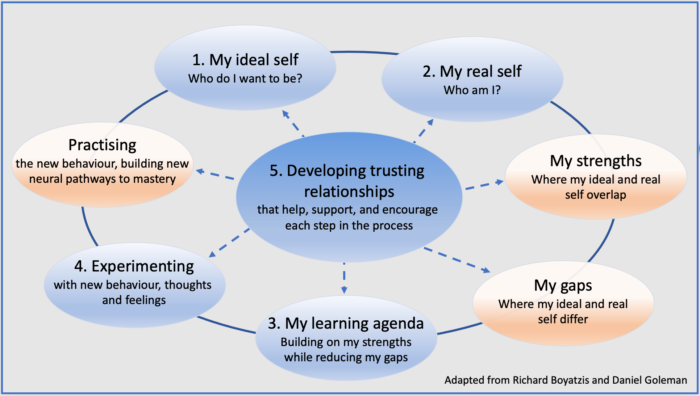
Applying ICT to develop your strategic thinking requires a deliberate and focused approach. It’s about crafting a vision, understanding the current state, bridging the gap through strategic action, and creating a supportive environment for change. This method emphasizes the importance of learning and adapting as key components of strategic success.
A Taster into the next Course
Complexity and strategic thinking are deeply interconnected concepts, especially in today’s fast-paced, ever-changing environment. Complexity refers to the degree of interconnectivity and interdependence in systems or problems, where numerous components and variables interact in ways that can be difficult to predict. Strategic thinking, then, is the process of identifying long-term goals and determining the best approach to achieve those goals, especially in complex situations. It involves understanding the intricate dynamics at play, anticipating potential changes, and making decisions that navigate through these complexities effectively.
Over the duration of the upcoming courses, we will delve deeper into the concepts of complexity and strategic thinking, applying thinking frameworks like Systems Thinking, Design Thinking etc, to help unravel its confounding effects. Here is a taster for what is ahead.
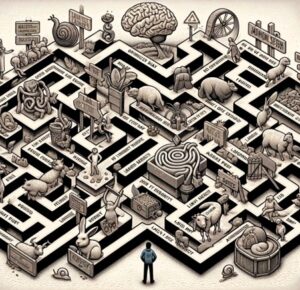
Understanding Complexity in Strategic Thinking
1. Systems Thinking: Recognising that problems and organisations are parts of wider systems with many interacting components. This perspective helps in understanding the broader implications of actions and decisions.
2. Dynamic Environments: Acknowledging that external and internal environments are constantly changing and that strategies must be adaptable and resilient to these changes.
3. Interdependencies: Realising how different elements within a system affect each other. In strategic thinking, this means understanding how decisions in one area of a business can impact others.
4. Emergence: Recognising that complex systems can give rise to new, unexpected phenomena. Strategic thinkers must be prepared to adapt to these unforeseen changes.
Applying Strategic Thinking to Complexity
1. Scenario Planning: Developing multiple, detailed scenarios of how the future might unfold to prepare for a range of possibilities. This method helps organisations navigate through uncertainty by considering various future states and planning accordingly.
2. Leveraging Analytics and Big Data: Using data analytics to understand complex patterns, predict future trends, and make informed decisions. Strategic thinkers use these insights to guide their actions and strategies.
3. Balancing Short-Term and Long-Term Goals: Strategic thinking involves balancing immediate needs with long-term objectives. In complex environments, it’s crucial to adapt short-term tactics while keeping the long-term vision in mind.
4. Continuous Learning and Adaptation: In a complex world, strategies must evolve. This requires a commitment to learning and an openness to change. Strategic thinkers foster a culture of continuous improvement and experimentation.
5. Engaging with Stakeholders: Effective strategic thinking in complex environments involves engaging with a broad range of stakeholders. This engagement can provide diverse perspectives and insights, helping to better understand the complexities and craft more robust strategies.
Skills for Strategic Thinking in Complexity
• Critical Thinking: Evaluating information and arguments critically, questioning assumptions, and considering alternative viewpoints.
• Creativity: Generating innovative solutions and approaches to complex problems.
• Flexibility: Being able to change plans and strategies as new information and situations arise.
• Communication: Clearly articulating strategic visions, plans, and changes to all stakeholders.
• Leadership: Inspiring and guiding teams through complex situations, fostering a culture of strategic thinking throughout the organisation.
Navigating complexity with strategic thinking requires a holistic view of situations, an acceptance of uncertainty, and a proactive approach to shaping the future. It’s about making informed, thoughtful decisions that steer organisations towards their long-term goals while managing the intricate dynamics of the present.

Exercises – Final Reflection in your personal journals
• Read Broadly: Delve into books, articles, and reports on a variety of subjects, including industry trends, global affairs, and innovative business strategies. This will broaden your understanding of different contexts and forces at play in your environment.
• Learn from Others: Engage with mentors, colleagues, and leaders within and outside your field. Discussions with people who have diverse perspectives can spark new ideas and expand your thinking.
• Set Clear Goals: Define what you want to achieve in the long term. Understanding your ultimate objectives allows you to align your daily actions and decisions with your broader goals.
• Practice Forward Thinking: Regularly ask yourself where you want to be in five, ten, or twenty years. Consider the trends and changes that may impact your goals and how you can prepare for them.
• Analyse Situations Deeply: When faced with a problem or decision, take the time to analyse the situation comprehensively. Look at the data, consider different angles, and weigh the pros and cons of each option.
• Seek Feedback and Critique: Open yourself up to feedback on your ideas and decisions. Constructive criticism can provide new insights and help refine your strategic thinking.
• Encourage Innovation: Allow yourself to think creatively about challenges and opportunities. Brainstorming sessions without immediate judgment of ideas can lead to innovative solutions.
• Embrace Diverse Thinking: Exposure to different cultures, industries, and disciplines can inspire creative approaches to problem-solving and strategy.
• Regular Review: Set aside time regularly to reflect on your decisions, the outcomes, and what you have learned from them. This practice can help you identify patterns in your thinking and areas for improvement.
• Journaling: Writing down your thoughts, strategies, and reflections can clarify your thinking and help you track your progress over time.
• Consider Different Outcomes: For important decisions, develop several scenarios based on different assumptions about the future. Analyze how each scenario might impact your goals and plan accordingly.
• Flexibility and Adaptability: Be prepared to adjust your strategies as new information becomes available or as situations change.
• Network Intentionally: Build and maintain relationships with individuals and groups who can provide insights, resources, and support for your strategic objectives.
• Collaborate: Look for opportunities to work on projects that require strategic thinking. Collaborating with others on complex challenges can sharpen your skills and broaden your perspective.
• Focus on What Matters Most: Learn to distinguish between tasks and projects that are truly important and those that are not. Prioritize your efforts on activities that contribute most to your strategic goals.
• Delegate Effectively: Understand that you cannot do everything yourself. Delegating tasks that others can do allows you to concentrate on strategic planning and decision-making.
Project Studies
Project Study (Part 1) – Customer Service
The Head of this Department is to provide a detailed report relating to the Strategic Decision Making process that has been implemented within their department, together with all key stakeholders, as a result of conducting this workshop, incorporating process: planning; development; implementation; management; and review. Your process should feature the following 12 parts:
01. Complex times – new thinking
02. Understanding our mindset
03. Biases & Heuristics
04. Our Thinking Audit
05. Personal Mastery
06. Intentional Change
07. The Ideal Self and Real Self
08. Creative Tension
09. Creating a Learning Agenda
10. Crafting your Learning Environment.
11. Build your trusted support network
12. Strategic Thinking for a Complex World
Please include the results of the initial evaluation and assessment.
Project Study (Part 2) – E-Business
The Head of this Department is to provide a detailed report relating to the Strategic Decision Making process that has been implemented within their department, together with all key stakeholders, as a result of conducting this workshop, incorporating process: planning; development; implementation; management; and review. Your process should feature the following 12 parts:
01. Complex times – new thinking
02. Understanding our mindset
03. Biases & Heuristics
04. Our Thinking Audit
05. Personal Mastery
06. Intentional Change
07. The Ideal Self and Real Self
08. Creative Tension
09. Creating a Learning Agenda
10. Crafting your Learning Environment.
11. Build your trusted support network
12. Strategic Thinking for a Complex World
Please include the results of the initial evaluation and assessment.
Project Study (Part 3) – Finance
The Head of this Department is to provide a detailed report relating to the Strategic Decision Making process that has been implemented within their department, together with all key stakeholders, as a result of conducting this workshop, incorporating process: planning; development; implementation; management; and review. Your process should feature the following 12 parts:
01. Complex times – new thinking
02. Understanding our mindset
03. Biases & Heuristics
04. Our Thinking Audit
05. Personal Mastery
06. Intentional Change
07. The Ideal Self and Real Self
08. Creative Tension
09. Creating a Learning Agenda
10. Crafting your Learning Environment.
11. Build your trusted support network
12. Strategic Thinking for a Complex World
Please include the results of the initial evaluation and assessment.
Project Study (Part 4) – Globalization
The Head of this Department is to provide a detailed report relating to the Strategic Decision Making process that has been implemented within their department, together with all key stakeholders, as a result of conducting this workshop, incorporating process: planning; development; implementation; management; and review. Your process should feature the following 12 parts:
01. Complex times – new thinking
02. Understanding our mindset
03. Biases & Heuristics
04. Our Thinking Audit
05. Personal Mastery
06. Intentional Change
07. The Ideal Self and Real Self
08. Creative Tension
09. Creating a Learning Agenda
10. Crafting your Learning Environment.
11. Build your trusted support network
12. Strategic Thinking for a Complex World
Please include the results of the initial evaluation and assessment.
Project Study (Part 5) – Human Resources
The Head of this Department is to provide a detailed report relating to the Strategic Decision Making process that has been implemented within their department, together with all key stakeholders, as a result of conducting this workshop, incorporating process: planning; development; implementation; management; and review. Your process should feature the following 12 parts:
01. Complex times – new thinking
02. Understanding our mindset
03. Biases & Heuristics
04. Our Thinking Audit
05. Personal Mastery
06. Intentional Change
07. The Ideal Self and Real Self
08. Creative Tension
09. Creating a Learning Agenda
10. Crafting your Learning Environment.
11. Build your trusted support network
12. Strategic Thinking for a Complex World
Please include the results of the initial evaluation and assessment.
Project Study (Part 6) – Information Technology
The Head of this Department is to provide a detailed report relating to the Strategic Decision Making process that has been implemented within their department, together with all key stakeholders, as a result of conducting this workshop, incorporating process: planning; development; implementation; management; and review. Your process should feature the following 12 parts:
01. Complex times – new thinking
02. Understanding our mindset
03. Biases & Heuristics
04. Our Thinking Audit
05. Personal Mastery
06. Intentional Change
07. The Ideal Self and Real Self
08. Creative Tension
09. Creating a Learning Agenda
10. Crafting your Learning Environment.
11. Build your trusted support network
12. Strategic Thinking for a Complex World
Please include the results of the initial evaluation and assessment.
Project Study (Part 7) – Legal
The Head of this Department is to provide a detailed report relating to the Strategic Decision Making process that has been implemented within their department, together with all key stakeholders, as a result of conducting this workshop, incorporating process: planning; development; implementation; management; and review. Your process should feature the following 12 parts:
01. Complex times – new thinking
02. Understanding our mindset
03. Biases & Heuristics
04. Our Thinking Audit
05. Personal Mastery
06. Intentional Change
07. The Ideal Self and Real Self
08. Creative Tension
09. Part 9
10. Crafting your Learning Environment.
11. Build your trusted support network
12. Strategic Thinking for a Complex World
Please include the results of the initial evaluation and assessment.
Project Study (Part 8) – Management
The Head of this Department is to provide a detailed report relating to the Strategic Decision Making process that has been implemented within their department, together with all key stakeholders, as a result of conducting this workshop, incorporating process: planning; development; implementation; management; and review. Your process should feature the following 12 parts:
01. Complex times – new thinking
02. Understanding our mindset
03. Biases & Heuristics
04. Our Thinking Audit
05. Personal Mastery
06. Intentional Change
07. The Ideal Self and Real Self
08. Creative Tension
09. Creating a Learning Agenda
10. Crafting your Learning Environment.
11. Build your trusted support network
12. Strategic Thinking for a Complex World
Please include the results of the initial evaluation and assessment.
Project Study (Part 9) – Marketing
The Head of this Department is to provide a detailed report relating to the Strategic Decision Making process that has been implemented within their department, together with all key stakeholders, as a result of conducting this workshop, incorporating process: planning; development; implementation; management; and review. Your process should feature the following 12 parts:
01. Complex times – new thinking
02. Understanding our mindset
03. Biases & Heuristics
04. Our Thinking Audit
05. Personal Mastery
06. Intentional Change
07. The Ideal Self and Real Self
08. Creative Tension
09. Creating a Learning Agenda
10. Crafting your Learning Environment.
11. Build your trusted support network
12. Strategic Thinking for a Complex World
Please include the results of the initial evaluation and assessment.
Project Study (Part 10) – Production
The Head of this Department is to provide a detailed report relating to the Strategic Decision Making process that has been implemented within their department, together with all key stakeholders, as a result of conducting this workshop, incorporating process: planning; development; implementation; management; and review. Your process should feature the following 12 parts:
01. Complex times – new thinking
02. Understanding our mindset
03. Biases & Heuristics
04. Our Thinking Audit
05. Personal Mastery
06. Intentional Change
07. The Ideal Self and Real Self
08. Creative Tension
09. Creating a Learning Agenda
10. Crafting your Learning Environment.
11. Build your trusted support network
12. Strategic Thinking for a Complex World
Please include the results of the initial evaluation and assessment.
Project Study (Part 11) – Logistics
The Head of this Department is to provide a detailed report relating to the Strategic Decision Making process that has been implemented within their department, together with all key stakeholders, as a result of conducting this workshop, incorporating process: planning; development; implementation; management; and review. Your process should feature the following 12 parts:
01. Complex times – new thinking
02. Understanding our mindset
03. Biases & Heuristics
04. Our Thinking Audit
05. Personal Mastery
06. Intentional Change
07. The Ideal Self and Real Self
08. Creative Tension
09. Creating a Learning Agenda
10. Crafting your Learning Environment.
11. Build your trusted support network
12. Strategic Thinking for a Complex World
Please include the results of the initial evaluation and assessment.
Project Study (Part 12) – Education
The Head of this Department is to provide a detailed report relating to the Strategic Decision Making process that has been implemented within their department, together with all key stakeholders, as a result of conducting this workshop, incorporating process: planning; development; implementation; management; and review. Your process should feature the following 12 parts:
01. Complex times – new thinking
02. Understanding our mindset
03. Biases & Heuristics
04. Our Thinking Audit
05. Personal Mastery
06. Intentional Change
07. The Ideal Self and Real Self
08. Creative Tension
09. Creating a Learning Agenda
10. Crafting your Learning Environment.
11. Build your trusted support network
12. Strategic Thinking for a Complex World
Please include the results of the initial evaluation and assessment.
Program Benefits
Project Management
- Complexity Leadership
- Adaptability & Agility
- Enhanced Productivity
- Resilience
- Process Improvement
- Strategic Risk Management
- Resource Optimisation
- Competitive Advantage
- Speed to Capability
- Failure Tolerance
Executive Leadership
- Strategic Decision-Making
- Navigating Complexity
- Communication
- Innovation & Creativity
- Critical Thinking
- Problem Solving
- Sustainability & Resilience
- Continuous Improvement
- Interdisciplinary Solutions
- Innovative Strategies
Governance
- Clear accountability
- Greater Transparency
- Risk Management
- Complex Problem Solving
- Ethical standards
- Conflict Resolution
- Social Inclusion
- Economic Growth
- Systems Thinking
- Identification of Root Causes
Client Telephone Conference (CTC)
If you have any questions or if you would like to arrange a Client Telephone Conference (CTC) to discuss this particular Unique Consulting Service Proposition (UCSP) in more detail, please CLICK HERE.
